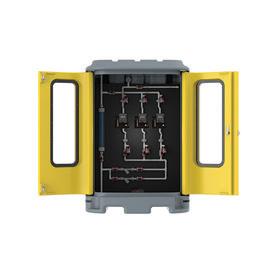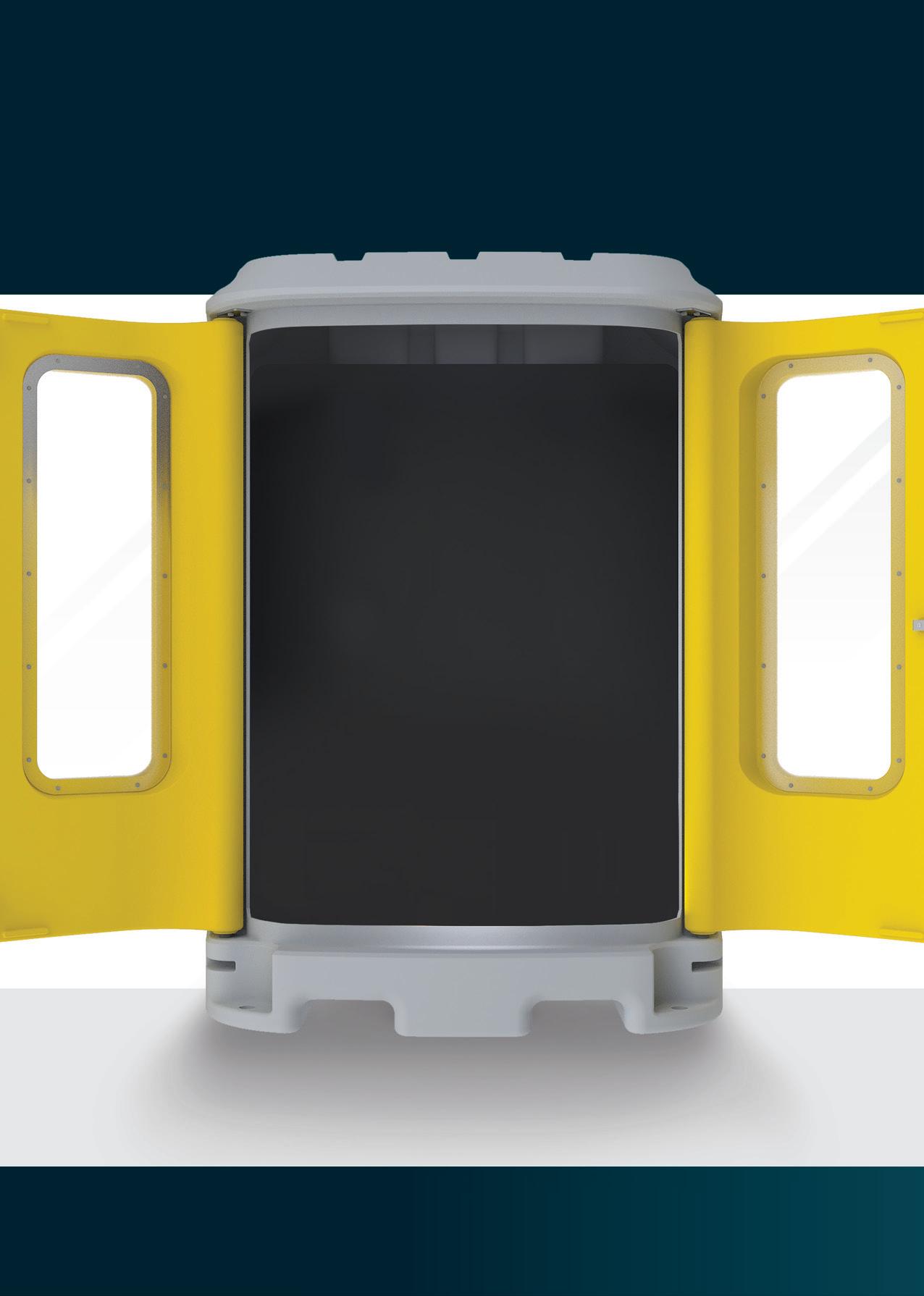
CEO SPOTLIGHT: THE WOMEN TAKING CHARGE INDUSTRY HARD AT WORK THROUGHOUT PANDEMIC
KANE THORNTON: CLEAN ENERGY CAN LEAD AUSTRALIA’S ECONOMIC RECOVERY

Engineering, Construction & Maintenance www.utilitymagazine.com.au Issue #28, November 2020
WATER SEWER ELECTRICITY GAS
Manufacturers & Suppliers of Gas & Water Pipeline Equipment

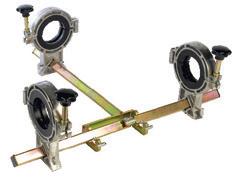


> Pipe clamps & Re-rounder > Scraping tools > EF Welders > Squeeze o tools

Caldertech o ers for sale and hire a range of products for all your electrofusion and butt welding needs. Our core products are used for connecting HDPE pipes, plus all associated tooling for cutting, preparing, clamping and maintaining pipe networks for the water and gas industries. In addition, we o er the support, training and servicing by our team in Australia.
OU R SER VI CES:
•
Pipe Scraping Tools
Pipe clamps 20mm - 1200mm
Electrofusion Welders
Pipe Squeeze Off Tooling
Pipe Cutting Equipment
•
Flow Stopping Equipment
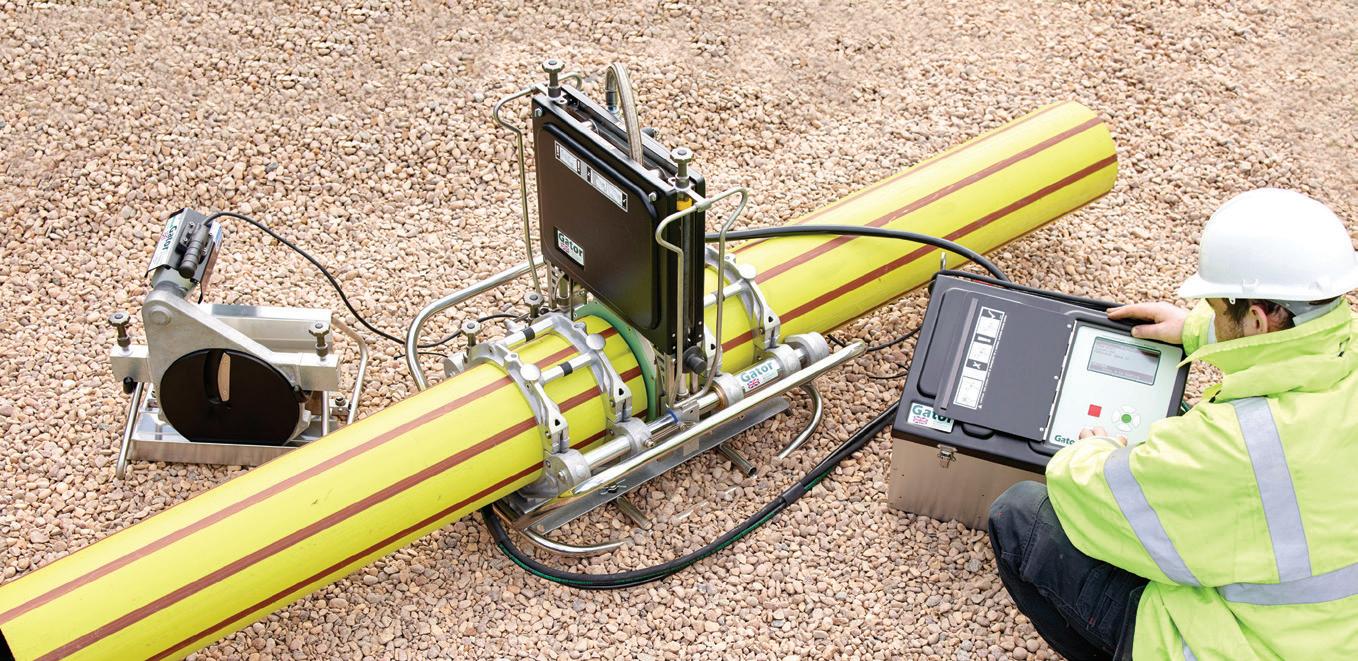
Have you tried the Automatic w ay?
The Gator Automatic butt Welder simplifies the butt welding process to give you a perfect weld every time!
Computer controlled with a step by step user interface ensures your joints are welded to standards with all weld data captured.
C all our team to arrange y o ur demonstration today!
caldertech.com.au
SPECIFICATIONS :
•
Four machines 63mm400mm
Computer controlled
•
On-board data logging heat, time and pressure
• •
•
Automatic Heater ejection
All Joints recorded
21 Global welding standards Fast clamping system
•
• • •
WA: (08) 9209 1132 QLD/NSW: (07) 3185 2175 VIC: (03) 8508 8155
• •
SALES + HIRE + REPAIRS



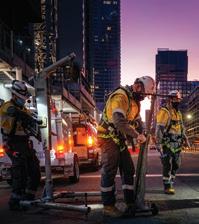

AFROM THE EDITOR
s we approach the end of a year, it’s natural to contemplate the events of the past 12 months. While COVID-19 has shattered the world as we know it, on reflection, positives can be found. The utility industry has been slow to embrace digitisation, but for many organisations, COVID-19 has expedited their digital transformation timeline and accelerated the adoption of digital ways of working.
Entering a new role can be daunting at the best of times, let alone during a time of extreme global upheaval, but Maree Lang, Managing Director of City West Water, has more than risen to the challenge.
Ms Lang was permanently appointed to the role in April 2020, at the height of the global pandemic, and Utility caught up with her to find out more about how the water corporation has continued to safely deliver essential water and sewerage services to its customers, even in the most difficult circumstances.
We were lucky enough to have the opportunity to interview another inspiring leader, Djuna Pollard, the first female CEO of Power and Water.
As the Northern Territory’s sole provider of electricity, water and sewerage services, Power and Water delivers essential services in some of the most challenging conditions in the world, including a vast landscape, regional and remote customers, cultural sensitivities and extreme weather events.
Since coming on board, Ms Pollard has wasted no time in getting stuck into the role, and plans to maximise the unique opportunities available to Power and Water as a multi-utility.
The profound impact of the pandemic is still being felt by many, although the conversation is shifting towards looking at ways to restart the economy in the aftermath of the COVID-19 crisis.
While the Federal Government seems to be backing a gas-led recovery, Kane Thornton, Chief Executive of the Clean Energy Council, argues that there is a significant opportunity for renewable energy and energy storage to be at the forefront of Australia’s economic recovery.
Mr Thornton writes that A Clean Recovery –the Clean Energy Council’s plan for increasing the penetration of renewable energy in Australia – could inject over $50 billion worth
of investment into the Australian economy and create tens of thousands of new direct jobs.
Another report, titled Clean Energy at Work, makes a compelling case for the renewable energy industry to replace many of the jobs lost due to the COVID-19 pandemic.
Periods of extreme adversity have historically served as a powerful impetus for innovation. While instinct often tells us to play it safe during difficult times, there are some that hear a call to action in the oft-repeated Machiavellian sentiment: “Never waste the opportunities offered by a good crisis.”
EnergyAustralia has not let the pandemic slow down its innovation initiatives, launching its new customer innovation platform, ON, which uses customer insights to develop solutions that are then trialled before becoming widely available.
Through ON, EnergyAustralia customers will play a key role in helping shape the retailer’s future products and services, with the retailer viewing ON as a true partnership with its customers.
Speaking of innovation, now more than ever, it's essential that we continue to recognise the achievements around us. Recognition is a powerful way for our society to continue forward, even when it feels like it’s at a standstill.
We've been inundated with requests about the 2020 Digital Utility Awards, which recognise the utility industry’s greatest achievements in the digitisation of utility networks, processes and practices across Australia. We were hoping to announce the winners at an in-person awards night before the end of the year, but with the ongoing COVID-19 restrictions, a live event just isn't possible.
On Thursday 22 October, we will be honouring the winners and finalists of the 2020 Digital Utility Awards at a virtual event, comprising industry presentations, networking and the much-anticipated awards ceremony.
Plans are also underway for Digital Utilities 2021, which will take place in March. Keep an eye out for lots of exciting announcements related to this event, as we take the learnings from this year’s virtual conferences on board and strive to deliver the industry’s mustattend event.
I couldn’t sign off the final edition for the year without saying ‘stay safe’ – the catchphrase of 2020 – and I hope 2021 is a less challenging year for us all.
Charlotte
Editor
UTILITY • NOVEMBER 2020 Published by Cover image shows CitiPower
second lockdown.
credit: CitiPower/Nina Ivanovic Engineering, Construction & Maintenance www.utilitymagazine.com.au Issue #28, November 2020 UTILITY MAGAZINE NOVEMBER 2020 CEO SPOTLIGHT: THE WOMEN TAKING CHARGE INDUSTRY HARD AT WORK THROUGHOUT PANDEMIC KANE THORNTON: CLEAN ENERGY CAN LEAD AUSTRALIA’S ECONOMIC RECOVERY WATER SEWER ELECTRICITY GAS Editor Charlotte Pordage Journalist Eliza Booth Imogen Hartmann Designer Manager Alejandro Molano Designer Jacqueline Buckmaster Business Development Managers Rima Munafo Brett Thompson Marketing Associate Radhika Sud Marketing Assistant Stephanie Di Paola Publisher Chris Bland Managing Editor Laura Harvey Monkey Media Enterprises ABN: 36 426
St
welcome November 2020
crews conducting pit inspections beneath Melbourne CBD during the
Photo
734 954 204/23–25 Gipps
Collingwood VIC 3066 P: (03) 9988 4950 monkeymedia.com.au info@monkeymedia.com.au utilitymagazine.com.au info@utilitymagazine.com.au ISSN: 2203-2797
Pordage
ISSUE 28 1
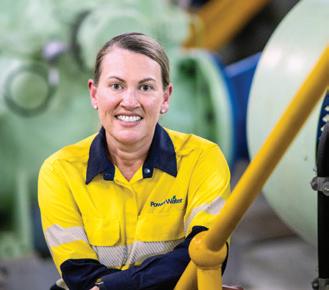



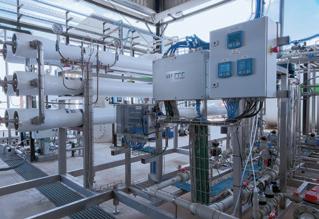
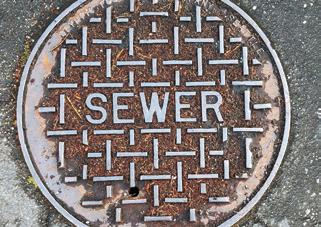
HORIZONTAL DIRECTIONAL DRILLING (HDD)
2
EnergyAustralia’s ON incubates household energy for the future 42 What happens when product developers and customers get together to look at how household energy could be better? Easier, more modern energy services that save customers time and money. Through its new customer innovation platform, EnergyAustralia customers will be able to participate in trials to help shape the retailer’s future products and services. Blazing the trail: in conversation with Power and Water’s first female CEO 20 Partnership in change ................ 24 Leadership in the time of COVID-19 .................. 26 Diversity and innovation go hand in hand 28 Keep it clean: how renewables can lead the recovery from COVID-19 32 Networks Renewed: an Australian-first voltage management trial 36 Waste not, want not – biogas powering a clean, green energy future 38
Crucial research helps keep sewer corrosion at bay 60 Concrete is the most commonly used material in sewers, especially for large sewer pipes, which can be attributed to its strength, durability and relatively low maintenance costs. However, due to the nature of concrete and the unique sewer atmosphere, corrosion of concrete pipes and associated infrastructure (e.g. manholes and pumping stations) has been widely recognised as a significant challenge for the utility industry. Operational efficiency for wastewater infrastructure 64 PIPELINE INTEGRITY & LEAK DETECTION Reverse osmosis membrane protection with automated monitoring 68 Townsville City Council is investigating water pressure using the Taggle Network ........... 70 Digital water metering: the future of water management 72 Brand new pig test headers available to rent 76
CONTENTS
CORROSION
HDD assists Heathcote sewer upgrade 78 Delivering for the future: sustainable urban infrastructure management 80 According to a prediction by UN-Habitat – the United Nations program for human settlements and sustainable urban development – approximately two thirds of the world’s population will be living in urban areas by 2050, bringing a distinct set of challenges and opportunities to the area of urban development. 68 78 60 42 32 20 UTILITY • NOVEMBER 2020 WWW.UTILITYMAGAZINE.COM.AU
RETAIL, BILLING & CRM
WOMEN IN UTILITIES RENEWABLES



November 2020 ISSUE 27 3 56 50 In each issue Welcome from the Editor ������������������������������������������������������������������������������������������������������������� 1 A word from Energy Networks Australia ���������������������������������������������������������������������������������� 4 A word from WSAA ����������������������������������������������������������������������������������������������������������������������� 6 News briefs ������������������������������������������������������������������������������������������������������������������������������������ 8 Advertisers’ index ���������������������������������������������������������������������������������������������������������������������� 84 Editorial schedule ���������������������������������������������������������������������������������������������������������������������� 84 Powering Sydney’s Future: bringing the city's aging electrical infrastructure up to date .................................... 46 A quick Q&A with Cybertec Company Director Mark Irwin ..................... 48 Optimising field operations with rugged mobility solutions 50 Safety first: robot enables next-generation asset inspections 52 The importance of monitoring TOC and COD in wastewater treatment 54 The road to resiliency: examining the impact of severe events on Australia’s energy grid 56 The devastating east coast bushfires of last summer, combined with the COVID-19 pandemic are among recent examples of increased extreme events ravaging Australian communities and placing increased pressure on utility companies to respond with greater network resilience and flexibility. 46 82 UTILITY • NOVEMBER 2020 WWW.UTILITYMAGAZINE.COM.AU TRANSFORMERS & SUBSTATIONS SAFETY DISASTER MANAGEMENT
FAIR SOLAR, FAIR VOLTAGE
By Dor Son Tan, Head of Distribution, Energy Networks Australia
The growing popularity of household solar creates a challenge of balancing voltage and keeping costs down for customers.
In May 2020, the UNSW Centre for Energy and Environmental Markets released a report on the state of voltage in the distribution network and its relationship to the growing deployment of distributed photovoltaics.
This work was requested by the Energy Security Board and based on information provided by Solar Analytics of about 12,000 sites.
The study found that in the acceptable range of voltages (between 216V and 253V), most networks in Australia generally sit on the higher end of the spectrum. While this may be a shock to pundits, it is a well-known fact that networks have been working hard, with industry, to manage distributed energy resources (DER) for some time.
The report highlighted:
• The lack of low voltage visibility
• The voltages of the sample (~12,500 sites) tend toward the upper bounds (closer to 253V)
• A correlation between solar export and high voltages
ARE VOLTAGES TOO HIGH?
If they’re above 253V then yes, but otherwise it depends.
For solar PV owners who live next to each other, don’t use much energy at home, don’t have home batteries and are keen to export everything they generate, then higher voltages are bad.
However, if you live further down the end of a feeder, don’t have solar panels, and want to run your TV, oven and air conditioner on a hot day, then voltages on the upper end of the range are in fact very good. This is because the higher levels provide the headroom for voltage to decrease as demand increases: increases in demand can cause voltage to drop, and if there is an insufficient buffer, then voltage can fall below the acceptable range, triggering outages.
WHAT ARE NETWORKS DOING ABOUT HIGH VOLTAGES?
Networks are very aware of voltage issues and are developing and implementing a range of innovative solutions, including:
• Ongoing upgrades to network equipment, specifically for dynamic voltage regulation
• Development of “solar sponge” tariffs in South Australia
• Increased investment in data analytics to drive state estimation in Queensland
• Unlocking actionable insights from smart meter data in Victoria for targeted solutions
• Working with industry to develop the standards and guidelines needed for future networks
• Working with customers and market bodies to create more appropriate rules for the changing energy system
KEEPING COSTS DOWN
Controlling cost is a key part of any responsible business. Its importance gets magnified when those costs also impact the power bills of almost ten million customers who don’t always want the same things. It also means that hard decisions must be made about what a business can and cannot invest in.
But this doesn’t automatically mean no one gets what they want. Many networks have heard that their customers want investment to make the grid accept more solar exports. Feedback from CitiPower Powercor’s customers has resulted in an investment proposal to increase allowable solar exports.
Networks’ purpose is to provide an essential service (safe, affordable and reliable power) to all customers; this includes people who own rooftop solar and those who do not.
Unfortunately, the network wasn’t designed so that all solar PV owners could export into the grid freely. If networks could allow unlimited solar export without voltage or cost implications, they would.
While solar PV installations are a rapidly increasing feature of our distribution networks, it is important to note most customers don’t have solar PV.
As the uptake of rooftop solar and other renewable energy grows, networks want to support customers’ choices, but this is a massive task that needs all facets of the industry working together and not at odds, to steer it towards a better outcome.
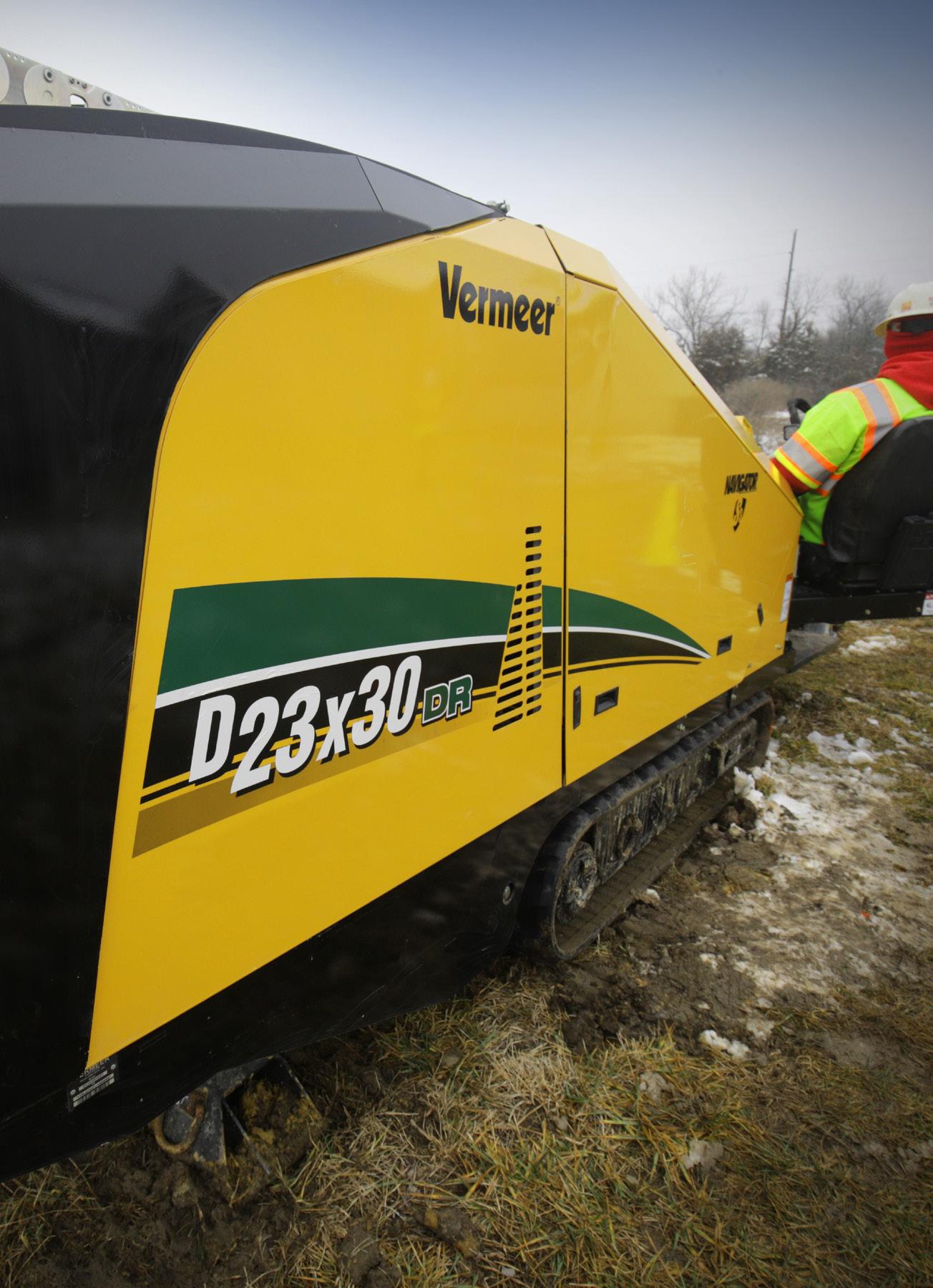
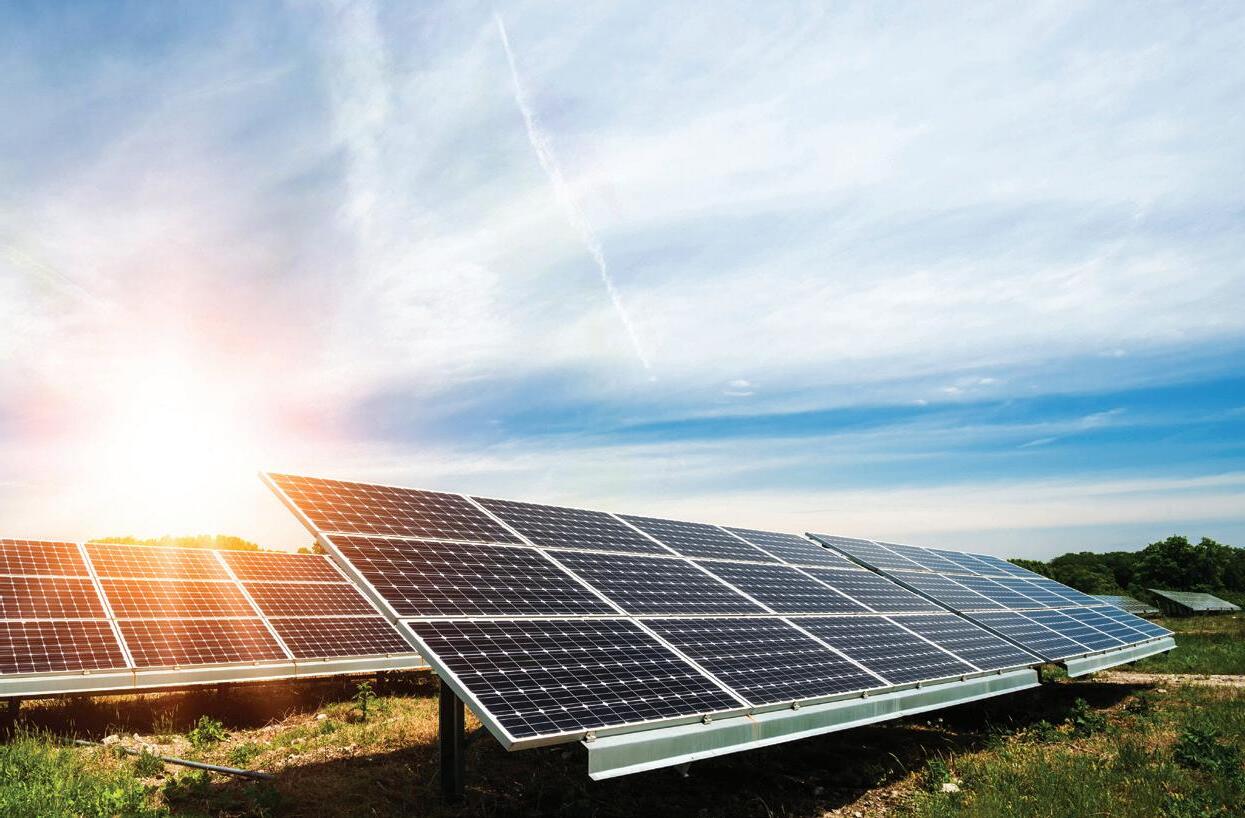
SECTION 4
A WORD FROM ENERGY NETWORKS AUSTRALIA
REDEFINED THE NEW D23X30DR S3 ROCK DRILL

THE COMPACT ROCK DRILL TO CONQUER ALL TERRAIN
The D23x30DR S3 Navigator® offers the latest dual rod technology in a narrow (141cm) yet powerful machine that enables operators to confidently and efficiently maneuver through rock on tight jobsites. It continues the legacy of the S3 badge—Speed, Simplicity and Sound levels—and adds rock capability, plus multiple rod options.
Australia
Vermeer and the Vermeer logo are trademarks of Vermeer Manufacturing Company in the United States and /or other countries. © 2020 Vermeer Equipment Holdings. All Rights Reserved. Overseas model shown. VERMEERAUSTRALIA.COM.AU | 1300 VERMEER
A WORD FROM WSAA
ALL OPTIONS ON THE TABLE: URBAN WATER SUPPLY OPTIONS FOR AUSTRALIA
Both 2019 and 2020 will be remembered for many reasons – of course the COVID-19 pandemic, but also bushfires, drought and floods. With many towns and cities on water restrictions and some requiring water carting, the relief was palpable when the rain came earlier this year.
We know that droughts and floods are a fundamental feature of Australia’s history and will continue to be part of our future. Add to this climate change and rapid population growth, and the importance of long-term water security planning has never been more important.
Integral to this planning is having all options on the table for consideration by local communities. No water supply option on its own is likely to meet all the needs of a city or regional town; the reality is that a combination of options needs to be considered. With decreased stream flows into rivers and dams, our reliance on rainfall-dependent water supply options is a risk to the water security of our cities and communities.
Our latest report, All options on the table – urban water supply options for Australia, aims to inform water security discussions with the community and stakeholders, and increase understanding around the attributes and costs of different water supply options.
This report collates and updates the latest available data from existing and newly planned projects and outlines contemporary and consistent information on each option. Existing information about Australian water supply options is limited, often outdated and not easily accessible.
Median levelised costs estimated for each water supply option in our dataset ranges from $0.40 per kilolitre to $20 per kilolitre, with most options below $5 per kilolitre.
Surface water remains among the lowest cost options, and dams are an important part of our water supply portfolio. However, these options are high-risk investments as they rely on rainfall and are less resilient to climate change than other options. Our analysis found the cost of water from purified recycled water for drinking is comparable to water from seawater desalination.
Every urban community has its own context, but all options for water supply should be on the table for those communities to consider and support. Irrespective of
the source of water, Australian water utilities have a responsibility to provide their communities with high-quality water that meets the requirements of the Australian Drinking Water Guidelines

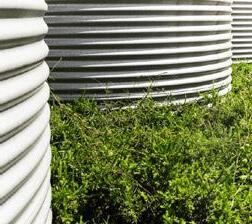

new projects becomes available. We thank all of those who provided the project data and case studies for this report and acknowledge the contribution of Marsden Jacob Associates for its data collection analysis.
UTILITY • NOVEMBER 2020 WWW.UTILITYMAGAZINE.COM.AU
6
you have any questions, please contact Erin Cini, Manager Liveable Communities, on erin.cini@wsaa.asn.au
If
ALL OPTIONS ON THE TABLE
WATER SUPPLY OPTIONS FOR AUSTRALIA
URBAN
RADAR ULTRASONIC IS THE BETTER


80 GHz level sensor with fixed cable connection (IP68)
$741
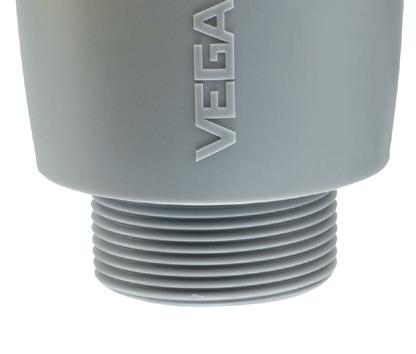
All advantages of the radar technology:
www.vega.com/vegapuls
VEGAPULS C 11
W-LAB MAKING STRONG PROGRESS TO BUILD A TECHNOLOGY ROADMAP FOR THE LOCAL WATER INDUSTRY
In March 2020, the Water Services Association of Australia (WSAA) announced a new partnership with Isle Utilities and ThinkPlace – W-Lab – 'a partnership which will deliver an industry-leading Innovative Technologies Program for WSAA and its members'.
WSAA Executive Director, Adam Lovell, said, “W-Lab has the potential to launch WSAA and our members into a global network which will drive innovative, technological solutions to overcome future industry challenges. W-Lab will offer even more opportunities for utilities to collaborate through access to Isle’s global database of technologies from industry sectors all over the world.”
Much has happened since the March announcement, with the conduct of a Digital Ideation Summit in June involving 100 water professionals and the recent conclusion of a series of online 'Launch Pads', which have refined the path that Australian and New Zealand water utilities wish to take and has defined some of the specific challenges that water utilities of all sizes wish to overcome.
Mr Lovell added, “The strategy is being driven by a full cross-section of the management and staff of W-Lab members and their specific requirements. Feedback from the Launch Pad sessions has been overwhelmingly positive. They have created an ideal situation for WSAA members to collaborate and to share their views.
“Utilities large and small have had a voice, which will mean that the solutions being developed will be tailored to Australian water utilities and to utility size, rather than a one-size-fits-all approach.
“W-Lab membership numbers now stand at 34 and with the recent addition of WaterNZ and the Orana Water Alliance, there are now 100 water utilities under the W-Lab banner.”
Dr Alex Cech, Chief Technology Officer at Isle Utilities (Asia-Pacific), said, "The Ideation Summit built initial momentum for the W-Lab program, with a clear goal to use technology innovation to create a new water future and to build something quite special for the water industry.
“A roadmap will be created to provide a direction to allow the eventual assessment and filtering of innovative technologies, and will present solutions to help WSAA members to make confident decisions in four defined innovation frames – customer, enterprise, flows and nature.
“The discovery of the individual requirements and the specific challenges of the local utilities through the W-Lab program will enable Isle Utilities and ThinkPlace to use their global reach to create bespoke solutions for the Australian water sector. It’s a very exciting time.”
Thomas Kuen, Manager Asset Management Research, Integrated Planning at Melbourne Water, said, “There is a significant benefit to Melbourne Water in collaboration
and collective knowledge. By working together with other utilities, we can share our resources, expertise and experience, which makes it easier for us to de-risk trials and should speed up any new services or new solutions that we decide to offer.
“W-Lab’s benefit is the value of the collaboration beyond a utility doing something like this on its own, which the big utilities could. The more people you can involve in the collaboration, the more benefits people tend to discover in talking with others who may have different views.
“There are also a number of intangible benefits that will come out of the process. You end up with a clear and consistent message to put out to the private sector of what’s important to the local water sector and why.
“I think where we can all benefit is by expanding the experience base. It helps all of us to identify and to build better business cases, which are created faster and cheaper.”
Dr Nicola Nelson, Manager, Research and Innovation at Sydney Water, said, “The involvement of experts from outside the water industry during the W-Lab Launch Pad process has been a real positive – it provides the opportunity to leverage the expertise of people outside the water industry and provide new insights on innovation for the water industry.
“When the roadmap is developed, being able to align it with budgeting and business planning processes will allow utilities to better identify relevant technologies and plan trials ahead of time.
“This will give us the ability as an industry to look at technologies which are more bespoke to Australian utilities and to collaborate more on potential trials, which will provide maximum benefit to the Australian water sector as a whole, as well as to individual utilities and their customers.”
Alayna Gleeson, Project Officer at Orana Water Utilities Alliance, said, “We represent eleven of the smallest and most remote water utilities in NSW. We thought it was important to be a part of the W-Lab program to be sure that regional NSW had a voice.
“It is a really big call for a small utility to trial a new technology or look at innovative ways to do things when there are limited resources available, so being part of W-Lab gives us an opportunity to see what other utilities may be doing with a view to adapting their successes for our situation.
“Through W-Lab we are looking to undertake joint projects and initiatives that can bring about cost savings, look at innovations which can overcome the challenges of remoteness for our alliance members and to assist with workforce development and training.”
Doug Moorby, Chairman of the Technical Committee of the Orana Water Utilities Alliance, said, “The W-Lab project has the potential to build competency and confidence in the water industry to attempt different things, to use innovative technology and to take a few risks, while taking the steps to mitigate these risks.
“I believe that W-Lab can help remote utilities to be more innovative in their thinking and in their business organisation. We can all bring something to the table, but W-Lab can help us bring a lot to the table.”
For more information, please contact Victoria Allen from WSAA at victoria.allen@wsaa.asn.au
UTILITY • NOVEMBER 2020 WWW.UTILITYMAGAZINE.COM.AU 8 NEWS
SYDNEY WATER ANNOUNCES DELIVERY CONSORTIA PARTNERSHIPS
Sydney Water has begun a ten-year partnership with three regional delivery consortia as part of its new Partnering for Success delivery model for all water and wastewater infrastructure across Sydney, the Blue Mountains and Illawarra.
The three delivery consortia – Confluence Water, Delivering for Customers, and the West Region Delivery Team –commenced under the new partnership model on 1 July 2020.
Sydney Water Managing Director, Roch Cheroux, announced that over the next ten years, Sydney Water will invest at least $4 billion in infrastructure, supporting more than 400 jobs, which is expected to grow to 1,200 over the coming years.
“This is a great example of how Sydney Water is working with the private sector to bring world’s best practice in service delivery to our customers and build a resilient and future-proofed water network,” Mr Cheroux said.
“Each region will now have a dedicated and fully-integrated team, enabling us to build stronger relationships with residents, businesses, councils and local infrastructure providers, to get the best results for our customers, community and the environment.
“The new model will continue to support the wider supply chain and drive competition for small businesses as they will be able to bid for a significant stake in projects through shared purchasing.




“These long-term arrangements have enabled the regional teams to build a pathway of skilled resources to support the needs of a growing city; with the cultural and gender diversity to build a strong integrated workforce.
“From apprenticeship programs through to engagement with universities, the future skills and resources will be an ongoing legacy of the program.
“The regional-based model will help deliver further efficiencies, improve network resilience and deliver the services we know our customers need and want.”
The Regional Delivery Consortia (RDC) include:
North RDC – Confluence Water
• Broadspectrum
• Downer Utilities Australia
• Jacobs
South RDC – Delivering for Customers (D4C)
• Comdain Infrastructure
• John Holland
• Lendlease Services
• WSP
West RDC – West Region Delivery Team
• Stantec
• Atlas Personnel Services
• Abergeldie Contractors
• Fulton Hogan Industries
• Programmed Facility Management




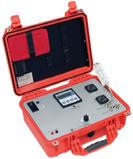
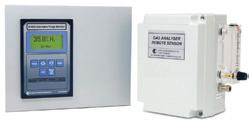








UTILITY • NOVEMBER 2020 WWW.UTILITYMAGAZINE.COM.AU 9 NSW Ph: 02 8197 2825 WA Ph: 08 9201 0948 QLD Ph: 07 3333 2825 SA Ph: 03 9017 8225 Head Office: Unit 20, 51 Kalman Drv Boronia VIC 3155 Ph: 03 9017 8225 Fax: 03 9729 9604 www.ams-ic.com.au sales@ams-ic.com.au AMS Instrumentation & Calibration Pty Ltd Analytical Process Division Oxygen Analysers, Thermal Conductivity Analysers, NDIR Analysers, Multigas Analysers, OEM Analysers U.V Absorption Conductivity pH / ORP Colour Industrial Water Analysers and Liquid Analytical Products (pH, Conductivity, ORP, Dissolved Oxygen, etc) Oxygen Analysers, Relative Humidity Sensors and Meters, Dewpoint Measurement NEWS

GOVERNMENT FUNDS ARENA FOR TECHNOLOGY DEVELOPMENT
The Federal Government has announced a $1.9 billion investment package for the Australian Renewable Energy Agency (ARENA) that will secure its future beyond 2022 and allow it to continue its work to support lowemission technologies across the innovation chain.
Prime Minister, Scott Morrison, said the government is supporting the next generation of energy technologies with an extra $1.62 billion for ARENA to invest, as well as expanding the focus of ARENA and the Clean Energy Finance Corporation (CEFC) to back new technologies that will cut emissions in agriculture, manufacturing, industry and transport.
The government will provide ARENA with guaranteed baseline funding of $1.43 billion over ten years. ARENA’s baseline funding will be supplemented in two ways:
• Together with the Clean Energy Regulator, ARENA will be approved to deploy a portion of the $2 billion Climate Solutions Fund
• ARENA will also become a clean technology grants hub for future initiatives, with a new $193.4 million provided to deploy targeted programs
“Our JobMaker plan is about protecting and creating the jobs of today and positioning Australia for the jobs of the future, which is why our investment in new technologies is so crucial,” Mr Morrison said.
“Australia is in the midst of a world-leading boom in renewable energy, with over $30 billion invested since 2017.




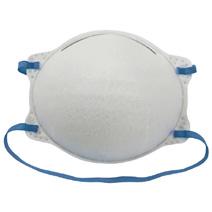

"Solar panels and wind farms are now clearly commercially viable and have graduated from the need for government subsidies, and the market has stepped up to invest.
“The government will now focus its efforts on the next challenge: unlocking new technologies across the economy to help drive down costs, create jobs, improve reliability and reduce emissions.
“This will support our traditional industries –manufacturing, agriculture, transport – while positioning our economy for the future.
“These investments create jobs and they bring new technologies into play.
“This will not only cut emissions, but deliver the reliable energy Australia needs while driving down prices for homes and businesses.”
ARENA Chair, Justin Punch, said that he was pleased that ARENA is seen as a key delivery agent for the Australian Government.
“It is critically important that through agencies like ARENA, we bring to bear the most effective tools and technologies to support the clean energy transition and help Australia reduce its emissions,” Mr Punch said.
ARENA CEO, Darren Miller, welcomed the new funding and an ongoing role for the agency.
“We are delighted to see ARENA’s important role acknowledged with new funding, and we welcome a new era for ARENA,” Mr Miller said.


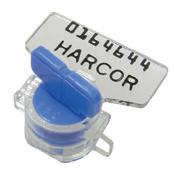




UTILITY • NOVEMBER 2020 WWW.UTILITYMAGAZINE.COM.AU 10 NEWS harcor.com.au sales@harcor.com.au for more information METER SECURITY SEALS harcor.com.au Master Security Licence No. 407319937 For More Information Visit Expose Unauthorised Access Trackable Serial Numbering Email sales@harcor.com.au RELIED UPON SINCE 1969 PROTECTIVE SUPPLIES Over 245 PPE Products Available Custom Printing Option
Does your DC power system fall short?

I f the re ’ s one t hin g you don’ t want to take a chance on, it’s the ability of yo u r DC power system to protect your critical a sse t s. O ur D C power sy stem s are designed to meet Australian standards and to delive r maxi mu m longevity. By custom designing every s y stem, w e provide en gi ne ered sol u t ions t hat me et t h e unique tech nical re quirements of yo u r si te. T h is in n ovat ive ap proach combined with our maintenance support m eans we le ave no t h ing to c h anc e when it comes to protecting you r cri ti ca l a sse t s.
To le arn more about our DC power systems and ma intenance ser v ices, v is it o u r website.
F or enquiries call 1300 364 877 www.intelepower.com.au
The first Choice for Stored Energy Solutions
“There is still much work to be done but with an experienced team, industry knowledge and strong networks across a range of technologies and sectors, ARENA is well positioned to support Australia’s energy transformation and emissions reduction goals.”
Over its lifetime, ARENA has helped to improve the competitiveness of renewable energy technologies such as large-scale solar, grid-scale batteries, pumped hydro, bioenergy, distributed energy technologies and hydrogen.
Since 2012, ARENA has supported 543 projects with $1.58 billion of funding that has leveraged nearly $5 billion in additional private and public sector investment.
As technologies have matured, ARENA said its focus has evolved from supporting pure renewable energy generation technologies to assisting with the integration of these technologies to support the operation of the system with ever-increasing shares of variable renewable energy.
ARENA’s current investment priorities include a focus on integrating renewables into the grid, accelerating the uptake of hydrogen and supporting industry to reduce emissions.
“Technology and innovation are critical to the energy transition, and to Australia’s efforts to reduce emissions and create new economic opportunities,” Mr Miller said.
“ARENA has played a key role in reducing the cost and increasing the supply of renewable energy for the past eight years.
“We look forward to continuing this important work with the next generation of energy technologies.”
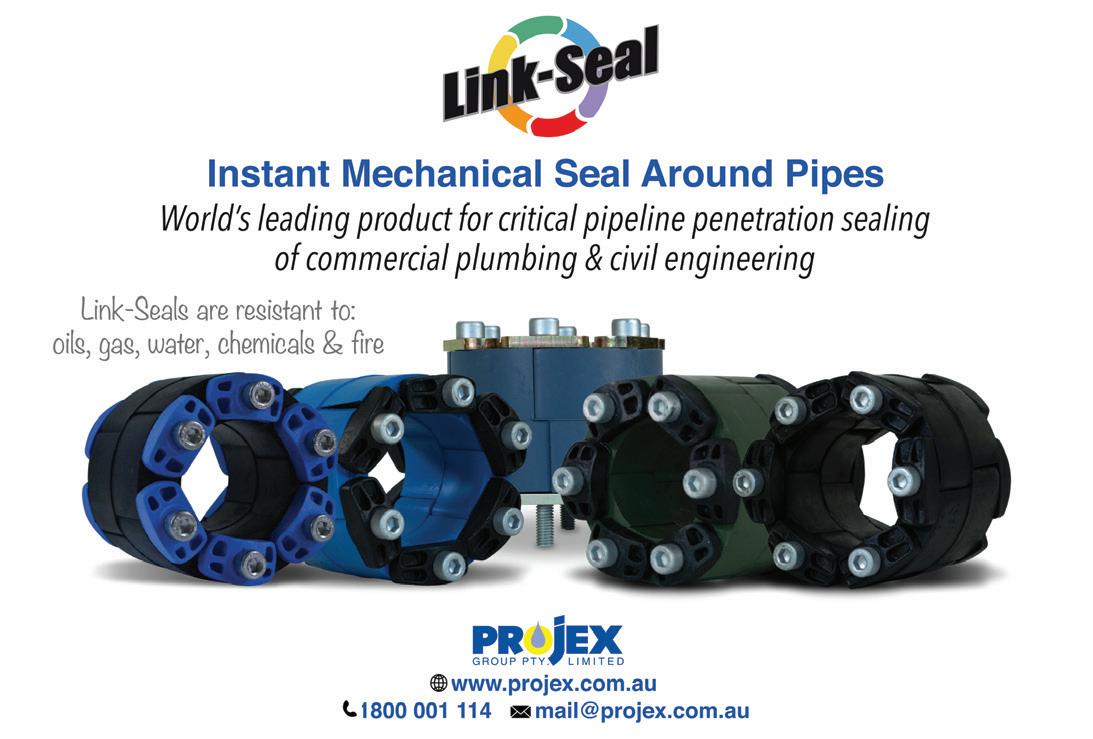
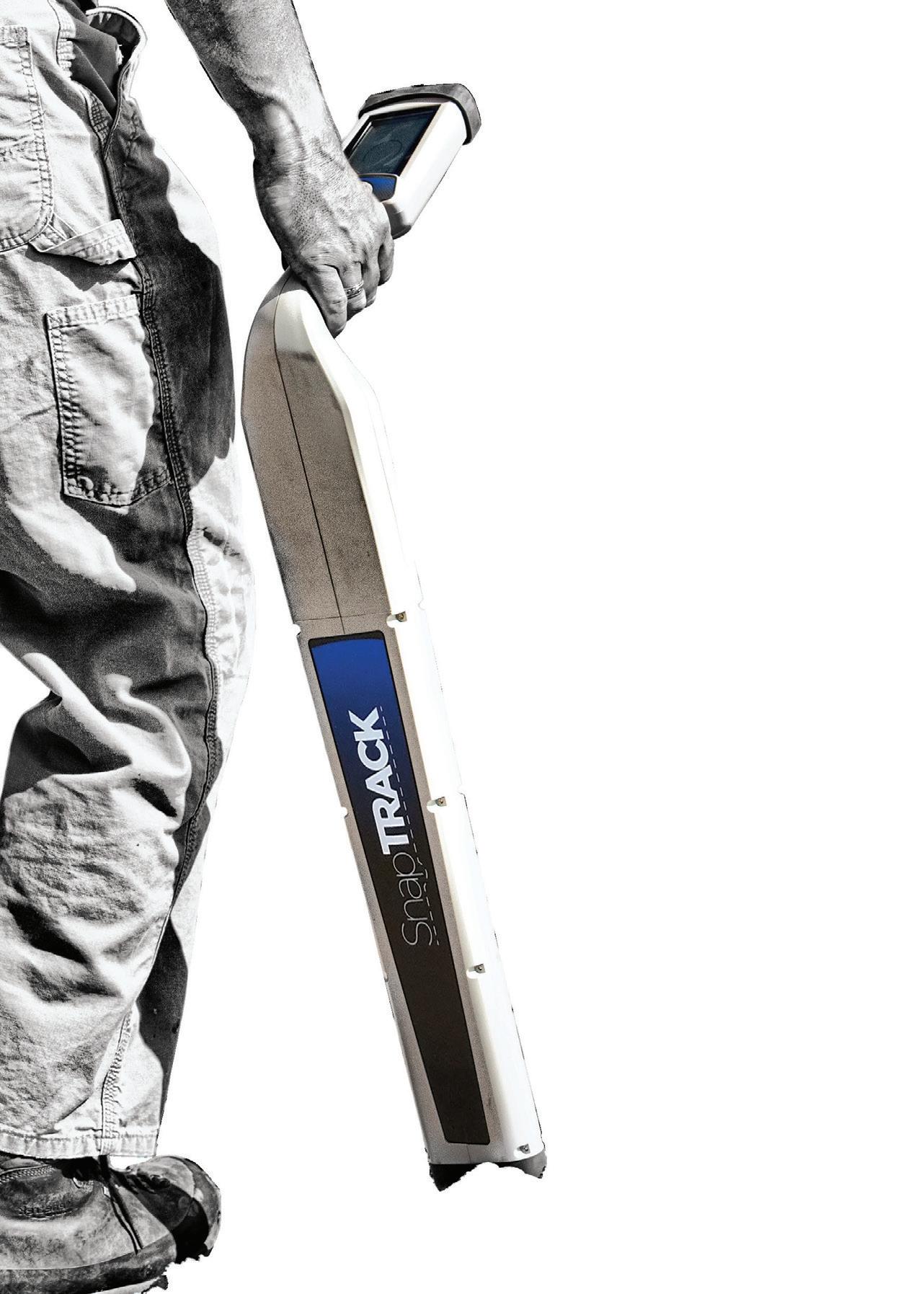

UTILITY • NOVEMBER 2020 WWW.UTILITYMAGAZINE.COM.AU 12 NEWS

Simple, Accurate & Affordable PRECISION LOCATING SYSTEM
JEMENA DEVELOPS APP TO GAIN INSIGHTS FROM SMART METER DATA

Jemena and Deloitte have teamed up in the development of a new cloud-based application on Amazon Web Services (AWS) that provides insights from Jemena's smart meter data to assist consumers with their energy decisions.
Jemena delivers electricity to more than 360,000 residential and business customers across Melbourne’s north-west.
By leveraging the cloud-based application, Jemena said it can better understand customer consumption habits, which has allowed it to personalise its communications to help support Victorian electricity customers during COVID-19.
Commencing in July 2019, Jemena and Deloitte, an AWS Partner Network (APN) Premier Partner, collaborated to build an application on AWS, leveraging machine learning services including Amazon SageMaker, a fully managed service that makes it easy to build, train and deploy machine learning models quickly.
Jemena and Deloitte used Amazon SageMaker to develop algorithms and machine learning models, which are applied to smart meter data collected by Jemena to uncover commonalities and differences in how its customers consumed electricity.
Andrew Davis, Jemena General Manager for Electricity Strategy and Commercial, said, “We looked at consumption behaviours such as how customers’ energy use changes during the day, peak usage hours, and how weather conditions such as extreme heat impact energy use for our residential and small business customers.”
These consumption insights helped Jemena identify patterns in energy usage, and in turn provide more relevant communications and advice to its customers such as energy saving tips.
With more people required to work from home during the COVID-19 pandemic to preserve the health and safety of the

Innovative Water Solutions
Through its innovative solutions, Veolia Water Technologies enables industry, local authorities and citizens to optimize their use of resources for more efficient, environmentally-friendly and socially responsible outcomes.
We understand the importance of increasing the value of water and we do so by supplying high quality water, treating and reusing wastewater, producing and/or recovering energy, extracting raw materials and capitalizing on valuable byproducts.
www.veoliawatertechnologies.com.au

UTILITY • NOVEMBER 2020 WWW.UTILITYMAGAZINE.COM.AU 14 NEWS
WATER TECHNOLOGIES
© Veolia Photo Library
Enterprise-Grade Internet & Phone for Remote Sites
Activ8me Business Services offers communications solutions for utility operators in remote Australia.
Our solutions include:
Unlimited data plans
Low contention rates
Fixed or portable hardware
Solar, self-sufficient options
Optional P2P, Extended Wi-Fi and Public Wi-Fi
Installation & Field Support Australia-wide
Our solutions overcome the communications limitations of operating in remote locations.
With our internet services, operators can access Cloud-based applications, integrate remote monitoring and utilise M2M/IoT technologies.
No matter your challenge, we offer scalable solutions to meet any requirement. Our in-house team can even design a bespoke solution to fit your needs.
For more information contact our Corporate Sales team or visit: business.activ8me.net.au


Supporting 13 22 88 Contact Us Business Services
community, many customers are unaware of the extent of the increase in their energy consumption.
Jemena is now leveraging the consumption insights generated by the application to deliver communications via SMS, direct mail and email to tailor support to customers’ individual energy needs and allow them to take more control of their energy usage, avoiding the potential for bill shock.
By using AWS services such as Amazon Athena to analyse large amounts of historical smart meter data, and Amazon SageMaker to gain more accurate customer insights into Jemena’s customer segments using machine learning, Jemena has also been able to identify at-risk customers who may not be digitally engaged, to ensure it can change its communications approach to direct mail so they are informed about their energy consumption.
“With years’ worth of smart meter data sitting in our data warehouses, we looked at how to migrate this information to the cloud and use it in an intelligent way to empower our electricity customers at a time that they need it most,” Mr Davis said.
“Using these smart meter insights, we have been able to notify customers with significantly higher monthly consumption via SMS with a link to keep track of their energy usage through Jemena’s online customer platform, the Electricity Outlook Portal.
“Direct mail letters are sent to customers that have significantly decreased their energy usage with information about bill payment support and a free over-the-phone energy advice service.
“Our customers have told us they want more control over their energy consumption and more personalised communications.
“Working with Deloitte and AWS has allowed us to deliver this commitment to our customers. By changing the way we analyse our smart meter data and leveraging advanced machine learning technology, not only have we opened up new opportunities to support customers during COVID-19, it will also help drive our long-term strategy to improve the customer experience.”
Jahanzeb Azim, Deloitte Analytics and Cognitive Partner, said, “Jemena had over eleven billion consumption data points from household smart meters to analyse by leveraging the scale of AWS – drawing a parallel to Netflix viewing time, that is equal to three million hours or 350 years’ worth.
“We were eager to collaborate with Jemena and leverage AWS to turn this significant smart meter data asset into information that could help them better understand their customers’ energy usage and drive better business decisions.”
Karl Durrance, AWS Director of Enterprise in Australia and New Zealand, said, “As we adapt to significant changes in how we live and work this year, many organisations are leveraging technology such as machine learning to respond to customers’ needs, and drive product and service innovation.
“We are excited to collaborate with our APN Premier Partner, Deloitte, to help Jemena leverage the power of data to create personalised experiences and help Victorians to manage their energy consumption.”





UTILITY • NOVEMBER 2020 WWW.UTILITYMAGAZINE.COM.AU 16 NEWS Unit 2 / 85 Heatherdale Road, Ringwood Vic 3134 PO Box 2500, North Ringwood Vic 3134 P: (03) 9872 4596 | F: (03) 9872 3293 | E: info@pezztrenchless.com.au | W: pezztrenchless.com.au Still the market leaders in laser guided microtunnelling Bore diameters from 325mm up to 2800mm Used for gravity sewers, water mains, storm water, gas and electrical conduits. Specialists in “free bore”, sleeve boring and pipe jacking in all sizes The Next Generation in Trenchless Technology



✓ MANHOLE REFURBISHMENT
• Structural rehabilitation of access chambers
• Relining of pipe connections, channels, benching and walls with PVC for 100% gas tight lining
• Stops further deterioration from gas attack
• Patented technology
• 50 year guarantee
✓ SEWER PUMP STATION REFURBISHMENT
• Structural relining of sewer pump stations
• PVC lining provides complete corrosion protection
• Replacement of damaged pipework, mechanical components and lids
• Patented technology
• 50 year guarantee




✓ 3D LASER SCANNING AND ASSET INSPECTION
• 3D scan of sewer asset
• Assess structural integrity of asset
• Determine amount of concrete deterioration
• Detailed interactive report with 3D modelling
• High definition video footage and photographs





www.mcrobertcontracting.com.au 08 9411 0666 office.admin@mcrobert.com.au
BEFORE
BEFORE AFTER AFTER BEFORE

EnergyAustralia encourages customers impacted by COVID-19 to reach out
EnergyAustralia is urging households and small businesses financially affected by COVID-19 to reach out the moment they realise it might be more challenging to pay the next power bill.
Mark Collette, Chief Customer Officer at EnergyAustralia, said, “Please – don’t let the issue build up. The earlier people get in touch, the better we can help with payment plans and bill extensions.
“We can put people in touch with trained financial advisors to talk about their individual situation. And we can connect people with government support programs that they may not have known about.”
In response to COVID-19, EnergyAustralia has significantly ramped up its assistance to customers.
This has included expanding its EnergyAssist hardship program by more than doubling the size of the team to 70 agents, launching its Rapid Business Assist program for small businesses, hiring more team members to handle increased call traffic, and improving the ability of customers to self-serve using EnergyAustralia’s digital tools.
EnergyAustralia is supporting around 22,000 households through the EnergyAssist program, which offers payment extensions, instalment plans and assistance in getting in contact with a financial counsellor.
“Most importantly, debt collection or disconnection activity is suspended while a customer is participating in EnergyAssist. It’s our stay-connected guarantee,” Mr Collette said.
As part of EnergyAustralia’s new Rapid Business Assist program, eligible small businesses can obtain financial assistance, a free energy efficiency assessment, free disconnections and reconnections, and free advice on government subsidies.
EnergyAustralia recorded a 67 per cent increase in the average number of calls from households and businesses in April 2020. In the two months after the first lockdowns were announced to combat the COVID-19 pandemic in Australia, EnergyAustralia set up nearly ten per cent more payment extensions for residential customers than normal and 32 per cent more for small businesses.
“We are here to help,” Mr Collette said.

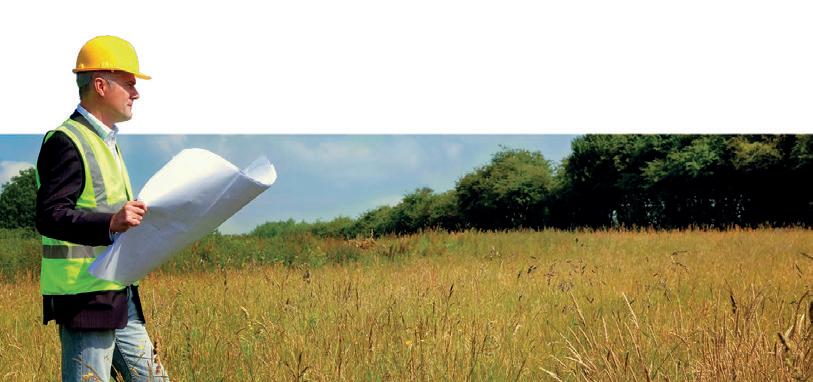
UTILITY • NOVEMBER 2020 WWW.UTILITYMAGAZINE.COM.AU NEWS
P E Level 2 Suite 26/20 Enterprise Drive Bundoora, Vic, 3083 1300 1 L ANCO (52626) tenders@lancogroup com au lancogroup.com au
business partner for engineering solutions Since 1998.
don’t purely just design; we
our customers realize their goal, if you
us
efficient
engineering solution” Accredited consultant with Melbourne Water, Retail Water Corporations – Metropolitan and Regional Areas Corporate Profile Insurance Category Level of Cover $ Professional Indemnity $10 million Public Liability $20 million Work Cover n/a A list of applicable insurances includes: Name of Entity: Lanco Group Pty Ltd ABN: 27 160 328 478 Company Address: University Hill Business Park South Level 2, Suite 26/20 Enterprise Drive Bundoora, Vic, 3083 Company Structure: Private Company Quality ISO 9001 Environment Health & Safety AS 4801 ISO 14001 2
Your
“We
help
give
an idea we can provide a
and effective
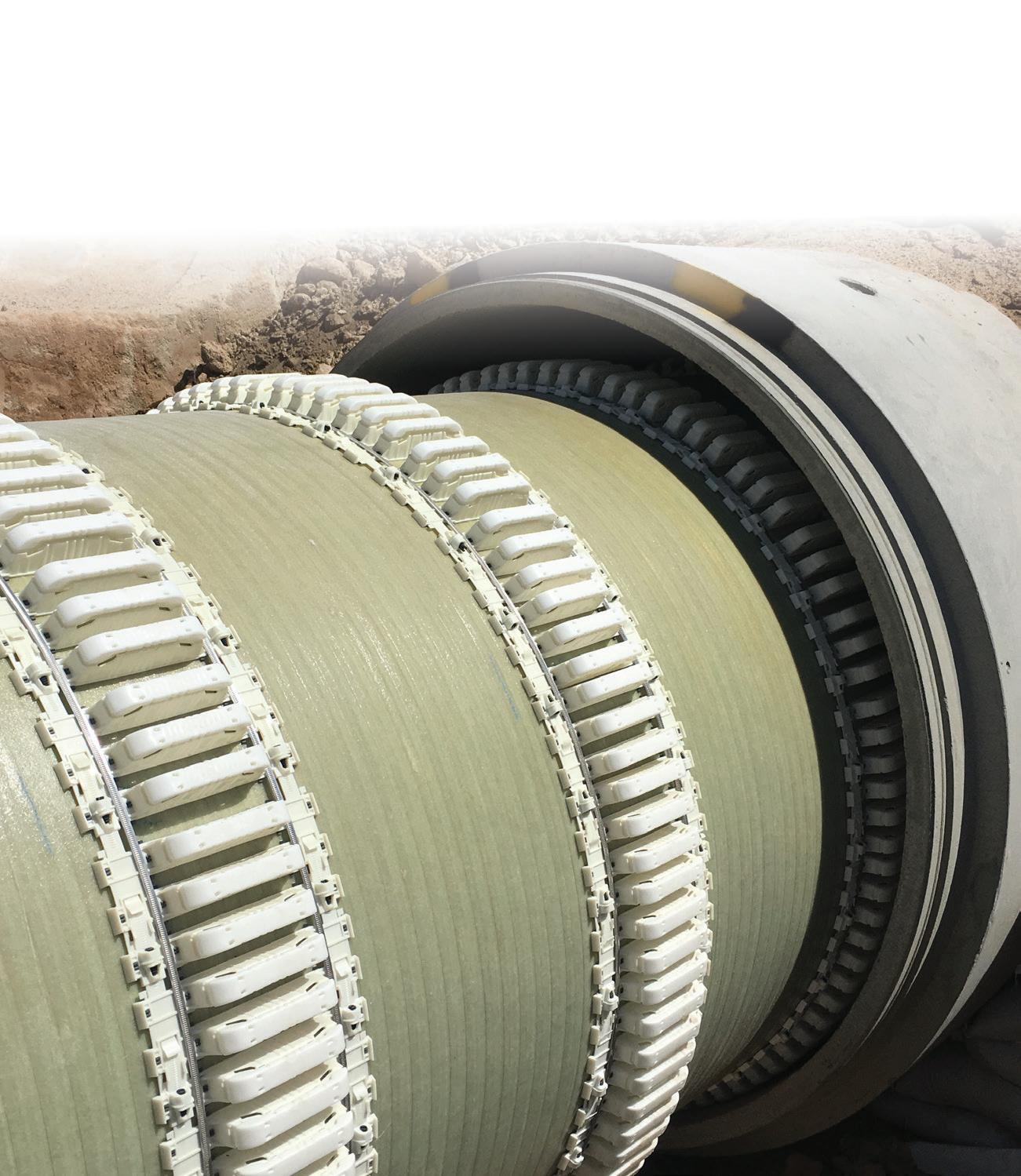
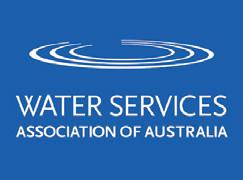
KWIK-ZIP’S HDX SERIES CASING SPACERS COMPLY WITH WSAA PRODUCT SPEC #324 – CASING SPACERS; REFER WSAA PRODUCT APPRAISAL REPORT #1523 Is your pipe spacer compliant? Call us for details on ordering P (08) 9725 4678 sales@kwikzip.com www.kwikzip.com
Blazing the trail:
IN CONVERSATION WITH POWER AND WATER’S FIRST FEMALE CEO
By Eliza Booth, Journalist
In June 2020, Northern Territory utility, Power and Water, appointed its first female Chief Executive Officer following an extensive recruitment process. The appointment of Djuna Pollard marks an exciting period of change and growth for the business, and Utility caught up with Ms Pollard to find out more about her vision for Power and Water, the challenges facing the industry, and encouraging women to rise to the top, even in male-dominated industries.
Ms Pollard first started working in the utility industry in 2000, joining Power and Water some 20 years ago as a Management Accountant. During her time at the company, she has led teams across multiple different areas of the business, from economics, regulation, retail and business services, to strategy and transformation.
Ms Pollard stepped up as Acting CEO for six months following the retirement of John Baskerville in 2015, but was not permanently appointed to the position. She instead took on the roles of Senior Executive Manager Business Services, and Strategy and Transformation before being named Executive General Manager Power Services, Power and Water’s operational poles-and-wires business.
After three years heading up the power services division, Ms Pollard took up an opportunity as CEO at Jacana Energy, the government-owned electricity retail corporation, which was created from Power and Water’s structural separation in 2014.
In December 2019, Ms Pollard was asked to return to Power and Water as the Acting CEO, before accepting the permanent role of CEO in June 2020.
THE DRIVING FORCE BEHIND THE UTILITY’S VISION FOR THE FUTURE
Since coming on board as the new CEO for Power and Water, Ms Pollard has wasted no time in getting stuck into the role, carrying on the vision
the company has for its future, which is set out in its annual Statement of Corporate Intent.
“As it stands, our purpose is to enrich the future of the Northern Territory and the communities in which we operate, supporting economically sustainable growth and prosperity,” Ms Pollard said.
“We want to enrich the future for our people by providing growth and development opportunities that enable them to do new things, champion change and make a difference in the work they do. We also want to enrich the future for our customers by being easy to deal with, and providing customers with knowledge and choice.
“More broadly, I want to see Power and Water become a modern utility. We are in the unique position of being a multi-utility, and I would like us to maximise those significant synergies while managing challenge and change with our customers at the heart of everything we do.”
Ms Pollard said that she will utilise her management style of collaboration and engagement to achieve Power and Water’s strategic goals.
“I like to think I am a ‘people leader’ who is approachable, honest, respected, credible and resilient. I’m able to remain calm in challenging or high-pressure situations, and strongly believe in collaboration and engagement,” Ms Pollard said.
“I advocate for a constructive, collaborative achievement culture – I believe strongly that we do our best achieving through our people. This
means growing and developing the capability of our people who will in turn build high-performing teams.”
A UNIQUE OPERATING ENVIRONMENT
As the Northern Territory’s sole provider of electricity, water and sewerage services, Power and Water delivers essential services in some of the most challenging conditions in the world, including a vast landscape, regional and remote customers, cultural sensitivities and extreme weather events.
These unique facets of the job make Power and Water’s responsibilities different to other utilities throughout Australia, and require distinctive management and solutions.
“Providing essential services to the people of the Northern Territory is a huge honour. Our work is essential to help keep the world’s oldest continuous living culture on country,” Ms Pollard explained.
“In addition to providing services to the community across the entire water and electricity supply chains and gas services, we also have regulatory obligations as the Power System Controller and Electricity Market Operator.
“In July 2019, Power and Water entered the regulatory regime of the NT National Electricity Rules (NT NER), with our network revenue being set by the Australian Energy Regulator (AER). This has been an exciting opportunity and catalyst of change for us.
UTILITY • NOVEMBER 2020 WWW.UTILITYMAGAZINE.COM.AU
WOMEN IN UTILITIES
20
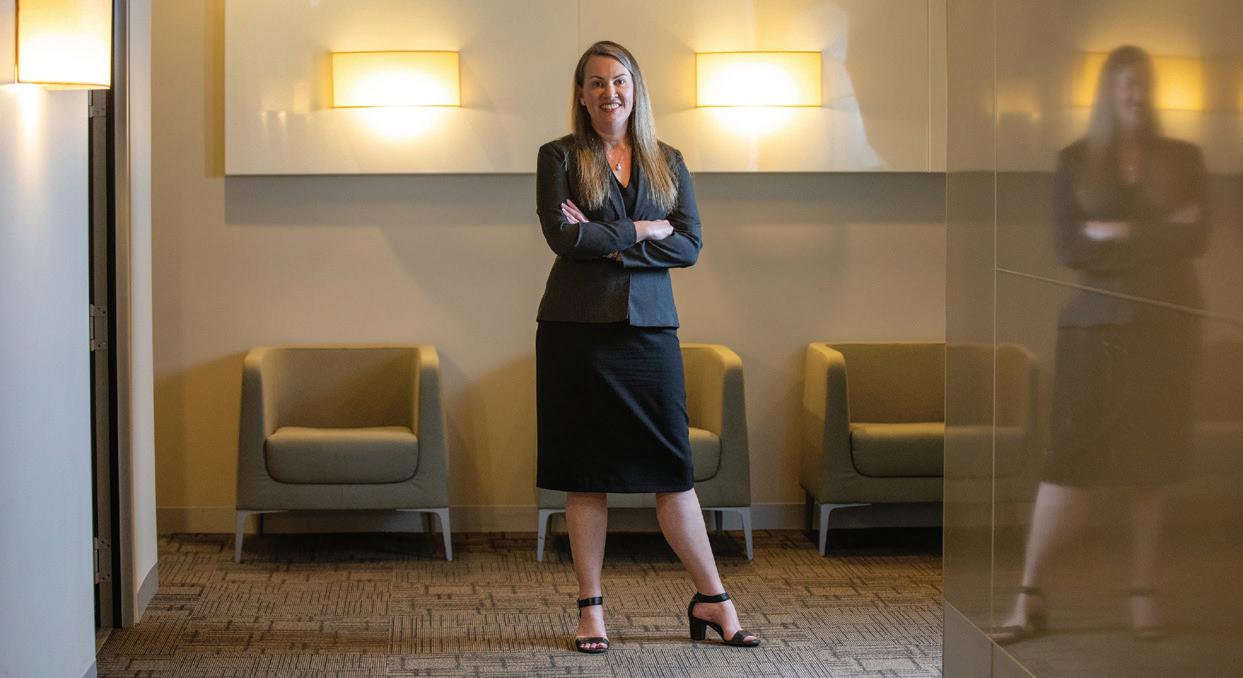
“Going forward, we know we face challenges and opportunities in terms of the growing expectations of our customers, regulators and other stakeholders. We know we need to improve our efficiency and put our customers front and centre in how we think and operate.”
With Australia continuing its transition to cleaner energy sources, Ms Pollard said that Power and Water is looking at how renewables can be better integrated into the power system, while also maintaining reliability.
“We are seeing the growing penetration of renewable energy, which is expected to increase significantly over the coming years in line with the Northern Territory Government’s target of 50 per cent renewables by 2030,” Ms Pollard said.
“As a Power System Controller, it is important for us to ensure the effective integration of renewable energy technologies, and that this fluctuating renewable energy load does not compromise system reliability and security.”
In addition to navigating the future of energy production and changing regulations, Ms Pollard said that Power and Water is focusing on water
sourcing strategies to secure supply in increasingly volatile climate patterns.
“The variable and changing climate patterns highlight the need for us to continually review our water source strategies to ensure the ongoing availability of a safe, secure water supply and the availability of water to support business growth,” Ms Pollard said.
“Our focus is on long-term water security solutions, including infrastructure, strengthening water conservation expectations and outcomes, reducing water losses and meeting water quality standards in both major centres and remote communities.
“There have also been unprecedented changes in both the gas and energy markets, and the Northern Territory’s regulatory environment. These pose significant challenges and require us to have an active and effective voice in shaping regulatory and policy outcomes. Our wholesale gas business plays an important role in supporting the economic diversification and development of the Territory’s economy.”
SUPPORTING WOMEN IN UTILITY SPACES
According to the Australian Government’s Workplace Gender
Equality Agency, the electricity, gas, water and wastewater industries have seen a 6.2 per cent increase in women working in these sectors, however, utilities remain a male-dominated industry¹. While there has been growth, more needs to be done to encourage women into the industry and to develop long-lasting and fulfilling careers.
Ms Pollard said that working together to bridge the gender gap and having role models at all levels of the industry are just some of the ways that more women can be encouraged and supported in the utility sector, improving outcomes not only for workers, but the industry as a whole.
“Diversity is not just a numbers game – it broadens the way teams tackle challenges and reduces the danger of ‘group thinking’,” Ms Pollard said.
Ms Pollard said that while the industry is still a traditionally ‘blokey’ industry, male colleagues she has worked with have been “champions for female empowerment”.
“They have been respectful of my abilities and been willing to pass on their knowledge during the time I’ve been at Power and Water,” Ms Pollard said.
“For a time, I was the only woman in a nine-strong executive leadership
UTILITY • NOVEMBER 2020 WWW.UTILITYMAGAZINE.COM.AU 21
IN UTILITIES
WOMEN
1 https://www.wgea.gov.au/data/fact-sheets/gender-segregation-in-australias-workforce
PHOTO CREDIT: TERRITORY Q MAGAZINE.

team at Power and Water – there are now five women. There are also three women among the seven directors on the Power and Water Board.”
Ms Pollard said that becoming the first female CEO of Power and Water Corporation is her greatest career achievement to date and she looks forward to being a role model for other women in the sector.
“I am proud to join the handful of women leading utilities in Australia. This has been a goal of mine for quite some time and I want to continue to be an inspiration for women in our industry.”
Ms Pollard said that she is inspired every day by all the women at Power and Water, especially those in frontline positions working to deliver essential services to customers of the Northern Territory.
Several women in particular have served as role models for Ms Pollard, including Merryn York (former Powerlink CEO, now Australian Energy Market Commissioner), Paula Conboy (former Chair of the Australian Energy Regulator Board), Charmaine Quick (Managing Director Goulburn-Murray Water) and Rebecca Kardos (Aurora Energy CEO and former Power and Water General Manager Retail).
“These are women who are truly inspiring and are paving the way for more women to take on leadership roles in utility businesses,” Ms Pollard said.
“I have also been motivated by many women who have served on the Power and Water Board, notably Helen Stanton, Teresa Dyson, Rowena McNally and Gaye McMath.”
LIFE IN THE TOP END
When she isn’t leading the team at Power and Water, Ms Pollard said that she likes to spend time with her family and friends, support her favourite sports teams, and enjoy the incredible scenery of the Northern Territory.
“I love watching my two teenage boys play a competitive game of basketball. I also enjoy travel in any form, as well as outdoor activities like camping and hiking. We are lucky in the Northern Territory to be surrounded by natural beauty and have some amazing national parks on our doorstep,” Ms Pollard said.
“I really enjoy spending time with family and friends, and having a good oldfashioned sing-along. I am also an avid supporter of Hawthorn (AFL) and the Canberra Raiders (NRL).”
UTILITY • NOVEMBER 2020 WWW.UTILITYMAGAZINE.COM.AU WOMEN IN UTILITIES 22





FIRST EVER! IoT ATEX/ IECEx (Zone 0, Gas Group IIB), NB-IoT, Cat-M1 battery-powered datalogger/ RTU for Intrinsically Safe Environments! Perfect for: l Sewer Level, Velocity and Flow l H2S Monitoring l Gas Distribution Network Monitoring Versatile and Intelligent Also certified for dust and other hazardous environments! For more information contact info@metasphere.net.au +61 2 9956 7407
PARTNERSHIP IN CHANGE
At Programmed, our value of diversity, inclusion and equality is about taking practical steps to embed sustainable change.
We are committed to diversity, with a focus on generational and cultural change to increase the employment of Aboriginal and Torres Strait Islanders, provide opportunities to people with disabilities, and improve gender balance. Programmed understands that a balanced workforce includes a diversity of thought, style and innovation, and allows the crew to meet the needs of their customers.
As a key partner for City West Water, Programmed and City West Water designed a cadet program aimed at attracting female school leavers without industry experience to provide further diversity in the workforce. Through this successful initiative with City West Water, the program was able to attract, engage and retain employees with different backgrounds, experiences and perspectives.
At the end of 2016, Programmed employed 53 people on the City West Water contract, of which nine per cent were female. Through the targeted initiatives and the success of the cadet program, as seen in the August edition
ALL IMAGERY DEPICTED WAS PHOTOGRAPHED BEFORE 2020

of Utility with program participants
Christine and Christopher, Programmed currently has a 19 per cent female workforce on the City West Water contract, with seven per cent of those in field-based roles.
These diverse workforces are representative of the communities they serve, which provides younger generations with a view of what the future could look like for them, and that their individuality is an asset to any employer. Business decisions around ideas and opinions are now more balanced and provide meaningful insights that positively affect the day-to-day business.
Together, Programmed and City West Water are committed to creating a diverse and inclusive workplace,
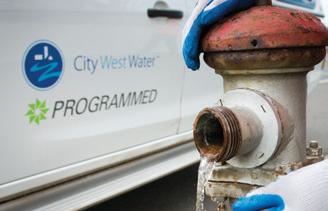
and achieving gender balance. To support this focus on increasing the representation of women in trades, Programmed has established a partnership with Trades Women Australia and Work180 to encourage, recruit and retain women in skilled trade roles that are generally male-dominated. Through these initiatives, Programmed continues to support and strengthen our position as an employer of choice for women in operations and trades. We have learnt the importance of showing women that applying for a trade role, or leadership position, is not just accepted, but actively encouraged at Programmed through our partnerships and contracts.

UTILITY • NOVEMBER 2020 WWW.UTILITYMAGAZINE.COM.AU 24
WOMEN IN UTILITIES | Utility Partner Solutions For more information, contact Programmed via info@programmed.com.au or visit programmed.com.au.

Programmed, your water partner.
Driving smart solutions for over 25 years in the water industry, Programmed uses a combination of data, backed with a culture of safety and customer focus, to deliver innovative network operations and maintenance solutions to our water customers.
Programmed also provides effective change management processes to optimise service delivery and customer experience, making us an expert in delivering the best results for your water network operation maintenance.
Download our Capability Statement to find out more.
fm.programmed.com.au
LEADERSHIP IN THE TIME OF COVID-19

Ms Lang described her first six months in the role as challenging and unpredictable, but very rewarding.
“I feel incredibly privileged to be able to lead such a fantastic organisation that is committed to the diverse communities we service across Melbourne's CBD and rapidly growing western suburbs,” Ms Lang said.
“As a leader, I have been proud of our people who have stepped up to meet the challenges brought on by the Coronavirus pandemic to continue to safely deliver essential water and sewerage services to our customers, even in the most difficult circumstances.
“Through all this, we’ve continued to deliver on some fantastic initiatives, from investing in the future of our communities through our major infrastructure projects, to partnering with organisations on stormwater initiatives to help create greener and more liveable spaces across the city and the west for the long term.”
A true test of leadership, Ms Lang was appointed as Managing Director at the height of the global COVID-19 pandemic.
“Coronavirus created a number of unanticipated challenges which required us to redefine the way we operate on a daily basis – we’ve had to completely change the way we work, live and deliver our services,” Ms Lang said.
In April 2020, City West Water announced that Maree Lang, who had been acting in the Managing Director role since November 2019, would step up to the role permanently. Entering a new role can be daunting at the best of times, let alone during a time of extreme global upheaval, but Ms Lang is unwavering in her commitment to putting City West Water customers first.
“Our focus has always been to keep services running reliably, with the safety of our people, delivery partners and community our highest priority.”
City West Water established an enhanced hardship team to assist customers impacted by the pandemic, and the utility has increased its support through additional grants, tailored payment extensions and flexible payment plans for households and businesses.
City West Water's field teams have continued essential repair and maintenance work, with safety as the number one priority –physical distancing and increased hygiene, along with personal protective equipment and community signage, have all been implemented as necessary steps to protect crews and the communities in which they operate.
“From a workforce perspective, we quickly pivoted to working remotely with nearly all our office-based staff, including our customer services teams, encouraged to do so as early as March,” Ms Lang said.
“I’m particularly proud of the support shown for our staff’s health and well-being at this time. With the provision of special leave, we have made sure that those with caring or homeschooling responsibilities were able to do so. We acknowledge everyone has a different set of circumstances and deals with things
differently, and we will continue to support everyone to thrive at City West Water.
“We’ve shifted our approach from crisis management to a more sustainable model – not business as usual – but creating a ‘new normal’ that retains flexibility so we can seamlessly continue to fulfil our commitments to our people, customers and the community.”
RAISING AWARENESS OF THE VALUE OF WATER
Ms Lang has been working in the water industry for about eight years, and three of those years have been at City West Water working in senior leadership roles across strategy, operational and delivery teams.
Before City West Water, she worked at Melbourne Water for four years where she led the transformation of its services for urban growth and renewal, and worked in various management roles across customer solutions, sustainability and innovation.
Before shifting to the water sector, Ms Lang held leadership consulting and executive roles working across manufacturing, resources, research, government and industry associations.
When asked about her greatest career accomplishment, Ms Lang said that the opportunity to take up the leadership of City West Water, across a time of significant global and local challenge, had been an immense privilege.
UTILITY • NOVEMBER 2020 WWW.UTILITYMAGAZINE.COM.AU 26
WOMEN IN UTILITIES
“My accomplishments are all part of a team effort, so perhaps my greatest accomplishment is my determined focus on culture, leadership, inclusion and well-being across teams,” Ms Lang said.
“I’m very motivated by the opportunities ahead for our people, and our communities, customers and partners across the west, and the role City West Water will play in recovery and resilience.
“Our future accomplishments will only be enabled if our people are thriving, purposeful and able to deeply connect with our customers and communities, so I’m excited about how we will continue to engage with our people into the future.”
According to Ms Lang, there are some big challenges ahead – not just for City West Water, but the industry in general.
“Population growth, a drier climate and sustainable management of our assets require us to collaborate with partners more than ever before and think about new ways to solve the challenges we face together. With these challenges comes opportunity,” Ms Lang said.
“As a sector, we can also collaborate and engage with our communities to secure our precious water resources, respect and value First Nations peoples, histories and cultures, enable local liveability, and create inclusive and innovative workplaces.
“Technology plays an important role for us now, and augmented reality and digital metering are just some examples of how we are using innovation and collaboration now to meet our shared challenges.
“City West Water is here to support and benefit our customers and all communities across Melbourne and the growing west. We are continuing to adapt and evolve to ensure we meet our customers changing needs and expectations, and we are committed to listening and continuously improving the way we deliver our services.”
City West Water services
Melbourne’s CBD and western suburbs, which features 446,000 residential properties, 42,000 nonresidential properties and a population of more than one million people. A key strategy for ensuring water resource security for the region is engaging with customers to raise community
awareness of the value of water.
“We know that a growing population, along with a warming drying climate, presents us with real and growing challenges to protect our water supply for years to come. We also know it requires action from all of us,” Ms Lang said.
“If we each save a little bit of water, we all save a lot and contribute to our water security. From brushing your teeth with the tap off, to shaving one minute off your shower time and sorting out water leaks, we all have a role to play to support our city’s water security.
“We support our community to take action through our education program in schools and through campaigns such as Choose Tap and Make Every Drop Count, to raise awareness of the role water plays in enhancing our waterways and local environments, creating greener and liveable suburbs, and the immensely important role of water for First Nations people.
“We also collaborate with South East Water, Yarra Valley Water and Melbourne Water every year to publish Melbourne’s Annual Water Outlook, which sets out our water security position and actions over the coming year.
“We will continue to commit to a range of projects and initiatives to secure our water supply, including delivering water efficiency campaigns and developing schemes to supply recycled water to commercial, industrial and residential customers and for the irrigation of open spaces.”
PARTNERING FOR SUCCESS
Ms Lang said it’s important to have strong partnerships across the community to achieve the best outcomes for customers.
“We have a commitment to our customers and community to continuously explore ways we can improve liveability and well-being in our service area. We partner with other organisations such as local councils, delivery partners and industry to improve green quality open space for all to enjoy. In working with partners on shared outcomes, we all benefit,” Ms Lang said.
“For example, by partnering on stormwater harvesting projects, we provide water for irrigating parklands and recreation reserves while reducing
reliance on precious drinking water, and by partnering with other water corporations, we have launched campaigns to increase household action and reduce water use.
“We will only be successful through partnering where we can positively contribute to the lives of our customers, the communities we serve and our industry.”
This focus on collaboration is what Ms Lang enjoys most about working in the utility industry.
“As an essential service, our work is very tangible and people rely on our services 24/7. At the same time, across the water sector we are working on increasingly complex challenges such as post-pandemic recovery, climate change and water security,” Ms Lang said.
“For me, this means that utilities, and especially the water sector, deliver a great combination of purpose, people and outcomes. I am able to work in an asset and infrastructure environment, and combine that with delivering community outcomes, innovation and workplace culture.
“I also value that our sector recognises the importance of the role we play in well-being and inclusion. This extends from the safe, inclusive environments we ensure every day in our businesses, to creating exciting partnerships that enhance community well-being and resilience.”
Outside of work, Ms Lang balances the demands of a challenging professional life with a passion for sport and caring for the newest additions to her household – two nine-month-old cats.
“Sport is a big part of my life. It has taught me so many important leadership lessons and learnings about myself. I love playing sport, watching sport, talking about sport and I love seeing a team win,” Ms Lang said.
“My current sport, karate, is something I took up a little later in life and that I continue to learn so much from – it isn't a team sport as such but a great personal challenge.
“I also love spending time with our cats. They joined our house just recently, and they’re continuous fun, and I am sure they are really enjoying us working from home.”
UTILITY • NOVEMBER 2020 WWW.UTILITYMAGAZINE.COM.AU 27
WOMEN IN UTILITIES
Diversity
AND INNOVATION GO HAND IN HAND

UTILITY • NOVEMBER 2020 WWW.UTILITYMAGAZINE.COM.AU 28
WOMEN IN UTILITIES | Utility Partner Solutions
Every kind of diversity – be it gender, race, socio economic status or age – is critical to a business and our industry’s long-term sustainability, according to Julie Whitcombe, CEO of RDO Australia Group.

RDO Australia Group is one of the world’s largest Vermeer and John Deere equipment dealers and encompasses Vermeer Australia, agri-machinery dealer group Vanderfield and RDO Equipment. The group proudly employs over 550 staff and operates out of 18 dealer locations providing sales, parts and service support for the agricultural, roads, civil construction, landscaping, mining and forestry sectors.
Ms Whitcombe, who stepped into the Group CEO role late in 2019, has spent most of her career in and around traditionally male-dominated industries.
“I have always enjoyed the directness of primary industries, and the feeling of being part of a business that contributes something real and tangible to our society and economy, be it roads, infrastructure or raw materials for manufacturing or food,” she said.
“I’ve learnt that diversity in these typically male-dominated industries ensures that the ideas going into the hopper are as varied as possible, and this delivers when it comes to execution, because we are taking on the best ideas of everyone involved, and utilising diverse backgrounds and skill sets to ensure a successful outcome on projects.”
Dannielle James, Director of Pipe Pro Directional Drilling and a long-standing Vermeer Australia customer, agrees with Ms Whitcombe.
“I have worked in male-dominated industries for nearly my whole career, in both the pipelining industry and the mining sector, and I’ve learnt that a diverse workforce gives you a team that has a great deal of depth, as they all bring different strengths and ideas to the table,” Ms James said.
“Throughout my years working in the mines in Western Australia, I saw more and more women take on roles and really owning them, and I try to promote that in my directional drilling business. The diversity I’ve seen has made each workforce more successful in productivity as well as creating an enjoyable place to work.

“I do see that a lot of women feel they need years of knowledge and experience before applying for an operator role, and that makes them reluctant to apply. So, I’m a big advocate of getting out and about to speak to women about moving into this industry or any type of trade industry that they may think has traditionally been male-dominated.”
Ms Whitcombe added, “In the end, all industries must innovate to thrive, and diversity of thought is critical to the ability to innovate.
“Seeing women step into non-traditional roles is just one sign that the pipelining industry, and many other male-dominated industries, are evolving and opening their collective minds to new ideas and perspectives that continue to see them thrive.
“Women have a lot to offer in creating and leading highperforming teams that harness the strengths and talents of an increasingly diverse, and sometimes transient, workforce.
“Our team at Vermeer Australia features some great women making their marks in the company. Our Operations Manager in Victoria, Christine Meilak, for example, worked her way through the ranks from administrative roles to take on a branch leadership position, and over recent months we’ve seen the benefit of her authentic leadership style, especially as we navigate the daily challenges of COVID-19.
“Our National Parts Manager, Nellie Smit, similarly changed industries and has worked her way up in a short period to a senior national role in our business. Her respect for her team, willingness to get to the bottom of problems before proposing solutions, and sharing her thoughts and perspectives are hallmarks of her style. We have many other talented women across our business that I don’t have the space here to call out separately – but I will say that I love the quality and authenticity of the conversations that flow from the different backgrounds coming together across our team, and I’m excited to continue to add and build to this to ensure we are always fostering innovation.”
UTILITY • NOVEMBER 2020 WWW.UTILITYMAGAZINE.COM.AU 29
Utility Partner Solutions | WOMEN IN UTILITIES
JULIE WHITCOMBE, CEO, RDO AUSTRALIA GROUP.
DANNIELLE JAMES, DIRECTOR, PIPE PRO DIRECTIONAL DRILLING.

EQUIPMENT REDEFINED. TRADE FOCUSED. SYSTEM WIDE.
Milwaukee Tool is proud to announce the MX FUEL™ Equipment System. This ground-breaking cordless system revolutionises the equipment market by delivering the performance, run-time, and durability demanded by the trade users without the hazards associated with emissions, noise, vibration, and the frustrations of petrol maintenance.
Each of the solutions on the MX FUEL™ system go beyond the limitations of petrol and power cords and operate off one completely compatible battery system. More is being asked of trade professionals every single day. As these demands grow, they need to stay safe and productive, and at Milwaukee, we’re obsessed with improving the lives of our users by developing the most effective solutions to the problems they face.
After spending over 10,000 hours with our users on thousands of job sites globally, we discovered petrol and AC equipment have considerable safety and productivity challenges due to limited innovation over the years. From petrol emission headaches to design features that were causing stress on users’ bodies over time, it was clear that today’s equipment wasn’t delivering on user needs. By dramatically reducing the hazards and frustrations of the equipment that has dominated the marketplace for years, MX FUEL™ will fundamentally change job sites everywhere.
During job site research, Milwaukee searched for the biggest improvements we could make to overall user safety and productivity. After analysing the most prevalent pain points, Milwaukee chose 5 products and 2 batteries for the initial launch of MX FUEL™. Each of these products represent applications that have historically been challenging experiences for users due to stagnant equipment innovation and are the first battery-powered solutions of their kind.
MX FUEL™ 355mm (14") Cut-Off Saw:
Delivers a smooth cutting experience by providing true 355mm (14") cut-capacity and fast cuts from start to finish. No petrol headaches, no emissions, less vibration, and quiet operation allows users to work safer and be more productive.
MX FUEL™ Breaker:
Delivers a fast, safe, and easy concrete demolition experience. This productive breaker provides low vibration and is light weight to get the job done.
MX FUEL™ Core Drill:
Allows users the ability to core with more confidence through maximum control and enhanced safety with a patented clutch and AUTOSTOP™ Technology. It delivers the power to core up to 152mm (6") holes in reinforced concrete.
MX FUEL™ REDLITHIUM™ Battery Packs:
By using industry leading lithium-ion technology, all MX FUEL™ batteries fit all MX FUEL™ Equipment. Our patented design protects the battery against drops, water and harsh environments while robust electronics optimise performance for your MX FUEL™ Equipment.
MX FUEL™ Tower Light*:
The new way to light the site. This portable 3m light for both indoor and outdoor use, provides up to 27,000 lumens of task and area lighting, withstanding harsh job site environments.
MX FUEL™ Sewer Drum Machine*:
Simplifies sewer calls and allows for one-person transportation in and out of a service van and up and down stairs. It has the power to clear roots up to 60m out while providing protection against the mess with an enclosed drum.
Milwaukee Tool will remain unwavering in their commitment to deliver disruptive innovation by working alongside trade professionals to identify challenges and provide solutions that are unparalleled in enhancing job site safety and productivity. The future of the job site is cordless.
*The MX FUEL™ Tower Light and Sewer Drum Machine are expected to join the range shortly after the initial launch in August 2020.
To learn more about Milwaukee Tools, MX FUEL™ range or to request a Job Site Demo, go to milwaukeetool.com.au/mxfuel


milwaukeetool.com.au/mxfuel
NO PULL START NO MIXING PETROL & OIL NO ENGINE MAINTENANCE
AVAILABLE AT A UTHORISED A GENT
KEEP IT CLEAN:
HOW RENEWABLES CAN LEAD THE RECOVERY FROM COVID-19
By Kane Thornton, Chief Executive, Clean Energy Council

However, despite the profound impact of the pandemic, most of the critical issues that were facing the Australian energy industry before the pandemic haven’t changed. And while some of these issues may now be a lower priority for governments and regulators, many will become even more important as we look to jumpstart the economy and replace the jobs lost as a result of COVID-19.
SHORT-TERM RECOVERY EFFORTS CLEAR THE PATH FOR A CLEAN ENERGY FUTURE
As federal and state governments look to restart the economy in the aftermath of the COVID-19 health emergency, there is a significant opportunity for renewable energy and energy storage to be at the forefront of Australia’s economic recovery. With the Australian Energy Market Operator (AEMO)
RENEWABLES
UTILITY • NOVEMBER 2020 WWW.UTILITYMAGAZINE.COM.AU 32
The COVID-19 pandemic has caused significant upheaval in the lives of all Australians. Whether it’s through relatively minor disruptions to everyday life or the pandemic’s more devastating effects, such as the loss of a loved one or job, COVID-19 has had a collective nationwide impact the likes of which we haven’t experienced for upwards of 70 years. As with every facet of Australian life, the pandemic has deeply affected the renewable energy industry. Whether it is the standing down of staff, reassessing the viability of projects or the complete shutdown of the Victorian rooftop solar industry, no business in the Australian renewable energy industry has been untouched by the crisis.

finding that 30-47GW of new generation will be required by 2040 to replace retiring coal-fired power stations, a recovery plan that facilitates increased investment in renewable energy will serve the dual purpose of supporting the industry through this challenging period while giving Australia a clear pathway for the clean energy transition.
A Clean Recovery is the Clean Energy Council’s plan for Australia to utilise its extraordinary renewable energy and energy storage potential to jumpstart the economic recovery from the COVID-19 pandemic. The plan calls on the Federal Government to introduce a series of measures to unblock massive pent-up private investment and further realise the significant economic benefits of the clean energy transition.
RENEWABLES
UTILITY • NOVEMBER 2020 WWW.UTILITYMAGAZINE.COM.AU 33
These measures include investing to bring our energy infrastructure into the 21st century, facilitating continued investment in large-scale renewable projects, encouraging greater uptake of rooftop solar and household batteries, and establishing a renewable hydrogen industry to make Australia a clean energy superpower.
The benefits created by A Clean Recovery are substantial, both in the short and long term. In the next few years, a plan that focuses on increasing the penetration of renewable energy in Australia could inject over $50 billion worth of investment into the Australian economy and create tens of thousands of new direct jobs. In addition to these immediate economic benefits, A Clean Recovery would add more than 30,000MW of new clean energy capacity. This would have the effect of further reducing wholesale electricity prices, easing the financial burden on households and businesses, and helping to revitalise Australia’s manufacturing sector.
However, opting for A Clean Recovery from the COVID-19 pandemic also gives us a unique opportunity to initiate the long-term structural changes required to make the transition to a renewables-based electricity system. By upgrading the transmission network, leveraging distributed energy resources (DER) and increasing investment in large-scale energy storage now, we can create a modern, smart and more resilient energy system that will allow Australia to export its substantial renewable energy resources to the world while putting us on the path to achieving net-zero emissions.
CLEAN ENERGY JOB POTENTIAL POISED AND READY
Of all the benefits created by A Clean Recovery, perhaps the most important is the prospect of significant job creation. A report recently released by the Clean Energy Council, titled Clean Energy at Work, makes a compelling case for the renewable energy industry to replace many of the jobs lost due to the COVID-19 pandemic.
Clean Energy at Work was based on research conducted by the Institute for Sustainable Futures at the University of Technology Sydney, and is the largest study of current and projected employment in the Australian renewable energy industry. The study involved an industry-wide survey, measuring current employment and then applying employment factors to the scenarios in AEMO’s draft 2020 Integrated System Plan to estimate future job creation.

The study revealed that more than 25,000 people were employed in the Australian renewable energy industry in 2019, with almost 10,000 of those jobs in small-scale rooftop solar. In total, solar (small-scale, large-scale and solar water heating) accounted for 56 per cent of total renewable energy jobs, followed by wind at 28 per cent, hydro at ten per cent and batteries at six per cent.
More importantly for Australia’s post-COVID-19 recovery, the research found that the renewable energy sector could employ as many as 44,000 people by 2025 if AEMO’s Step Change Scenario is adopted, and even more if more ambitious policy settings are implemented. The creation of
UTILITY • NOVEMBER 2020 WWW.UTILITYMAGAZINE.COM.AU 34
RENEWABLES
almost 20,000 jobs in renewable energy over the next five years is ideally timed to help the many Australians who have been directly impacted by the COVID-19 pandemic and by those who will feel the effects of the subsequent recession.
However, policies must be put in place now that create a stable investment environment to bring forward the enormous pipeline of wind and solar projects across Australia. If we fail to do this, the once-in-a-generation opportunity presented by COVID-19 to transition our electricity system to one based on clean energy won’t be the only thing that’s lost. In one of the Clean Energy at Work report’s more alarming findings, it is predicted that if we continue on our current trajectory – what AEMO deems its Central Scenario, whereby no additional state or federal policies are put in place – the industry could lose upwards of 11,000 jobs in the next three years.
The unemployment caused by the COVID-19 pandemic has resulted in considerable hardship for many Australians. But as the Clean Energy at Work report shows, the renewable energy industry has the potential to get thousands of Australians back to work in rewarding jobs that create a better future and provide the regional and rural economy with a much-needed financial boost. If we can introduce policy settings that allow the renewable energy industry to thrive, renewable energy can rescue rural Australia from the profound impacts of COVID-19, and Australia can join the hundreds of countries around the world that are using renewable energy to jumpstart their economies.
CURRENT DECISIONS, FUTURE CONSEQUENCES
As we’ve seen during previous economic downturns, any number of industries will be arguing their case for government assistance to lead the economic rebuild. This includes the coal industry, which will see the current crisis as a lifeline to extend the life of existing assets.
As a result, this could be a watershed moment for the Australian energy industry. Get it right, and we can accelerate the transition to a renewables-led electricity system, create tens of thousands of new jobs and open up significant export opportunities in the form of hydrogen and inter-regional interconnection. However, get it wrong, and we could face another decade of energy policy inaction, political distraction and painfully slow progress.

UTILITY • NOVEMBER 2020 WWW.UTILITYMAGAZINE.COM.AU 35
RENEWABLES
NETWORKS RENEWED:
AN AUSTRALIAN-FIRST VOLTAGE MANAGEMENT TRIAL
Across Australia, and particularly in NSW, the uptake of rooftop solar has soared, with more than 450,000 premises across the state having solar panel installations, providing 5GW of generation power. From an environmental position this is encouraging to see, however, an increase in uptake brings emerging challenges. One such challenge for electricity networks is maintaining voltage within 216253V, which can become difficult with an increase of solar PV installations.
There are typically three strategies networks can implement to manage voltage on the low voltage network:
1. Limit the connection of solar panels
2. Augment the network, which can include replacing powerlines or upgrading transformers
3. Trial innovative behind-the-meter methods for voltage management
Australia’s largest distribution network business, Essential Energy, chose the innovation road and participated in the Networks Renewed project to trial a voltage management system using smart technology to incentivise customer inverters.
The Institute for Sustainable Futures at University Technology Sydney partnered with Essential Energy, the Australian PV Institute and two electricity network businesses in Victoria – AusNet Services and United Energy – with the project receiving funding from ARENA as part of its Advancing Renewables Program. The project commenced in September 2016 and was completed in April 2019.
The project was delivered in two separate stages:
• Pilot stage: a limited number of customers to assess the effectiveness of the project plan, with an overarching objective of achieving a measurable network benefit from customer systems
• Market stage: lessons learnt from the pilot stage guided the design of the market stage, and the number of eligible customers during the market stage was significantly increased with the aim of addressing an emerging network constraint
Essential Energy’s Executive Manager Engineering, David Salisbury, said, “We’re committed to delivering a network that is responsive to the changing needs of our customers.
“The Networks Renewed project showed that we can provide voltage management services to the network by augmenting our network intelligence, bringing groups of people together to use and share solar power, and using new technology to manage voltage variations using customer batteries.”

The trial was successful in proving viability and customer benefits, including:
1. Voltage management at a lower cost compared to other options
2. Enabling the network to take up higher levels of rooftop solar with minimal impact on customers
CUSTOMER ENGAGEMENT KEY TO THE TRIAL’S SUCCESS
Essential Energy worked with Reposit Power to provide the voltage management service for its customers.
Organisations like Reposit Power (and Mondo which was the technology partner for the Victorian trial) provide an aggregation of customer batteries into the market, and in return provide revenue to customers which they could not access previously.
For the trial, Essential Energy created a Distribution Level Market (DLM) to enable voltage management services. During evening peak periods, when networks are generally under stress from customer load, Essential Energy invited bids from customers to supply voltage management at a price of $1 per kWh.
UTILITY • NOVEMBER 2020 WWW.UTILITYMAGAZINE.COM.AU 36
RENEWABLES
REPOSIT DEVICE CONNECTED TO THE NETWORK, BATTERY AND SOLAR PV AT A CUSTOMER’S PREMISES.

The price signal acted as an incentive for Reposit Power’s smart control electronics to respond on the customer’s behalf. Customers were at the centre of the approach during this trial, and the smart controller technology would only bid when it was in the customer’s interest.
Additionally, the project emphasised customer choice –customers were able to choose when and to what degree they participated in the market.
Extensive engagement was undertaken during the project to support this customer-centric approach, with Essential Energy ensuring customers were fully informed through each stage of the demonstration, and that they would not be worse off as a result.
In addition to direct engagement, a number of face-to-face forums were held during the project.
“We found that customers appreciated being able to engage with our team while working through this new process,” Mr Salisbury said.
The project was a success for customers and for the electricity network, demonstrating that participating customers were still able to gain a financial benefit by providing voltage management services to the network at times of peak demand.
“Through the project, we sought to drive lower-cost solutions to address network voltage constraints, support the uptake of customer solar PV, while maximising value to customers,” Mr Salisbury said.
“We also found that customers who participated had their bills reduced by Reposit Power’s intelligent algorithms which worked to optimise energy management in their homes.”
In addition to the above, across the trial area, there was sufficient improvement in network voltage that a network upgrade has likely been avoided. This solution has come at a lower cost compared with the traditional solution of a physical network upgrade that would be required to address
the emerging voltage constraint. All customers will benefit from this saving in the form of lower power prices across the network.
The increasing rates of solar uptake across Australia are presenting challenges for both customers and electricity networks. Existing options to manage voltage and power quality can be costly, leading to higher power prices for customers.

Through the Networks Renewed project, Essential Energy helped achieve an Australian first by demonstrating that with sufficient technology, customer’s batteries can help to provide voltage management services to the network.,
The innovative nature of the project has been recognised by other industry associations.
“I’m thrilled that Essential Energy is a finalist in Engineers Australia’s 2020 Engineering Excellence Awards – Newcastle Division,” Mr Salisbury said.
“It’s fantastic recognition of the hard work of all involved to make this project a success for the benefit of our customers.”
UTILITY • NOVEMBER 2020 WWW.UTILITYMAGAZINE.COM.AU 37
RENEWABLES
A COMMUNITY FORUM CONDUCTED BY ESSENTIAL ENERGY DURING THE TRIAL.
THE SET-UP USED IN THE PROJECT TO LINK CUSTOMER ASSETS TO VARIOUS MARKETS.

WASTE NOT, WANT NOT –BIOGAS POWERING A
CLEAN, GREEN
ENERGY FUTURE
RENEWABLES 38
Traditionally, wastewater treatment plants were solely designed to fulfil a vital role in ensuring public health and the protection of our natural environment. Through the progression of innovation and technology, SA Water’s facilities have evolved into rich sources of diverse, sustainable energy and water management opportunities, capable of generating their own power by harnessing biogas – a by-product of treating sewage which is captured and turned into heat and electricity.

PART OF THE TREATMENT PROCESS THAT REMOVES SLUDGE FROM SEWAGE, TO BE USED IN THE DIGESTERS ALONG WITH INDUSTRIAL WASTE SUCH AS EXPIRED BEER.
RENEWABLES 39
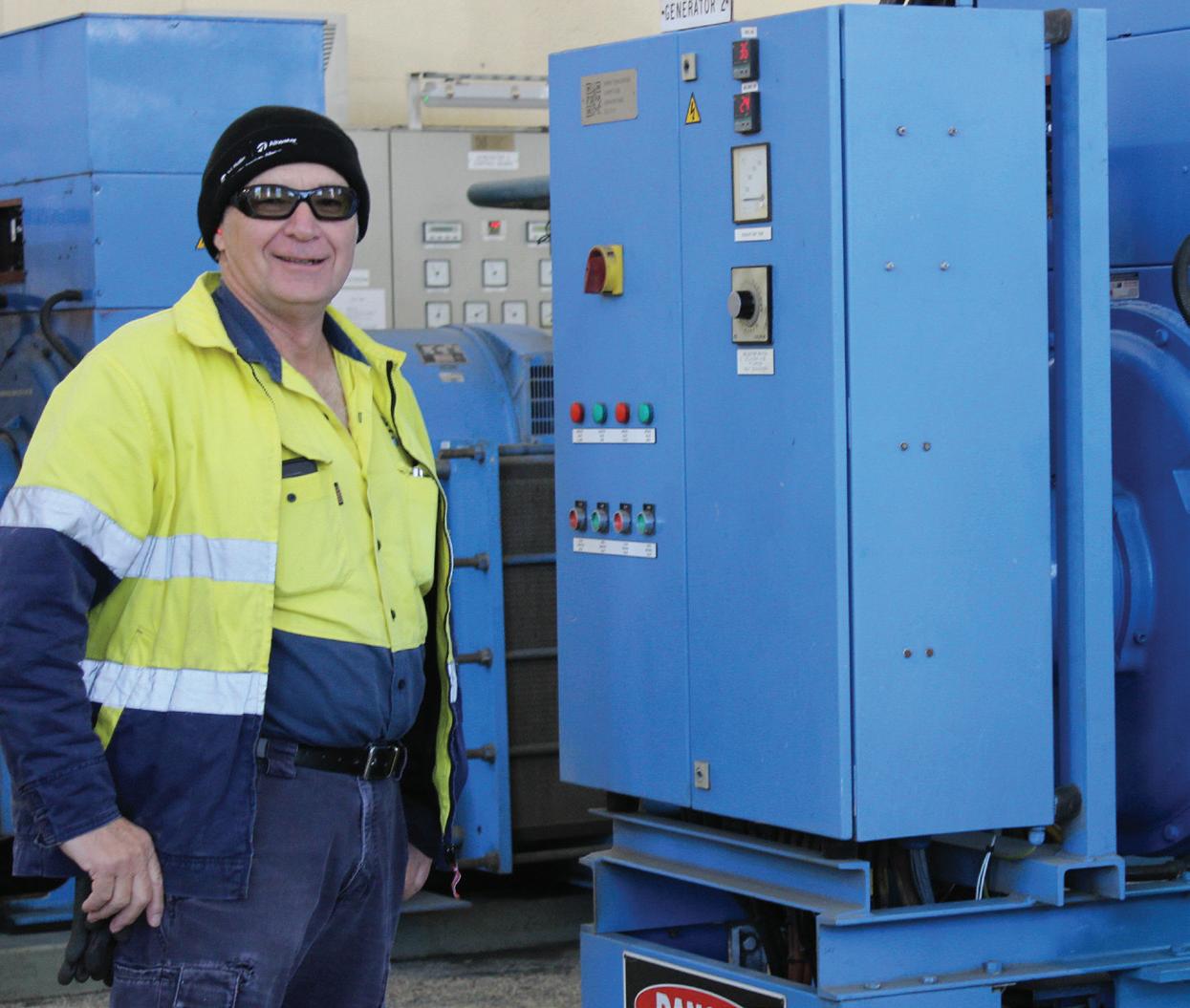
SA Water’s emphasis on green energy was typified earlier this year after brewing a genius idea which led to one of its major wastewater treatment plants producing record power generation.
COVID-EXPIRED BEER BREWS ENERGY ALE
The closure of breweries, pubs and restaurants across Australia, to help stop the spread of COVID-19, created a vast oversupply of beer, forcing brewers to dispose of their product once it reached expiry.
Certain waste produced by industry, such as expired beer, is quite challenging and costly for manufacturers to manage, and unlike domestic waste, isn’t suitable for discharge to the wastewater network.
Rather than allowing the beer in South Australia to go to waste, the product’s high energy potential made it the perfect ingredient for a process known as co-digestion, which produces biogas – a source of green energy.
Millions of litres of beer that expired while the hospitality industry was shut down at the height of COVID-19 restriction measures quenched the thirst of digesters at SA Water’s Glenelg Wastewater Treatment Plant, boosting renewable energy generation to around 650 megawatt hours each month, for three consecutive months.
Destined to wet whistles before breweries, pubs and restaurants closed, the unused beer from local South Australian breweries was repurposed on-site and converted into electricity to power the plant’s treatment processes, reducing wastage and benefiting the environment.
SA Water Senior Manager Production and Treatment, Lisa Hannant, said beer was liquid gold for the digesters and fuelled record energy generation at the plant.
UTILITY • NOVEMBER 2020 WWW.UTILITYMAGAZINE.COM.AU 40
RENEWABLES
THREE JENBACHER J316 ENGINES GENERATE ELECTRICITY AND HEAT FROM BIOGAS PRODUCTION, WHICH WAS RECENTLY BOOSTED BY THE ADDITION OF EXPIRED BEER.
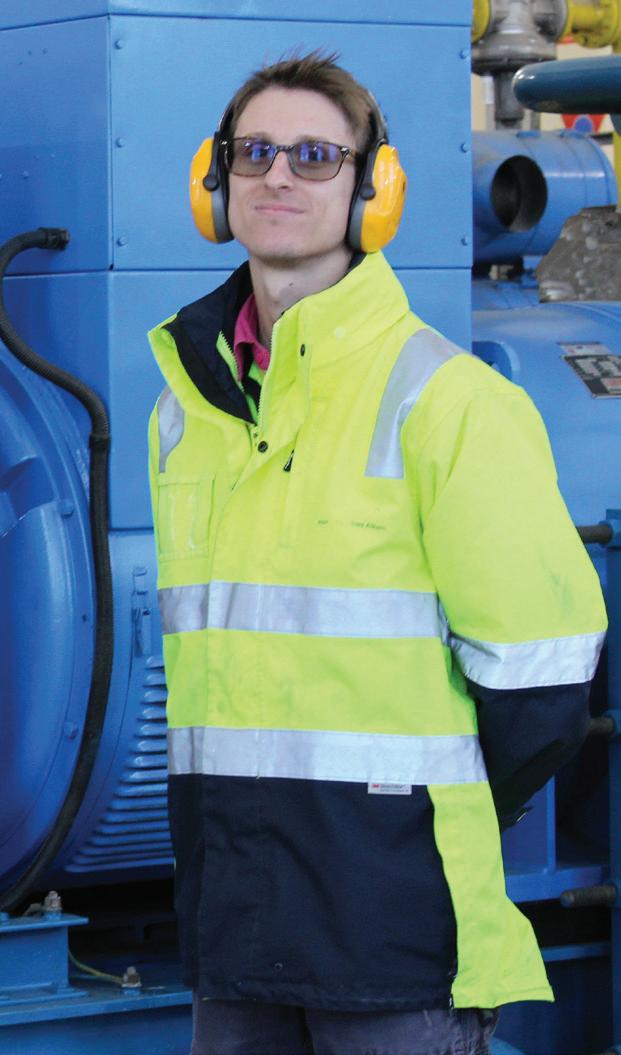
“Our Glenelg Wastewater Treatment Plant has always been a strong performer in generating its own energy from biogas, and the addition of ales and lagers took it to new heights amid the shutdown,” Ms Hannant said.
“Glenelg’s co-digestion program adds high strength organic waste from industry to sludge from the sewage treatment process, which is heated in the oxygen-free environment of the large, sealed concrete digester tanks, so it breaks down through natural bacterial metabolic processes and releases biogas.
“Harnessing the power of biogas through our on-site gas engines creates renewable energy for the treatment plant and a sustainable alternative for industrial waste that’s otherwise difficult to dispose of and treat.
“Beer’s high calorific load and methane potential means it’s perfect for co-digestion and by adding around 150,000 litres of expired beer per week, we generated a record
355,200 cubic metres of biogas in May and 320,000 cubic metres in June, before topping our May record in July with 371,600 cubic metres.
“To put these figures into perspective, the electricity generated by our engines from biogas is enough to power 1,200 houses.
“Honourably, our thirsty digesters have been doing their bit for the environment by drinking themselves silly and with such a horrific diet it’s no wonder they produce so much gas!”
Prior to their recently developed taste for beer, the digesters would typically generate enough biogas to provide around 80 per cent of the Glenelg facility’s energy needs.
The plant’s record power generation made it 97 per cent energy self-sufficient during July this year.
“Many businesses have been impacted by the restrictions in place to stop the spread of COVID-19 and this is just one example of how an industry has remained resilient and adapted to ensure their resources aren’t wasted, while enabling a beneficial outcome for the environment,” Ms Hannant said.
“Breweries have since adjusted their production schedules following the easing of restrictions in South Australia which enabled the hospitality industry to reopen, and our biogas generation for August returned to normal levels, so we’re glad the beer is ending up where it’s intended.”
First operational in 1932, the Glenelg Wastewater Treatment Plant treats around 20 per cent of Adelaide’s sewage – processing, on average, 55,000 litres each day.
RICH RESOURCE RECOVERY OPPORTUNITIES
Biogas production is linked to the nature and volume of substrates entering the digesters, which are typically in the form of primary sludge and waste-activated sludge.
The co-digestion process is unique to SA Water’s Glenelg plant, however anaerobic digesters in place at its Bolivar and Christies Beach facilities also convert waste to energy to help power treatment operations.
Ms Hannant said extracting opportunities for resource recovery at wastewater treatment plants delivers rich economic and environmental outcomes.
“Our treatment facilities have evolved from their traditional role of protecting public health and are now regarded as valuable sources of sustainability,” Ms Hannant said.
“By combining innovation, technology and waste management, we’re nurturing a circular economy which champions water reuse opportunities and renewable energy, to pave the way for a green future.
“Bolivar’s existing digesters create and capture enough biogas to cover up to 90 per cent of the plant’s energy requirements, and we’re now exploring initiatives to optimise gas yields.
“As one of South Australia’s largest electricity users, it’s important to identify and invest in opportunities that enhance our sources of clean energy, such as producing biogas.
"This sustained focus on generating renewable energy is reducing our carbon footprint, improving operational efficiencies, contributing to a healthier environment and ultimately keeping costs down for our customers.”
UTILITY • NOVEMBER 2020 WWW.UTILITYMAGAZINE.COM.AU 41
RENEWABLES
EnergyAustralia’s ON
INCUBATES HOUSEHOLD ENERGY FOR THE FUTURE

RETAIL, BILLING & CRM
UTILITY • NOVEMBER 2020 WWW.UTILITYMAGAZINE.COM.AU 42
What happens when product developers and customers get together to look at how household energy could be better? Easier, more modern energy services that save customers time and money. Through its new customer innovation platform, EnergyAustralia customers will be able to participate in trials to help shape the retailer’s future products and services.

Customer platform, ON by EnergyAustralia, was quietly launched towards the end of 2019. Its aim? To explore how household energy could be made better.
ON uses customer insights to develop solutions that are then trialled before becoming widely available.
“We want to make sure the products and services we’re creating for our customers are ultimately making energy simpler, more affordable and more intuitive for them,” said Sofia Kolyvas, who oversees ON.
In November 2019, ON was powered up, with its first slate of products and services aimed at ensuring energy bills did not arrive with any unwanted surprises.
“Bill shock is our number one customer gripe, so it was absolutely the first problem we wanted to solve,” Ms Kolyvas said.
RETAIL, BILLING & CRM WWW.UTILITYMAGAZINE.COM.AU 43
Inspired by mobile phone plans, Easy Plan and Easy Plan Plus marked a step away from traditional rate-based plans where customers are charged for their energy usage by the kilowatt-hour or the time of day.
Instead, for a regular monthly price, customers can either choose to purchase a set amount of electricity under Easy Plan or for a few dollars extra, choose Easy Plan Plus that includes all their usage.
Sofia said with all electricity usage included, customers can personalise their plan’s monthly price based on how much electricity they use and where they live.
“Easy Plan gives households with smart meters the choice of five different-sized contracts based on electricity usage, from extra small to extra large,” Ms Kolyvas said.
“For example, under the plan, a four-bedroom household in Western Sydney using around 10,150kWh a year would pay a flat monthly fee of $210 a month if they chose the large plan over 12 months.
“Just as a customer may occasionally need to top-up the data on their phone plan, if an Easy Plan customer goes over their included monthly usage allowance, they will be automatically topped up with an additional 36kWh of electricity for $10.
“Unlike most mobile phone plans, any unused energy is automatically rolled over into the next month, or whenever the customer needs it, to ensure nothing goes to waste.”
Sofia said that close to one year since launching, customers are saying the subscription trials have made it easier for them to budget, particularly during times when energy use can fluctuate.
“Customers can set and forget but still have the benefit of protection from unexpected high energy bills, a common occurrence during summer and winter,” Ms Kolyvas said.
“They also appreciate the ability to receive regular usage alerts and the option to scale up or down their plan, should their household numbers change, or they believe more energy will be used in the transition between seasons.”
Currently only available in New South Wales, Ms Kolyvas said the decision has not been made whether the plans will be offered in other areas.
“We hope so. The feedback so far has been positive, which suggests that customers are craving more options outside of what energy companies have done in the past.”
UNRAVELLING THE HIGH UPFRONT COST FOR HOUSEHOLD SOLAR AND BATTERIES
Six months after Easy Plan came another trial in NSW: Solar Plus Plan, a two-in-one energy plan and solar and battery system.
The ambition was to make solar more affordable and accessible for households.

“The breakthrough with Solar Plus Plan is that it avoids a major hurdle for many households considering a solar and battery system – the high upfront cost,” Ms Kolyvas said.
Customers who signed up were provided a solar and battery system that is maintained and managed by EnergyAustralia, alongside a competitive fixed-rate electricity plan.
The system installed at their home will join a network of other batteries working together to help stabilise the grid as part of a Virtual Power Plant.
At the conclusion of seven years, the customer becomes the system’s owner, allowing them to keep producing and storing energy for use throughout the day and into the evening.
Eligible households who signed up to the plan had a 5.6kW solar system and 13.5kWh Tesla Powerwall battery, valued at $15,350, installed at their home for no upfront cost.
Meanwhile, ON’s Ultra Solar Plan, which was trialled in Queensland and designed for eligible households with existing solar systems, offers an 18-cent kWh feed-in tariff –one of the best feed-in tariffs in Queensland.
“We saw a lot of households with solar installed come to us because of the simplicity of our plan and our tariff,” Ms Kolyvas said.
The Solar Plus Plan and Ultra Solar Plan trials have now come to an end, but EnergyAustralia plans to relaunch both products in due course.
WHAT’S NEXT FOR ON?
Ms Kolyvas said that with the foundations now in place, newer products can be launched through ON within a month.
“It’s been important for ON to have its own sense of identity through a different online platform,” Ms Kolyvas said.
“That separation provides the ability to see what’s resonating with customers. We conduct this research by looking at insights and the old-fashioned, albeit most effective way, of hearing directly from them.
“Our promise is that we will keep trying out new approaches with the goal of putting customers in greater control over their energy use and in a way that saves money – and of course – without an unwanted surprise.
“We can’t promise to always hit bullseye when something new is made available on the platform, but we can always inch closer so long as we continue to listen to what customers are saying.
“In that sense, we view On by EnergyAustralia as a true partnership with our customers, and that’s a relationship we will always respect and value.”
RETAIL, BILLING & CRM UTILITY • NOVEMBER 2020 WWW.UTILITYMAGAZINE.COM.AU 44

RETAIL, BILLING & CRM 45
Powering Sydney’s Future:
BRINGING THE CITY’S AGING ELECTRICAL INFRASTRUCTURE UP TO DATE TRANSFORMERS
By Imogen Hartmann, Journalist
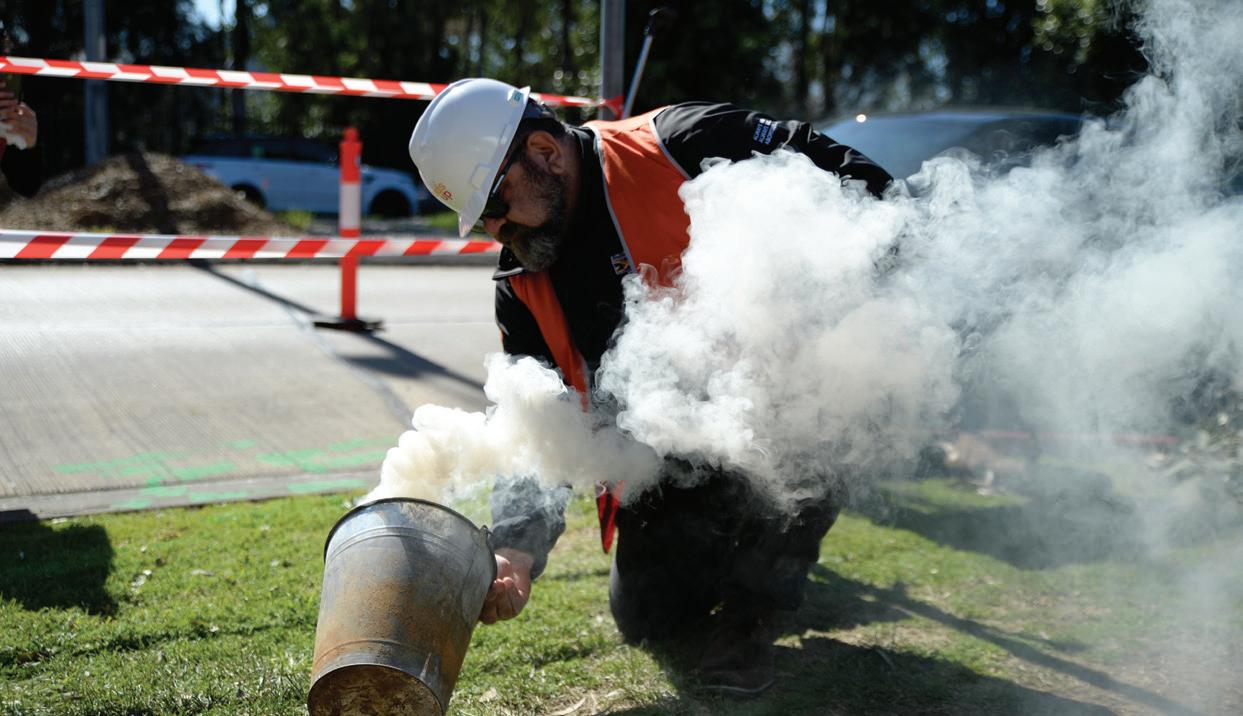
THE SMOKING CEREMONY WHICH WAS CONDUCTED IN AUGUST 2020 PRIOR TO THE START OF CONSTRUCTION.
Reliability and affordability of energy supply is a critical component of economies, and therefore top of mind when considering the longevity of urban infrastructure. With much of Sydney’s electricity transmission network dating back to the 1960s and 70s, and nearing the end of its serviceable life, TransGrid has undertaken a project to update the aging infrastructure and future-proof Sydney’s electricity supply.
TransGrid’s Powering Sydney’s Future project is set to deliver a major update to the city’s electrical infrastructure, and provide energy security to cope with increasing demands due to a growing population.
The project will allow aging cables to be retired by installing a new high-voltage connection.
A 20km, 330kV underground transmission circuit will be installed between the Rookwood Road Substation in Potts Hill and the Beaconsfield West Substation in Alexandria.
Work at the substations involves upgrade works at the Rookwood Road and Beaconsfield West Substations to
facilitate the new 330kV transmission cable circuit, as well as conversion works at the Beaconsfield West and Sydney South Substations to transition the existing Cable 41 from a 330kV connection to a 132kV connection.
The project is specifically targeted to secure safe, reliable and affordable electricity supply for the 800,000+ residents in Sydney’s CBD and inner suburbs.
Powering Sydney’s Future is the largest project TransGrid has undertaken in metropolitan Sydney in decades and is expected to create 140 new construction jobs, and inject $285 million into the New South Wales economy.
UTILITY • NOVEMBER 2020 WWW.UTILITYMAGAZINE.COM.AU 46
& SUBSTATIONS
TRANSFORMERS
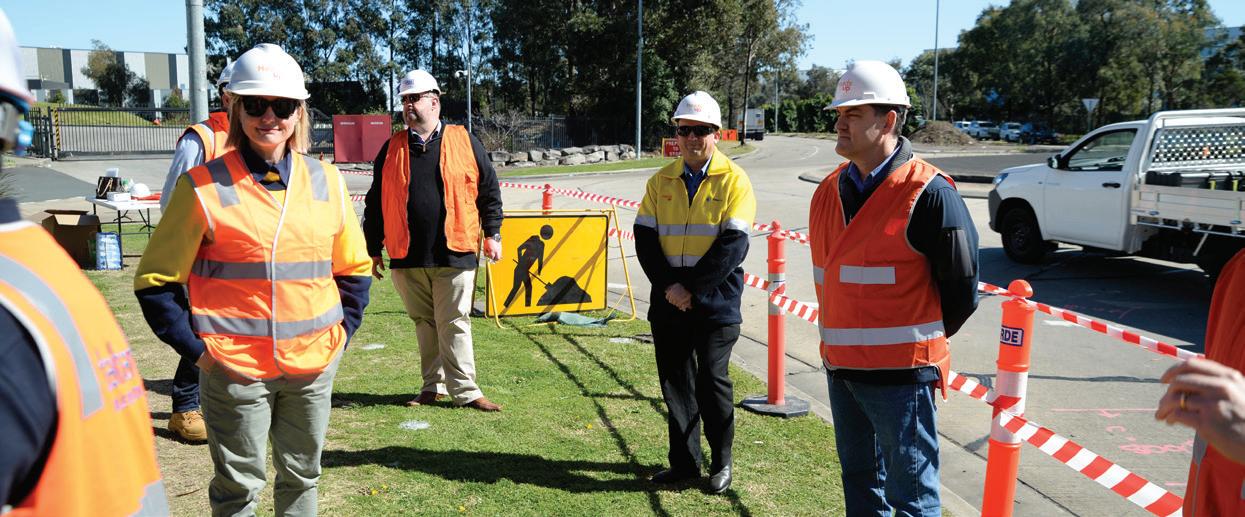
FAST-TRACKING FOR COVID RECOVERY
The project was approved by the New South Wales Department of Planning, Industry and Environment (DPIE) on 14 May 2020, following the public exhibition and submission of the Environmental Impact Statement (EIS) from 11 October to 22 November 2019.
New South Wales Energy Minister, Matt Kean, said the upgraded infrastructure would provide additional security of supply during peak demand periods for more than half a million homes and businesses.
“Parts of Sydney’s transmission and distribution networks are reaching their end of life, so this project will play a crucial role in ensuring a continuous and reliable energy supply for our communities,” Mr Kean said.
TransGrid said that the studies that supported the EIS were prepared by independent experts and included assessments of potential impacts on the environment such as noise and vibration, heritage, air quality, amenity, and traffic and transport.
TransGrid also prepared a Submissions Report in response to questions and issues raised by the community and stakeholders.
As part of the approval, TransGrid will be required to minimise impacts to mature tree canopy, and plant at least two trees for every one removed during construction. TransGrid is also working with local councils on a number of greening and bushcare initiatives along the cable route.
Powering Sydney’s Future is the 15th project to be determined through the Planning System Acceleration Program, which is fast-tracking project assessments to keep people in jobs and the economy moving during COVID-19.
TransGrid CEO, Paul Italiano, said, “The NSW Government has fast-tracked this project because Sydney’s peak electricity demand is expected to continue to grow, driven largely by the NSW Government’s record infrastructure investment and the city’s population growth.
“Powering Sydney’s Future will meet the energy needs of the nation’s largest economy.
“Sydney’s peak electricity demand has escalated since 2014 and even taking into account the current COVID-19 crisis, it is expected to continue to grow with major new
transport infrastructure projects under construction –including Sydney Metro (City and Southwest), WestConnex and the Western Harbour Tunnel, and the recently opened Sydney Light Rail.”
SCOPE OF WORKS
As well as the underground cable installation and the substation upgrades, the project will also involve the installation of additional pipes so there is space for a second cable to be added in the future as demand increases, avoiding further disruption to local communities.
TransGrid examined more than 30 cable routes before identifying a route which would lower the construction impacts for local communities because it mainly follows low traffic roads, increasing productivity and minimising the need to work at night.
To cross waterways and rail lines, TransGrid will also construct special crossings, such as cable bridges or underbores (underground crossings).
In the first stage of the project, TransGrid will dig a trench around 1.6m wide by 1.6m deep, and then install pipes which will house the cable.
In the second stage, precast underground ‘joint bays’ and communication pits will be installed before the cable is pulled through the pipes in sections in the third stage. The fourth stage will involve joining the cable sections together in the underground joint bays.
Lastly, TransGrid will conduct the permanent restoration of the road. TransGrid said this final stage will be guided by consultation with the relevant council/road authority.
TransGrid has also established a Community and Stakeholder Reference Group (CSRG) for the project to enable community participation in project delivery. This is facilitated through forums for discussion between the project team (including TransGrid and its contractor Taihan) and local representatives, including community and stakeholder groups and local councils. It is led by an independent chairperson.
Main construction on the Powering Sydney’s Future project began in August 2020, and is due for completion by November 2022.
UTILITY • NOVEMBER 2020 WWW.UTILITYMAGAZINE.COM.AU 47
& SUBSTATIONS
TRANSGRID CEO, PAUL ITALIANO, ON-SITE WITH THE PROJECT TEAM.
A QUICK Q&A WITH CYBERTEC COMPANY DIRECTOR MARK IRWIN

The industrial communications range from Cybertec has been a staple within Madison Technologies’ product offering for over 12 years. Madison Technologies sat down for a quick Q&A with Cybertec Company Director, Mark Irwin, to chat about this highly successful, but humble Australian brand.
MADISON TECHNOLOGIES HAS BEEN A DISTRIBUTOR OF CYBERTEC FOR OVER 12 YEARS NOW, BUT HOW DID THE BRAND FIRST START?
It was really the introduction of 3G, which was going to bring new opportunities in telemetry and remote monitoring, and other M2M applications. Before then, everything was really slow and ‘data’ wasn’t really a thing. Customers wanted to use new technology, but didn’t want to replace the existing equipment. We made something that looked like a dumb dial-up modem, but acted as a smarter router with Ethernet ports to bring data through.
CYBERTEC RECENTLY INTRODUCED AN INDUSTRYLEADING FIVE-YEAR WARRANTY ON DEVICES.
In general, reliability is something we’ve worked really hard on. Firstly, return rates for our product are very low, so that gives us a lot of confidence that we’re meeting our design goals in terms of good reliability. Secondly, we maintain tight control over the manufacturing process. Everything from parts purchasing through to testing – the whole process. We have also gradually increased our compliance testing.
AND NOWADAYS, MORE THAN EVER, CYBER SECURITY IS A BIG CONSIDERATION.
Cybertec constantly monitors and tests for security vulnerabilities, and we issue firmware updates with security patches as required. There are security features in the product as well – such as firewalls –and we don’t include things that can cause security vulnerabilities. If there’s a chance that something can be exploited or used incorrectly, it will be disabled in our default settings.
CYBERTEC DEVICES ARE DESIGNED TO BE USED IN EXTREME INDUSTRIAL ENVIRONMENTS.
Where and how people use the devices for data management and monitoring is quite broad.
Some customers use the Cybertec device to remotely control, monitor and manage diesel generators and pumps –such as in water and sewage treatment facilities.
Electrical utilities use Cybertec for remote management and monitoring of their power recloser systems, as well as embedding the device into their SCADA network. It is also used to control, monitor and manage their remote solar farms and battery banks.
CYBERTEC IS AN AUSTRALIAN COMPANY BASED IN SYDNEY. TELL US A BIT ABOUT YOUR SET UP?
We have a design centre in Sydney – all engineering staff are located there. All device tests and final assembly are done in-house at our manufacturing hub. We also work with various Australian manufacturing companies for custom design components. We do as much local manufacturing as possible – and have done for the life of the company.
2020 HAS BEEN A YEAR OF SURPRISES GLOBALLY. WHAT IMPACTS HAS/WILL COVID HAVE ON YOUR OPERATION?
Supply chains are affected for some things, but the impact has been minimal and manageable as we’ve been designing and manufacturing in Australia for so long. If anything, the current environment has really highlighted to a lot of people the need for our sort of product that connects you remotely.
WHAT’S NEXT FOR THE CYBERTEC BRAND?
We are always working to improve the product range. We realise as the costs of ‘data’ have come down, the application opportunities have gone up.
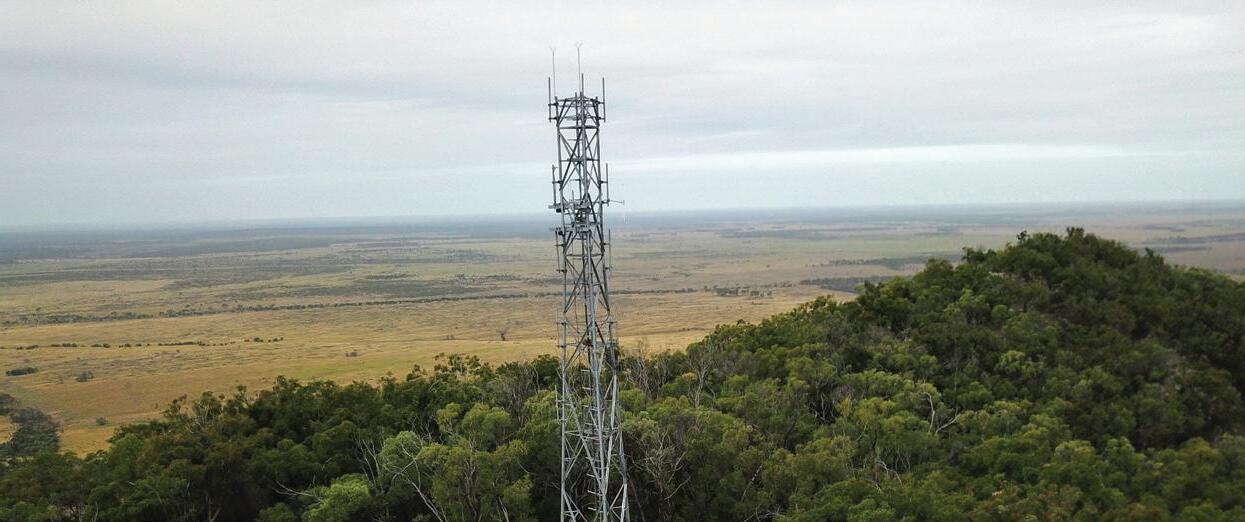
To read the full interview with Cybertec or to learn more about the range, head to www.madison.tech/cybertec-qna or phone 1800 72 79 79.
TRANSFORMERS & SUBSTATIONS | Utility Partner Solutions
UTILITY • NOVEMBER 2020 WWW.UTILITYMAGAZINE.COM.AU 48

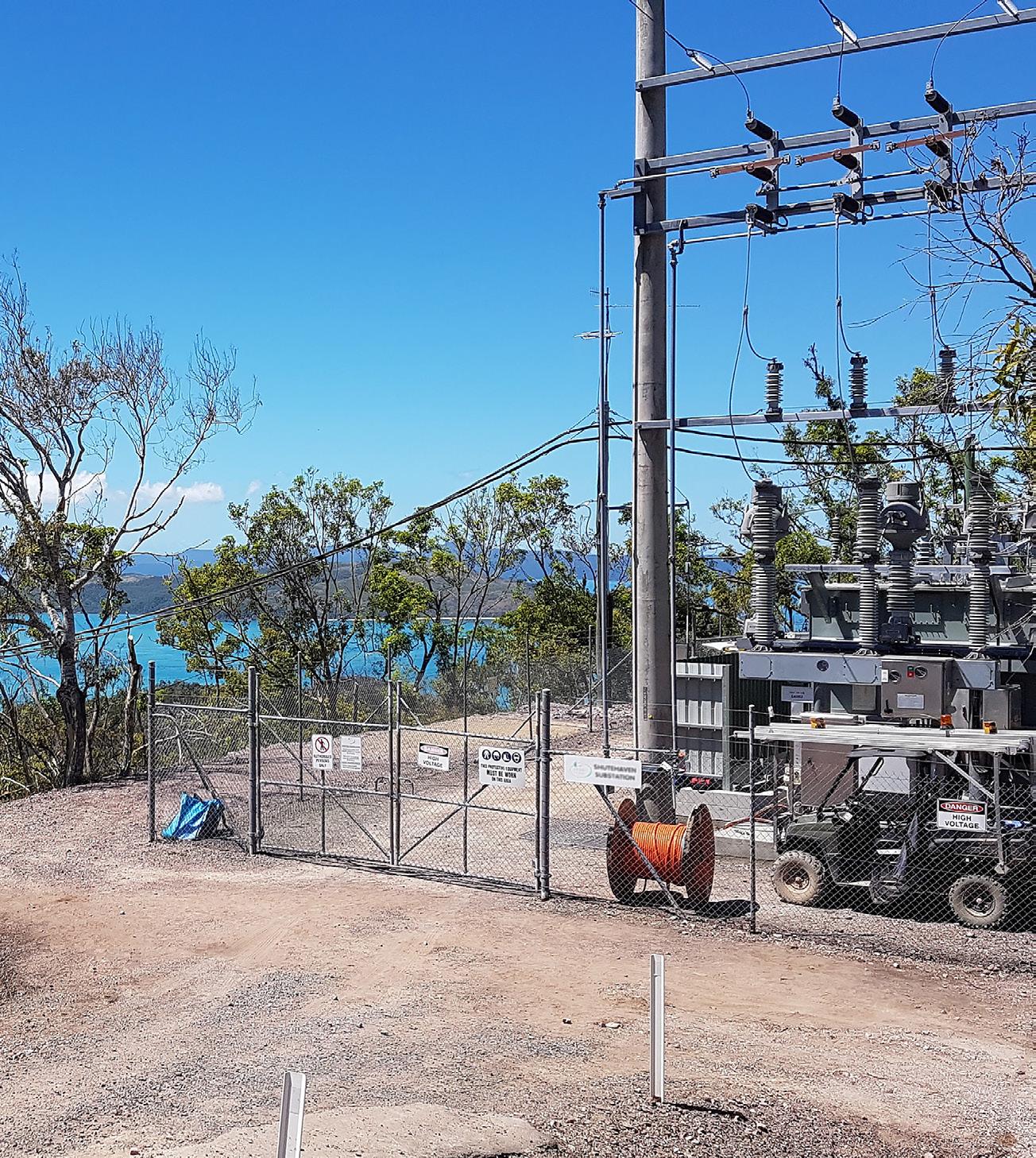
Connect with confidence.
Madison Technologies has been the distributor for Cybertec for over 12 years, providing a range of hardware solutions locally across our national supply chain, and a team of experienced sales and technical support engineers specialising in Cybertec products.
Sales Enquiries 1800 72 79 79 www.madison.tech
9 Real-time polling and response 9 DNP3 Outstation supported 9 Constant monitoring of connection status and quality 9 Proven reliability 9 Compact rugged metal design 9 Wide operating temperature 9 Industry leading security and VPN options 9 5 Year industry leading warranty Monitor and interact with assets remotely.
Cybertec modems are locally designed and made for Australian conditions . Trusted in the Australian Utility sector for over a decade.
OPTIMISING FIELD OPERATIONS WITH RUGGED MOBILITY SOLUTIONS
Digital technologies have created new opportunities for integrating advanced data and analytics into workflows, giving utility field crews the ability to stay connected, and capture, assess and share critical data while on the job. The harsh environments that these crews operate in are unfriendly to electronic equipment, highlighting the need for rugged mobility devices that can hold up in any setting. In August 2018, Zebra Technologies acquired Xplore Technologies, a leading developer of rugged tablets and performance accessories.
Utilities that have invested in a mobile workforce are seeing vast improvements in business efficiency. Instrumental to successfully digitising mobile workforces are mobile devices that can withstand the scorching sun, blinding dust or heavy rain, and there aren’t many good options in the market today.
NOT ALL DEVICES ARE CREATED EQUAL
Many tablets claim to be ‘rugged’. This is often based on the Ingress Protection (IP) rating, which indicates the sealing effectiveness of electrical enclosures against intrusion from foreign bodies and moisture.
However, this rating doesn’t tell the whole story. While consumer devices can tout these IP ratings, it does not mean that all aspects of ruggedness were addressed, such as drop protection, vibration protection, port cover sealing and screen strength.
The Zebra L10 tablet is rated as IP65, which means it’s totally dust tight and protected against water projected from a nozzle – even when the port covers are open. Yet the IP rating is just one piece of the puzzle.

Utility field crews spend most of their time outside, in all weather conditions. Virtually nothing – including gloves, rain and snow – stops users from entering information on the L10 tablet’s bright 500 nit display, which can be upgraded to a 1,000 nit View Anywhere® display, ensuring the screen is easy to see in any lighting.
It can withstand a drop of 1.8m onto plywood over concrete or a drop of 1.2m onto concrete, which is in compliance with MIL-STD-810G – a US military drop test standard. It is C1D2 certified, which makes it safe to use in potentially hazardous environments where flammable or explosive gases, or certain chemicals and vapours, could be excessive under abnormal circumstances. It also has a magnesium-alloy frame for harder-thansteel durability.

The L10 tablet family includes the XSLATE, a lightweight slate tablet; the XPAD, which comes with a hard handle and built-in barcode scanner option; and the XBOOK, a 2-in-1 laptop/tablet complete with a keyboard for desktop configuration.
Unlike consumer-grade devices where the warranty only lasts for one year, Zebra’s L10 tablet comes with a three-year standard warranty, providing businesses with a lower total cost of ownership and peace of mind.
THE BEST OF BOTH OPERATING SYSTEMS
Zebra’s range of rugged tablets have the speed, intelligence and security needed in enterprise mobile computing environments, and are capable of working in extreme temperatures and environments – which most consumer tablets simply can’t do.
The L10 was first released with the Windows operating system (OS). In July 2019, Zebra introduced the Android OS to the L10 family. While Android mobility solutions are relatively popular, the low-cost, consumer-grade Android devices aren’t built to withstand the physical rigours of field use.
With the L10, utilities can now enjoy the familiarity of an Android OS without compromising on the tablet’s functionality, durability or security.
UTILITY • NOVEMBER 2020 WWW.UTILITYMAGAZINE.COM.AU 50
SAFETY | Utility Partner Solutions
For more information, please visit zebra.com


ENGINEERING AND CONSTRUCTION INDUSTRY
LEVERAGING AI TO AUTOMATE DEFECT DETECTION



HOW PIPE AI WORKS TRAIN DETECT REPORT
Trains the model to identify defect classifications.
WHAT CAN PIPE AI DO FOR ME?
Detect anomalies faster and fix infrastructure
sooner
Action insights more often
Streamline pipe asset management operations
More capacity for complex analytical tasks
Uses AI to review CCTV footage of pipes to identify cracks and anomalies.
Drafting and planning systems more accurately to achieve desired functions
Piping vibration, thermal and stress analysis
Sourcing more valuable engineering solutions
More thorough site inspections
Compliance with authority codes
Global application - applicable to any pipe material
Ability to apply expert classification and further train the model as the database builds
Concise classified defect report generated at completion of analysis
Generates a concise defect report to inform future maintenance plans or repair schedules.
Detect up to 15% more defects than a manual review

Contact us to find out how Pipe Ai can deliver better efficiencies within your organisation.
+61-7-3532 1300
enquiries@peakai.com.au
www.peakai.com.au
Longitudinal Crack Blockage Fine Roots
24/7 assessment
Safety first:
ROBOT ENABLES NEXT-GENERATION ASSET INSPECTIONS
Water Corporation maintains two underground pipeline tunnels in the Perth Hills – the 5.6km Canning Tunnel and the 3.9km Wungong Dam Tunnel. Inspecting these rock-lined tunnels is an important task that historically has been undertaken by work crews, but robotic vehicles are helping reduce the safety risks for workers.
An assessment involves various tests and samples or remedial work when needed, presenting some risks for entry crews. Typically, crews would make visual inspections using torches and often with limited outside communication.
To mitigate this safety risk, Water Corporation began investigating the potential to conduct remote inspections using robotic vehicles.
A team led by Water Corporation Senior Engineer ROV Design, Daniel Rechichi, has developed a robotic crawler that can conduct a complete visual assessment prior to any crews entering the tunnel, including the ability
to identify potential rock falls and other safety-related issues.
In addition to allowing remote inspection, the new vehicle also supports crews tasked with regular tunnel maintenance.
Mr Rechichi said that initial remote inspections allow images from inside the tunnel to be streamed in real time to crews outside.
“This helps identify potential safety risks, such as rock falls or areas where the rock face might be compromised, before crews enter the tunnel,” Mr Rechichi said.
“The remote crawler has panning cameras which allow for a precise
visual analysis. It also features a 360-degree camera, providing a virtual reality perspective in real time.

“Through the use of robotic vehicles, we’re hoping to conduct a planned inspection later this year entirely remotely and without crews needing to enter the tunnel.
“The other benefit of using remote vehicles is that when crews are required to enter the tunnel for maintenance, the robotic crawler provides portable power, light and communications. This allows us to maintain audio-visual contact with our people at all times, increasing safety and efficiency.”
UTILITY • NOVEMBER 2020 WWW.UTILITYMAGAZINE.COM.AU 52
SAFETY
A POWERFUL PARTNER FOR FIELD CREWS
Mr Rechichi said that the crawler is unique from other Water Corporation assets due to its size and power.
“It weighs about 3,500kg and carries a 35kWh battery bank, giving it a total driving range of more than 10km.
“The vehicle is four-wheel drive and can be driven as a skid-steer or articulated depending on the mode selected. It has a hydraulic steering system, a front-end blade for clearing obstructions and hydraulic power take-off for hydraulic tools such as diamond core drills, high pressure water pumps, dewatering pumps and direct current welders.
“It has eight fixed cameras, a pantilt-zoom camera and communications links enabling connection of virtual reality cameras or LIDAR (light detection and ranging) units if required.
“The vehicle is controlled either by an outside operator via a towed-fibre optic umbilical or a local operator using a wireless hand controller.
“It is currently set up to work in situations where water levels are lower than 600mm, but is designed to be easily upgraded to work fully submerged.”
Water Corporation’s engineering team worked on this project on and off for about three years, between 2016 and 2019. Approximately one year of fulltime work was devoted to the project.
The design and build was carried out by Mr Rechichi and Water Corporation Senior Technician, Graeme Ellis. Mr

Ellis was responsible for electrical assembly, while Mr Rechichi undertook design, mechanical fabrication and software generation.
The task of deploying the machine required a larger crew of Water Corporation ROV operators to isolate the asset and deploy the machine.
The crawler was used to inspect 3km of the Canning Tunnel in late 2019. It traversed this section several times and assisted entry crews by providing communications and power for concrete core sampling and rock bolt testing.
Geotechnical engineers who inspected live footage said the vehicle supplied ample information to help them assess the tunnel’s integrity without entry. Another entry
is scheduled for late 2020 from the opposite end of the tunnel, with crews only needing to enter the tunnel if maintenance is required.

Mr Rechichi said that Water Corporation is continually investigating new ways to make tasks safer, simpler and more efficient through new technologies.
“Some assets, such as tunnels, require regular inspection and maintenance, which can pose a challenge due to the confined nature of the space crews are operating in. Remote vehicles are a perfect solution, allowing work to be undertaken effectively while, most importantly, protecting the safety of our people.”
UTILITY • NOVEMBER 2020 WWW.UTILITYMAGAZINE.COM.AU 53
SAFETY
Wastewater that is discharged into municipal wastewater treatment plants (WWTP) may come from homes, industries and businesses. Contaminated wastewater can negatively impact the environment, so reliable monitoring of WWTP performance is essential.
The major aim of wastewater treatment is to remove as much of the suspended solids as possible before the remaining water is released into public waterways.
In the inlet area of the WWTP, wastewater volume and flow must be monitored to prevent subsequent treatment processes from being overloaded. Monitoring the water quality of incoming loads also helps to protect the specific environmental conditions needed for biological treatment (nitrification, activated sludge, aeration).
Measurement in the outlet ensures compliance with regulatory requirements and that the treated
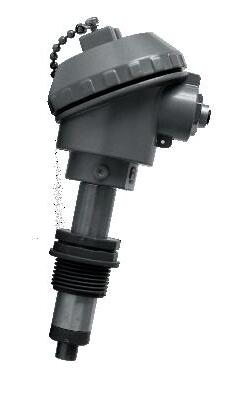
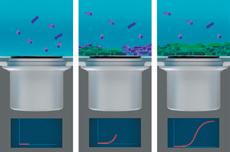
wastewater is safe to discharge. Total Organic Carbon (TOC) and Chemical Oxygen Demand (COD) levels indicate the quality of treated wastewater.
REDUCING THE RISKS OF DISINFECTION BY-PRODUCTS
Depending on the region, drinking water from groundwater or surface water is treated by means of chlorine or ozone processes as it usually contains natural organic matter.
Disinfection By-Products (DBP) are chemical, organic and inorganic substances – such as trihalomethanes, haloacetic acids and chlorite – that can form during a reaction of a disinfectant
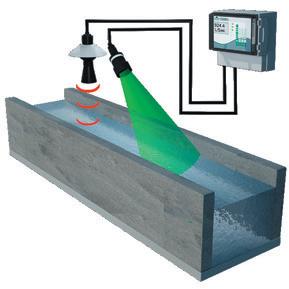
with naturally present organic matter in the water.
Formation of DBP depends on temperature, water pH, reaction time, disinfectant dose, type and concentration of organics. DBP can be harmful to human health, but monitoring of inlet water will reduce the risks associated with DBP formation and enable dosing of disinfectants based on incoming organic load. It is also important to monitor outlet water to ensure removal of organic content and maintain high product quality.
Germany’s LAR, along with its newly-appointed Australian distributor Bintech Systems, are here to help by providing the most reliable TOC and COD analysers for the most demanding of wastewater applications. Please contact Bintech on 1300 363 163 or sales@bintech.com.au for further information.
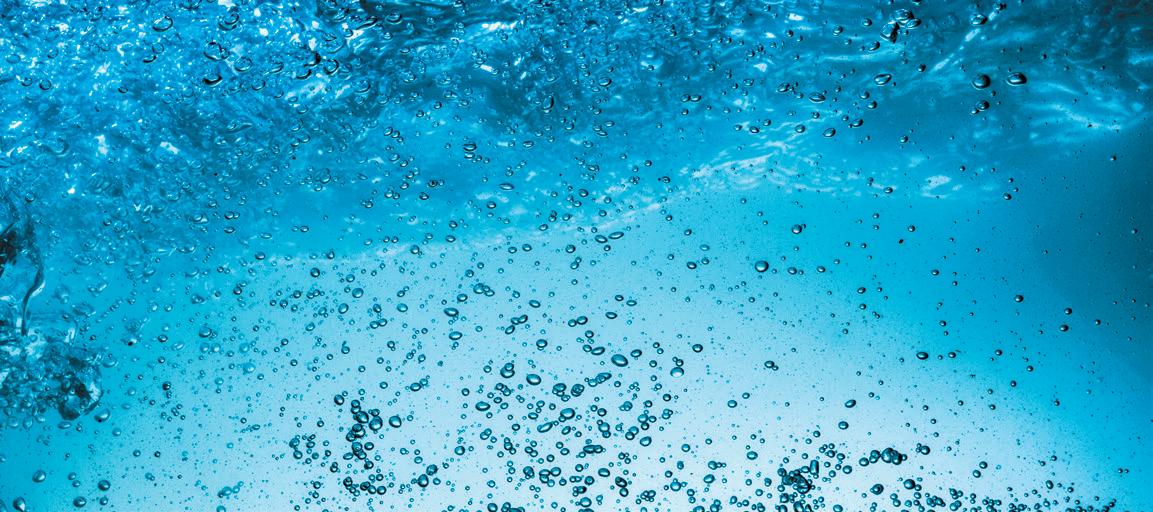


UTILITY • NOVEMBER 2020 WWW.UTILITYMAGAZINE.COM.AU 54
THE IMPORTANCE OF MONITORING TOC AND COD IN WASTEWATER TREATMENT SAFETY | Utility Partner Solutions & Velocity measurement Continuous Biofilm Monitoring Sample Biofilm growth signal over time • Residual Chlorine • Dissolved Ozone • Dissolved Oxygen • Suspended Solids • PH/ORP • Conductivity • Fluoride • Turbidity INNOVATIVE WATER ANALYSERS BIOFILM ANALYSER ANALYTICAL CONTROLLERS PROCESS INSTRUMENTS LAR • Lightweight, compact design • No interruption to service • ATEX Ex mb Zones 1 & 2 approval • Minimal installation costs • Maintenance-free • RS485 Modbus • IP68 • Non-contacting • Cost-effective • Early detection of Bacterial Growth on surfaces • Monitoring & optimisation of sanitation requirements. NEW TURBIDITY MONITOR BINTECH SYSTEMS WATER SOLUTIONS Many other measurements available 1300 363 163 sales@bintech.com.au www.bintech.com.au • TOC • COD • TOD • BOD • Toxicity • TN • Oil-in-Water NEW
Envirosonic is a proven and powerful ultrasound system to control cyanobacteria in ponds, lakes and reservoirs without the use of chemicals

EnviroSonic facts
EnviroSonic technical
» Shear stress
» We control non-motile algae, which include all blue green algae at a higher rate than the reproduction rate.
» Can be installed in remote areas on solar pontoons, or with a small float near a mains power outlet.
» GSM is available.
» Envirosonic will save you money.
» Eliminates the use of toxic chemicals.
» Ultrasound is safe for all invertebrates, fish, animals, and plants.
- The powerful ultrasound waves between 15 and 50 kHz radiating out in a semicircle from the transducer at great speed subject the algae to extreme stress, causing the algal cells to collapse.
- The Envirosonic ES300 controls a semicircle area of 300 metres , with two units on a solar powered pontoon giving a 600 metre circle of control.
- The smaller ES50 unit mains powered controls an area of 50 metres semicircle, and is ideal for smaller pondages and fish stocked lakes
» Pulsed ultrasound
- Algae cell boundary layers become saturated with dissolved gases.
- Bubbles within the algae cells created by ultrasonic pressure collapse.
- Localised cellular cavitation from the ultrasound waves causes disruption of water molecules generating oxidising compounds... H2O2 and hydroxial radicals, which are short lived, but cause further disruption to algal cells.
About us
We are the sole distributor for EnviroSonic in Australia. EnviroSonic ultrasound has been successfully installed in horticulture, aquaculture, potable water and settlement ponds at locations including: Westernport Water, Tas Water, Tuki Trout Farm, Wauchhope Treatment Utility, Bendigo Council, Huon Salmon, Steggles Chickens, Murrumbidgee Irrigation, SEQ Water, Coliban Water and Golf Courses.
CONTACT: Peter Harries M: 0411 733 473
E: prharries@bigpond.com
www.envirosonic.com.au

EXAMINING THE IMPACT OF SEVERE EVENTS ON AUSTRALIA’S ENERGY GRID THE ROAD TO RESILIENCY:
By Charlie Richardson, Accenture’s Utilities Lead in Australia & New Zealand, and Tony Histon, Transmission & Distribution Lead, Accenture Asia-Pacific, Middle East & Africa

The devastating east coast bushfires of last summer, combined with the COVID-19 pandemic are among recent examples of increased extreme events ravaging Australian communities and placing increased pressure on utility companies to respond with greater network resilience and flexibility.
DISASTER MANAGEMENT UTILITY • NOVEMBER 2020 WWW.UTILITYMAGAZINE.COM.AU 56

57
With the severity and frequency of extreme events on the rise, recent Accenture research has revealed alarming findings – only a quarter of utility executives believe their organisation is well prepared to deal with the operational and financial challenges that arise from such catastrophic events.
For years utilities have focused on grid reliability, however this siloed approach is no longer viable to survive the rising incidence of extreme events. Instead, utilities must augment their focus towards building greater resilience. Beyond extreme weather events, cyber attacks on the energy grid and, as seen in recent months, global pandemics, are further challenging utilities’ existing strategies to deal with the fallout of such events. Australian utility providers must prioritise engineering resiliency, or else come face to face with devastating consequences.

A NEW THREAT LANDSCAPE
Multi-disaster events such as weather and cyber attacks are becoming more frequent and severe, increasing the scale of outages and hampering restoration efforts. Accenture’s recent survey revealed 92 per cent of utilities executives expect extreme events to increase and worsen over the next decade. Recent events such as the COVID-19 pandemic have added additional levels of complexity, increasing the risks posed to providing safe and reliable power to customers and essential services and businesses.
Utilities are also facing new requirements and expectations in the pursuit of green energy, with the proliferation of
distributed energy such as solar and wind the catalyst for changes to traditional distribution systems. Not only that, utilities are also battling evolving regulatory changes which are expanding the scope of many utilities’ responsibilities, while also trying to maintain insurance and financing at competitive rates.
To top it off, with the increasingly steep costs of maintaining aged transmission and distribution assets, utilities are reaching a critical breaking point only expected to worsen without the right course of action. Extreme events are now a permanent fixture of the utility landscape and so companies must respond in new ways.
MAKING THE SHIFT FROM RELIABILITY TO RESILIENCY
Historically, most utility companies have focused on ensuring reliability by planning for anticipated fault scenarios in order to minimise the frequency and duration of outages. The widespread issues resulting from natural disasters and cyber attacks have often been considered infrequent anomalies, yet Accenture’s research shows these anomalies are now a repeated occurrence.
Utility operators must therefore design and operate for resilience. This means being able to maintain sustainable operations and deliver effective service under the threat of more frequent and damaging events – from natural disasters to cyber attacks and everything else in between. This requires a definitive shift from developing reliability tactics, to developing a strategy for addressing wider issues and frameworks needed to support resilience.
How can utilities achieve this paradigm shift? It must start from the very top. At the C-level, executives must take responsibility for developing a strategy focused on resilience. Once the foundations are in place this must be implemented across all levels of the organisation, embedded within all processes, structures and governance. Regular dialogue with internal and external stakeholders is then paramount in keeping everyone informed and engaged as the strategy evolves to meet external challenges.
For example, partnering with meteorological experts to map future weather scenarios and events, and developing intelligent systems such as digital twins, will help utilities better understand the impact of various events. Advanced analysis of a broad range of contingencies resulting from faults and demand fluctuations will also help utilities better prepare and respond. Engaging in regular, open discussions with regulators and other government bodies within the industry is a critical final step in planning for resilience.
INVESTING IN DIGITAL SOLUTIONS
Accenture’s research showed increased system flexibility will become the greatest priority for utilities over the next decade, with 95 per cent agreeing a more flexible network is the most cost-effective method to increase resilience. Investment in digital solutions across microgrids, distributed generation, storage, connected services and network reconfiguration will become critical in supporting resiliency and flexibility.
Maintaining a digital twin of the utility network can help utilities simulate and plan for future disaster scenarios. Enel in Sao Paulo has undertaken the Urban Futurability project
DISASTER MANAGEMENT UTILITY • NOVEMBER 2020 WWW.UTILITYMAGAZINE.COM.AU 58

to build a resilient, sustainable urban electricity system. This includes a network of about 5,000 grid sensors that feed information to a digital 'twin' of the system that simulates operations. By using 3D modelling and Artificial Intelligence (AI), the twin provides real-time data to operators and stakeholders for more pervasive visibility and control.
Across Europe, grid flexibility improvements have been prioritised as a means of more effectively integrating Distributed Energy Resources (DER), addressing grid bottlenecks, reducing congestion and lowering costs. In the UK, the country’s largest electricity distributor, UK Power Networks (UKPN), has implemented an advanced automated control system to manage over 500MW of power generated by DER. Supported by innovative control schemes and AI to process big data and determine safe, efficient ways to run the network, the control system allows for a comprehensive view of network operations and supports real-time operations, creating more effective dispatching of field teams in the event of extreme weather events.
A THREE-PRONGED APPROACH
There are three broad areas for utilities to improve their network, once the core foundations of resiliency have been put in place. These areas include:
• Hardening the network – utilising traditional approaches including the undergrounding of assets, pole replacements and developing flood defences
• Reinforcing restoration effectiveness – strengthening the network capability to reduce outage time to the minimum
• Developing greater system flexibility – reviewing current network visibility and investing in digital solutions
The flexibility of the network is most important in reducing the impact of extreme and potentially multi-disaster events. There are numerous ways in which flexibility can be achieved – whether that’s through implementing systems that automatically reconfigure the network to use redundancy or DER that provide localised support.
Greater flexibility in the network can also be more costeffective in long-term approaches responding to high impact, extreme events. Not only that, advocating for flexibility supports the wider agenda when it comes to greater active management of the network to provide cost-effective support for renewable energy generation, electric vehicles and customer or community-owned batteries.
Shifting to a resiliency mindset no doubt has its challenges, but the journey is a necessary one. Waiting to implement the foundations of resiliency and the investments needed to future-proof the network is no longer an option. As an industry, we cannot remain at the mercy of extreme weather and black swan events, the operational and financial risks are simply too high.
Utilities must take the lead and work together to establish industry standards and definitions for resiliency, and must continue delivering sustainable and effective customer services. This must involve digital investment and solutions that enable greater flexibility and visibility, and support real-time decision-making. By championing a strong foundation and resiliency strategy, strengthening the network and prioritising flexibility, utilities will be in the best possible position to prepare for the tumultuous landscape.









ABOUT US
Edge Underground is a precision microtunnelling contractor that operates in Australia and the USA. With a focus on innovative technology and expertise, Edge Underground designs and enhances the performance of trenchless equipment.
•
•
•
•
UTILITY
NOVEMBER 2020
•
OUR SERVICES
Microtunnelling
Pipe Jacking
Thrust Boring
Laser Tunnel Boring
* stuart@edgeunderground.co 8 www.edgeunderground.co 0458 000 009 ( JACKED 1300 522533
GUIDED BORING SPECIALISTS

60 UTILITY • NOVEMBER 2020 WWW.UTILITYMAGAZINE.COM.AU Crucial research
SEWER CORROSION CORROSION
HELPS KEEP
research CORROSION AT BAY

Concrete is the most commonly used material in sewers, especially for large sewer pipes, which can be attributed to its strength, durability and relatively low maintenance costs. However, due to the nature of concrete and the unique sewer atmosphere, corrosion of concrete pipes and associated infrastructure (e.g. manholes and pumping stations) has been widely recognised as a significant challenge for the utility industry.
61 UTILITY • NOVEMBER 2020 WWW.UTILITYMAGAZINE.COM.AU
CORROSION
Concrete corrosion in sewers is caused by a series of abiotic and biotic corrosion processes. Acidification of concrete caused by carbonation and gaseous hydrogen sulfide initiates the first stages of corrosion, before developing into the highly destructive, microbially-induced corrosion process.
The chemical reactions of carbon dioxide and gaseous hydrogen sulfide with the concrete lower the surface pH of the concrete to about eight, enabling the growth of sulfide oxidising bacteria.
As the surface pH gradually decreases, the sulfide oxidising bacteria colonise the concrete surface and produce large amounts of biogenic sulfuric acid, which can directly attack the cementitious materials in concrete. Collectively, gaseous hydrogen sulfide and microbial activities are the major causes of concrete corrosion in sewers.
Professor Zhiguo Yuan, Director of The University of Queensland’s Advanced Water Management Centre, said that concrete sewer corrosion is a long-standing and costly problem for the water industry.
“The corrosion and deterioration of concrete sewers require costly rehabilitation and replacement by utilities. An annual expenditure of billions of dollars was estimated for repairing and replacing corroded sewers worldwide, which is expected to increase as the aging pipes proceed to fail,” Professor Yuan said.
“In the US alone, corrosion is causing sewer asset losses estimated at around $14 billion per year. The concrete corrosion process can result in the rapid loss of concrete mass, which can be up to 10mm per year and reduce 50-100 years of expected service life to less than ten years in some extreme conditions.”
Currently, various technologies have been developed to control or mitigate the concrete corrosion process in sewers. The technologies can be divided into four commonly used strategies:
• Preventing hydrogen sulfide production in the liquid phase, or minimising its transfer to sewer air through the dosing of chemical agents such as magnesium hydroxide, iron salts, hydrogen peroxide, nitrate, caustic and free nitrous acid
• Using ventilation systems to reduce hydrogen sulfide and humidity levels in sewer air, and slow the corrosion process. In some cases, the ventilated sewer air needs to be treated with physical adsorption, chemical scrubbing or biofilters to reduce hydrogen sulfide levels and prevent odour issues
• Treating concrete surfaces exposed to sewer air with antimicrobials like silver-loaded zeolite to inhibit the activities of bacteria and reduce sulfuric acid production, or protective epoxy coatings to prevent the direct contact of sewer gas with the concrete pipes
• Adding alternative binders, such as fly ash and silica fume, to the cement for new sewers, and alternative aggregates like ground limestone, in order to increase its corrosion resistance
Professor Yuan said that all of these strategies can help, but at a cost.
“The first two strategies require continuous or frequent chemical dosing or operational efforts to achieve effective
corrosion control, which incurs continual, substantial costs,” Professor Yuan said.
“For the third strategy, the coating and surface treatment are temporary approaches that need regular reapplication, disrupting the operation of the sewer and inducing hefty costs.
“With the fourth strategy, the addition of alternative binders and aggregates doesn’t show significant improvements in corrosion resistance in very acidic conditions.
“As such, there is a need to develop a long-lasting, effective and environmentally-friendly antimicrobial agent to be added into concrete, since the microbial process plays a critical role in the corrosion process.”
NOVEL APPROACHES TO OVERCOMING CORROSION CHALLENGES
Professor Yuan said that the Advanced Water Management Centre’s Sewer Research Group (SRG) has been working very closely with the Australian water industry for over 15 years on sewer corrosion mitigation.
“We have developed modelling tools and various technologies to support the industry in its constant battle with sewer corrosion. We are currently undertaking two projects.”
Reducing concrete corrosion rate using free nitrous acid
This novel method controls microbial concrete corrosion in sewers by using a brand new, low-cost and environmentallyfriendly antimicrobial agent: free nitrous acid (FNA).
Since microbial processes play critical roles in the corrosion process, one potential solution is to suppress the corrosion-inducing microbes by blending antimicrobial agents into cement. The SRG proposed the use of FNA as an antimicrobial agent based on its previous groundbreaking research, which demonstrated that FNA, at parts per billion (ppb) levels, is a metabolic inhibitor to a broad range of microorganisms, and at parts per million (ppm) level, is a potent biocidal agent, causing cell death/paralysis.
FNA can be applied in different ways:
• For new pipes, the SRG proposes that nitrite is incorporated into cement as an admixture. It is hypothesised that when corrosion is initiated and an acidic concrete surface starts to form, nitrite released from the wet concrete surface is acidified to form FNA. The FNA generated in-situ would provide ongoing inhibition to the growth of corrosion-inducing microorganisms throughout the service life of the sewer pipe
• For existing sewers, the SRG proposes spraying nitrite on the concrete surface to instantly kill the corrosioncausing microorganism, via the strong biocidal effects of FNA. The recovery of the microbes will take years, thus intermittent spraying with an interval of several years would be effective to slow down the corrosion process
Ventilation
Recently, the SRG received an Australian Research Council (ARC) Linkage Project grant, enabling it to proceed with its work on reducing sewer corrosion through model-supported ventilation control, in partnership with DC Water (US), Melbourne Water, Urban Utilities and Water Corporation.
It is universally recognised that sewer ventilation influences humidity and hydrogen sulfide levels in sewer
UTILITY • NOVEMBER 2020 WWW.UTILITYMAGAZINE.COM.AU 62
CORROSION
air, thus influencing sewer corrosion rate. However, the quantitative dependency of corrosion on sewer humidity has not been well established.
In this project, the SRG is aiming to investigate the impact of sewer wall moisture on the viability and activity of the corrosion-inducing biofilms.
The project will also develop dynamic models to predict sewer humidity, temperature and corrosion rates, and provide ventilation strategies to reduce sewer corrosion, with further outcomes to be revealed within the next three to five years.
TESTING OUT THE TECHNOLOGY IN REAL-WORLD SEWER SYSTEMS
Professor Yuan said that the SRG has been investigating the biocidal effects of FNA on sewer biofilms to reduce the generation of hydrogen sulfide for over ten years.
“This has led to the development of the Cloevis technology. With this technology, FNA is periodically added to sewage at pumping stations (e.g. 8-24 hours every 2-3 weeks).
“The shock dose of FNA leads to inactivation of sulfide-producing sewer biofilms in the water phase, thus suppressing sulfide formation in the following two to three weeks when another dose is due.
“Since 2013, we have extended the technology to control biofilms on concrete surfaces exposed to air, thus reducing corrosion even in the presence of hydrogen sulfide in the air phase.”
Professor Yuan said that South East Water, City of Gold Coast, Urban Utilities and US-based DC Water all collaborated on the FNA project and the technology has been successfully tested in the City of Gold Coast’s sewer manholes.
“Concrete coupons with calcium nitrite as an admixture were exposed in a sewer manhole, together with control coupons that had no nitrite admixture. The corrosion process was monitored by measuring the surface pH, corrosion product composition, concrete corrosion loss and the microbial community on the corrosion layer,” Professor Yuan said.
“During the exposure, the corrosion loss of the admixed concrete coupons was 30 per cent lower than that of the
control coupons. The sulfide uptake rate of the admixed concrete was also 30 per cent lower, leading to a higher surface pH in comparison to that of the control coupons.
“The results obtained demonstrated that this novel use of calcium nitrite as an admixture in concrete is a promising strategy to mitigate microbially-induced corrosion in sewers.
“Work has also been completed at the Luggage Point Wastewater Treatment Plant in collaboration with Urban Utilities. It was demonstrated that the calcium nitrite admixture level in the concrete correlates positively with the corrosion mitigation effect, with 17 per cent and 47 per cent reduction in the corrosion rate for one per cent and four per cent calcium nitrite, respectively.”
Professor Yuan said that in addition to the completed field work, there are long-term corrosion experiments happening in the laboratory corrosion chambers.
“Our world-class corrosion chambers are designed to simulate real sewer conditions at crown and tidal regions with controlled levels of hydrogen sulfide, humidity and temperature, which are favourable to investigate the fundamental corrosion mechanism and microbial activities,” Professor Yuan said.
“A three-year laboratory experiment, including more than 220 concrete coupons at different FNA levels (zero per cent, one per cent, two per cent, three per cent and four per cent), was started in 2019 in order to identify the long-term effects of FNA, the underpinning mechanism, the microbial activities and their evolution with time.
“These fundamental studies are extremely beneficial to obtain a thorough understanding of this promising technology, and serve as guidance for further study and practical applications.
“In addition to closely working with our industry partners and disseminating knowledge to these partners directly, we will continue to publish our results at industry conferences and in peer-reviewed research journals to broaden the influence of this technology. We are keen to assist industry with constructing new admixed concrete pipes and installing them into real sewer systems.”

63
CORROSION
OPERATIONAL EFFICIENCY FOR WASTEWATER INFRASTRUCTURE
Efficient and compliant wastewater treatment infrastructure is critical to environmental, social and economic sustainability. Wastewater systems must be continuously monitored and maintained to ensure consistent, regulated quality. In addition, the restrictions on travel imposed by COVID-19 highlight the need for quality real-time monitoring that delivers accurate and reliable asset performance data for remote operators.
Long-term reliability of sewage collection and treatment infrastructure is essential for the maintenance of public health. Proactive management of this wastewater infrastructure is essential for long-term sustainability, resilience and security.
A considered and coordinated approach to asset management decreases costs by minimising expensive reactive maintenance, and aids in delivering greater return on investment for essential infrastructure.
Driven by advances in technology, industry expectations and changing regulations, how treatment systems are designed and managed is continually evolving for both public and private operators. Adapting to changes in regulation, while delivering operational efficiency and economic viability is an ongoing challenge.
Key benefits of effective asset management:
• Improved system performance and condition
• Better understanding of level of service through robust planning tools
• Capital works cost saving through existing asset optimisation and utilisation
• Reduced risks in design and construction stages through solutions which consider safety, operational flexibility and future operational needs
• Improved value for money by identifying solutions that satisfy technical, regulatory, environmental, economy, social and sustainability requirements
EMBRACING NEW TECHNOLOGIES TO ASSIST IN EFFECTIVE ASSET MANAGEMENT
Effective monitoring aids in delivering operational security, continuity of service and compliance with environmental regulations.
True Water provides operational and management services for small to medium sized sewage treatment plants in Australia and the Pacific. Our experience in asset management identified the lack of a cost-effective, high-quality, reliable, multichannel telemetry system
to service the wastewater industry. Many operators use expensive monitoring options to manage small to medium sized assets, with costs and licensing fees usually prohibitive.
Public and private wastewater treatment facilities need to take advantage of new technologies when managing their assets. Monitoring is a key management tool.

True Water has developed the TELEmi® remote monitoring system to aid in the management of sewage treatment infrastructure. TELEmi® is a quality, lower cost alternative for small- to medium-scale projects or decentralised infrastructure, particularly when compared to implementing a top end system designed for large-scale projects such as SCADA.
Advanced maintenance software supports the telemetry system, keeping track of operations, componentry and potential faults. The online portal enables day-to-day management and monitoring of each asset or site, including automatic data logging. TELEmi® allows operators to make informed decisions on scheduled and reactive maintenance.
Employing a continuous monitoring platform such as TELEmi® provides accurate, immediate and real-time information. The simplicity and cost effectiveness of TELEmi® allows for high-quality monitoring to be applied to small and medium-scale assets, providing improved operational efficiency and compliance.
UTILITY • NOVEMBER 2020 WWW.UTILITYMAGAZINE.COM.AU 64 CORROSION | Utility Partner Solutions
Visit truewateraustralia.com to learn more.
PROVIDING SOLUTIONS FOR:
• Municipal Sewage Treatment
• Commercial & Industrial Estates
• Government Projects
• Residential Developments
• Urban Subdivisions
• Resorts & Caravan Parks
• Mining Accommodation
• Airports & Infrastructure
• Service Stations
• Defence Assets
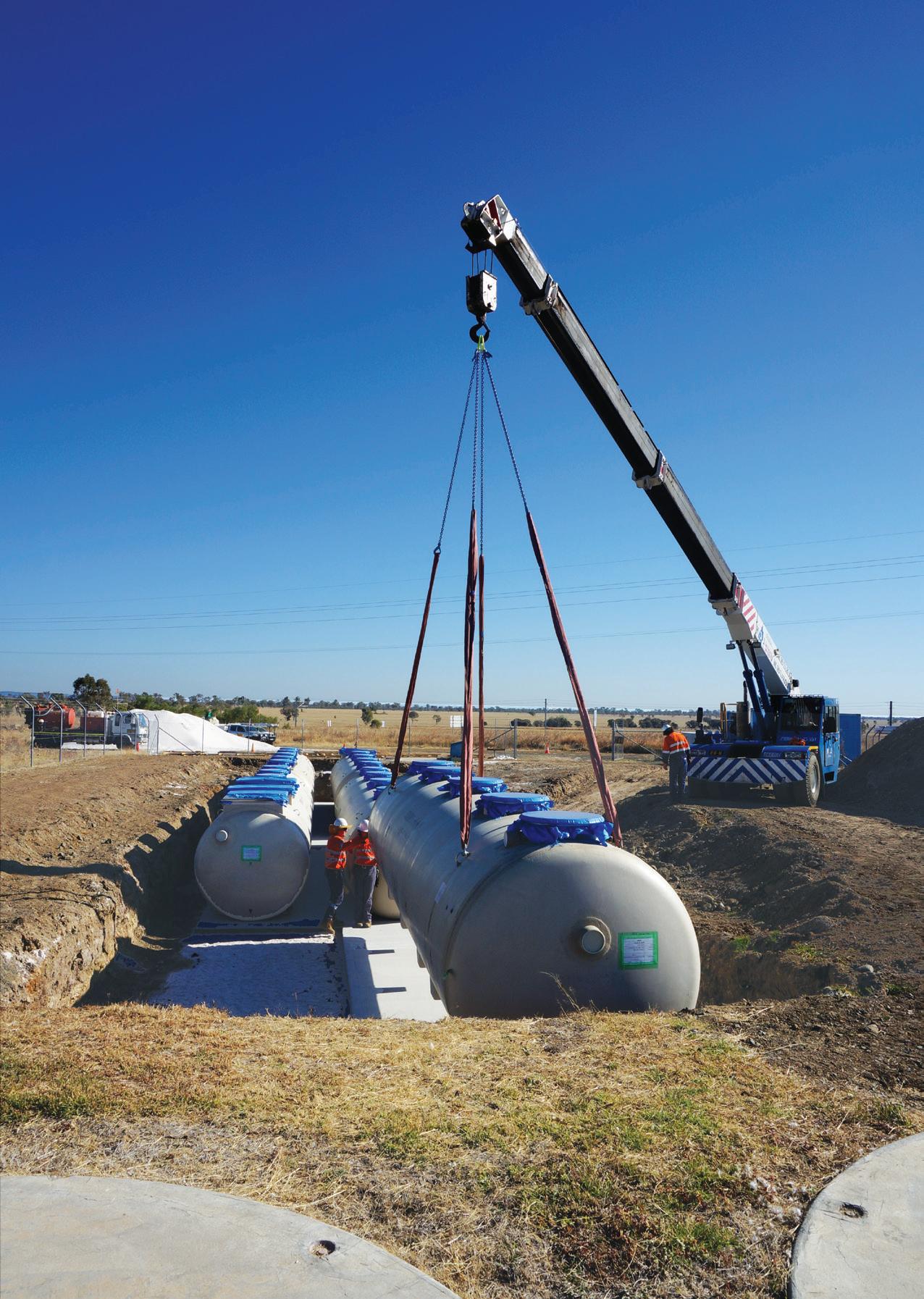


1800 057 771 | truewateraustralia.com
SEWAGE & WASTEWATER SPECIALISTS
• DESIGN • MANUFACTURE • INSTALLATION • MANAGEMENT
us about our CONNECTmi® and TELEmi® products for dynamic real time Asset and Management.Monitoring
CONSULTANCY
Ask


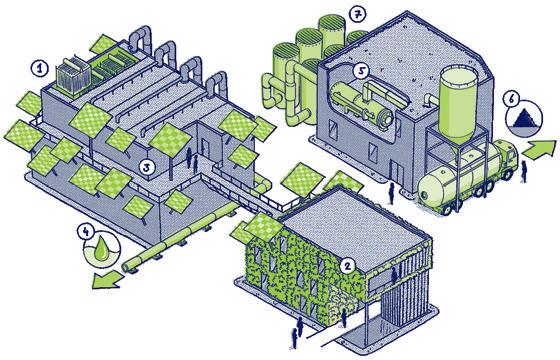
we can help water utilities reduce energy costs and improve operational performance

are you ready?
Energy costs can be a major drain on the operation budgets of water utilities, but smart digital network management tools can make a real impact on the bottom line. SUEZ’s AQUADVANCED® Energy is a unique system, which ensures high quality water is delivered where it’s needed at a minimum cost. By scheduling and automating the operation of pumps and valves in real-time, water utilities can bring down their energy costs while maximising their operational performance, water quality, and overall environmental outcomes. suez.com.au
IMAG04220
REVERSE OSMOSIS MEMBRANE PROTECTION WITH AUTOMATED MONITORING

In the competitive field of reverse osmosis (RO), purity is expected and water treatment or desalination plants are required to operate around the clock to produce clean drinking water or industrial process water.
In the water processing RO units, the main RO element is the membrane. In presence of chlorine, the membrane may be damaged beyond the point that chemical cleaning can restore the system back to its original operating efficiency.
The use of raw water without chlorine is highly desirable to extend the RO membrane’s life. Proper process monitoring of the chlorine presence can provide advanced warning and protection with the help of online sensors showing no-drift in the said chlorine absence.
Depending what the membrane material is, several parameters can affect its properties and as such the RO performance. Lately, aromatic polyamide has emerged as the most prominent material for thin film composite (TFC) reverse osmosis and nanofiltration membranes.
However, these membranes are susceptible to chemical attacks from free chlorine and other strong oxidising agents, creating points of leakage for dissolved salts to pass through which results in significantly lower water quality. A membrane loses its performance after about 1,000ppm•h upon “chlorine” exposure and is considered degraded when salt rejection drops below 90 per cent.
This necessitates the removal of this “chlorine” from the feedwater before desalination. Removing the chlorine residuals can be done by injection of chemicals, by carbon bed adsorption, or by 254nm ultraviolet irradiation. Each of these methods comes with its weaknesses. Unregulated chemical injections imply unnecessary consumption of chemicals, and charge on the RO membrane.
Chlorine is widely used as a disinfectant for drinking water all over the world. Confirming the “dechlorination” efficiency in the use of raw water with zero chlorine content has the desired effect of extending the RO membrane's life and bringing down costs in desalination plants.
PROTECT AND MONITOR
Monitoring the absence of chlorine content in water after pre-filtration is one way to extend the life of the RO membrane. Several methods exist to measure chlorine residuals; the most well-known and used are: DPD colorimetric detection, oxidation reduction potential (ORP) and amperometric methods.
Protection of the RO membrane against chlorine attacks enhances process efficiency and increases the durability of process technology. Feed-forward/feedback control techniques, integrating multiple chlorine monitoring, optimise the raw water’s dechlorination.
With its technology advantages in chlorine absence, such as the long measurement stability and its low detection limit, an amperometric sensor with immobilised membrane – Type MS02 Chlorine (Cl2)/chlorine dioxide (ClO2) Sensor Cube – is an innovative option from Bürkert to control and protect the RO unit in real time.
But how do you find the fault if your water quality drops by way of membrane damage?
Parameters such as water conductivity shed light on this; if pollutants pass through the diaphragm, the conductivity increases. At Bürkert, we have developed an automated system that allows you to monitor your permeate at any time and to detect membrane defects in the individual pressure pipe at an early stage.
It automatically monitors the permeate of the individual pressure pipes in reverse osmosis or nanofiltration plants, enabling you to locate errors early on and rectify them quickly and preemptively.
Be it water treatment or seawater desalination, once installed, the solution provides you with a quick and easy overview of large plants. As a result, downtime is reduced, while performance is increased and the permeate quality is in the desired range.
Each system is customised to meet the requirements of our customers with software adapted to their needs. From zero-chlorine monitoring solutions through to automated permeate monitoring solutions, our decades of experience supporting industrial water and water treatment industries should provide peace of mind. At Bürkert, we make ideas flow.
PIPELINE INTEGRITY & LEAK DETECTION | Utility Partner Solutions 68 UTILITY • NOVEMBER 2020 WWW.UTILITYMAGAZINE.COM.AU


TOWNSVILLE CITY COUNCIL IS INVESTIGATING WATER PRESSURE USING THE TAGGLE NETWORK
As one of the early adopters of Taggle Systems’ innovative remote sensing technology, Townsville City Council (TCC) leads the way in collecting data from a wide variety of applications via Taggle’s Low Power Wide Area Network (LPWAN) to identify and solve problems.
One of these applications is remotely monitoring water pressure to better understand pressure fluctuations, identify the cause of low-pressure complaints, quickly identify leaks and breaks in the network, and assess water pressure and flow rates to better inform infrastructure upgrade decisions.
Regular pressure complaints from the coastal suburb of Pallarenda led to the installation of three pressure sensors on residential connections at the meter.
TCC already knew the suburb had mains pressure issues and suspected it was a combination of the existing water mains infrastructure and its operation. Pallarenda is fed by 2x150mm reticulation mains that are supplied by a 450mm bulk main. The bulk main also feeds Magnetic Island and its flow is governed by a large butterfly valve which actuates when reservoir levels on Magnetic Island go below a set point. TCC did not know the extent and scale of pressure drops and if the watering window in the afternoon also contributed to the problem.
The normal approach would be to engage a consultant to provide a recommendations report, which in this case recommended an upgrade to the infrastructure by separating Pallarenda from the bulk main feeding Magnetic Island. This project was costed at approximately $4 million. The team decided leveraging its existing IoT network to gather data to better understand the problem might lead to a lower cost solution.
pressure to SCADA data of the valve operations. Of interest was the fact that the pressure increases correlated closely with the valve operation. Water hammer seemed to be an issue, and somewhat unexpectedly, recorded pressures exceeded the sensor detection limit of ten bar (1000kPa) on occasions. The data also showed that the pressure drop during the watering times was not as pronounced as first expected.
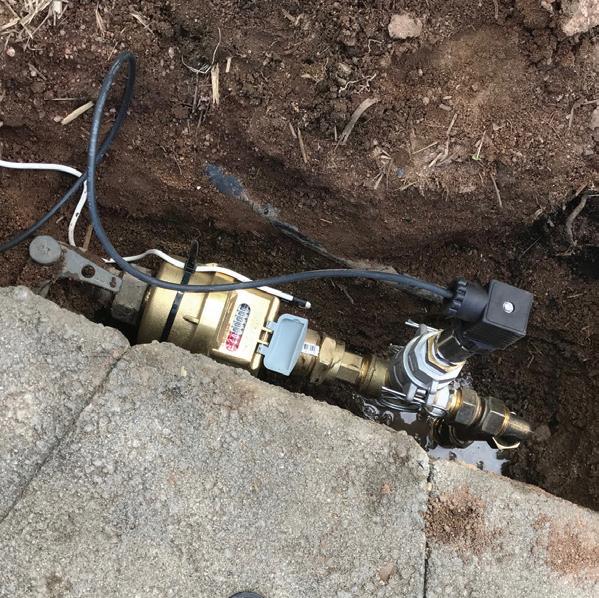
With this new information and the ability to monitor the pressure in near real time, TCC shelved the new reticulation main duplication project expected to cost $4 million. The focus now is on updating the telemetry of the valve itself to remotely manage its opening and closing, thus allowing more control to avoid watering and peak consumption windows. TCC is also looking at installing an updated actuator on the valve, allowing it to slow the opening and closing of the valve, and even have partial opening to lessen the impact of water hammer and reduce pressure changes.
The data provided to inform these decisions came from just three low-cost pressure sensors, attached to Taggle telemetry devices, sending readings via the Taggle LPWAN. Data is processed and delivered within Taggle’s Aqualus software, making it a low-cost, easy turnkey solution. The batterypowered sensors will last for four years in the field without any human intervention, after which the batteries can be replaced for continued use.
Until now, only short-term spot pressure checks had been completed and these mostly showed that the pressure was acceptable. Using just three remote pressure sensors on the Taggle network, sending data every 15 minutes, painted a much clearer picture of what was happening.
TCC was able to detect and correlate sudden drops in
TCC now has 83 pressure sensors installed – with 30 more to be installed over the next two months – and has solved many pressure challenges with the technology. Simon Igloi from TCC recently presented a webinar where he discusses a few of these pressure projects, which is available to view on the Taggle website. Visit www.taggle.com.au for more information.
70
UTILITY • NOVEMBER 2020 WWW.UTILITYMAGAZINE.COM.AU PIPELINE INTEGRITY & LEAK DETECTION | Utility Partner Solutions

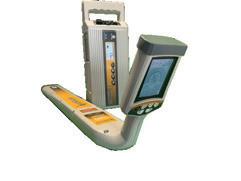
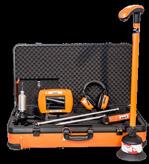

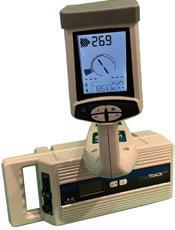



Digital water metering: THE FUTURE OF WATER MANAGEMENT
While the uptake of smart meters has become common in the energy industry, smart meters are still in their infancy in the water sector. Not only do smart meters help reduce costs for customers, they also allow the water sector to monitor its assets remotely, ensuring better asset management. Here, we take a look at how smart water meter technology works, the challenges and areas of opportunity for the water sector, as well as the considerations for water utilities thinking of investing in smart water meter technology.
WHAT ARE DIGITAL WATER METERS AND HOW DO THEY WORK?
A digital water meter is essentially a conventional meter linked to an electronic data logging device that collects data from the meters at regular intervals and feeds it back to the water utility, where both the customer and the water company can access the information¹.
The devices collect data by monitoring and recording consumption outputs from the meter, generally at hourly intervals, with this data then being sent digitally to the utility. From here, customers can access the information about their water usage and the utility can review this data to manage its assets, and inform its future policy and practices.
Digital water meters have multiple benefits for both water utilities and customers. Installing digital water meters has the following advantages:
• Identify leaks or flow issues
• Respond to and fix flow issues faster
• Quicker, safer and more efficient meter reading
• Read meters without accessing customers’ properties
• Provide more accurate billing to customers
• Remotely monitor meters in real time
• Monitor and extend the life of infrastructure assets
• Improve customer engagement
• Longer lifespan than mechanical water meters
The benefits for customers include:
• Lower water bills
• Ability to monitor water usage digitally
• Identify leaks and flow issues faster and more accurately
• Identify areas where water can be saved
• Remote monitoring, meaning utilities don’t have to access a customer’s property
72
UTILITY • NOVEMBER 2020 WWW.UTILITYMAGAZINE.COM.AU PIPELINE INTEGRITY & LEAK DETECTION

OPPORTUNITIES FOR THE WATER SECTOR
While smart electricity meters have enjoyed huge success in the utility space thanks to mandatory rollouts in Victoria and numerous trials across the country, digital and smart water meters are not as widespread yet. This is unfortunate for both the water sector and for customers, as water is a precious resource and effective management of water resources is crucial to safeguarding supply.
The rollout of digital water meters provides water utilities and the water sector at large with a range of beneficial opportunities that can enhance customer relationships and improve business performance.
Improved customer engagement
Investing in smart water meters allows greater customer engagement for water utilities. The digital meters provide customers with real-time meter readings, allowing the customer to stay on top of their water usage and help minimise their bills. This also allows utilities to identify leaks and flow issues as they arise, illuminating bill shock for customers as these issues can be fixed quickly instead of when an unusually large bill is received. It also allows the water utility to bill customers monthly instead of quarterly, which reports show customers prefer².
Asset management
Digital water meters are one of the best ways for water utilities to monitor and maintain their assets and water
infrastructure, and also extend the life of their assets. A larger and more accurate base of data received from digital water meters is a great way for water utilities to keep track of their network and operations. The regular data that utilities receive from the digital water meters allow companies to keep track of the assets and infrastructure in their network and identify issues faster, saving time, money and resources³.
Cost effectiveness
Although there may be an upfront cost to digital water meters, there are ongoing cost savings for both customers and water utilities thanks to the technology. For customers, digital water meters allow for more accurate billing, more often, and also allows consumers to track their water usage to lower their bills.
For water utilities, the ability to conduct remote monitoring saves both time and money on manual monitoring. Furthermore, having a clearer understanding of how assets and infrastructure is performing in the network helps utilities to make more informed strategic decisions and avoid costly leaks.
Water conservation
One of the main uses of digital water meters is for urban water management and billing. A study conducted by Sydney Water in 2014 found that households that had digital water meters installed on the property reduced their water
UTILITY • NOVEMBER 2020 WWW.UTILITYMAGAZINE.COM.AU 73

consumption by over 6.8 per cent compared to the control group. Furthermore, over a three-year period post-study participants reduced their water usage by 6.4 per cent compared to the pre-trial period, indicating that reduced water usage was maintained over time, proving the longterm value of digital meters4
CHALLENGES AND CONSIDERATIONS OF DIGITAL METERS FOR THE WATER SECTOR
There are many positive benefits for water utilities in incorporating smart water meters, however there are also challenges that may make utilities hesitant to take on this new technology.
One of the biggest factors delaying mass rollouts has been that cost-benefit studies have failed to identify sufficient benefits to cover costs. Completed economic studies often fail to stack up since they include only a limited number of benefit categories, and water utilities have not yet been able to articulate the full range of benefits for them and/or struggle to monetise those benefits.
A comprehensive study was commenced in 2018 by Griffith University researchers to look into benefits not normally considered by water utilities.
This study sought to reveal all potential benefits through a literature review of deployments across the world, reviews of annual reports and other water utility publications, and structured interviews with 52 industry specialists and some customer representatives. Importantly, the experts surveyed covered a broad spectrum of departments within water businesses to ensure that all benefits could be captured.
The study resulted in a list of 75 benefits. These were classified into those benefiting the water business or the customer, or both.
Among the 57 business benefits, some were previously captured benefits such as water conservation, operational cost and capital cost savings. However, many others were not previously considered benefits, such as: new opportunities for cost savings through the development of new algorithms; gaining efficiencies through improved knowledge of customer segments; increased knowledge of non-residential customers’ water usage patterns; and savings from the better management of disputed bills, Ombudsman referrals and customer credit.
The rapid development of technology means that some large utilities are charging ahead with smart meters, while smaller utilities are still working out their options.
There is a high initial upfront cost to install smart water
meter technology – estimated at around $1,000 per data logger – which does not include the associated plumbing costs, as well as the system and technology infrastructure upgrades required to support smart metering. However, as more technological developments occur, the cost of digital water meter technology is expected to decrease.
There is also the challenge of how to power these digital meters. Unlike with smart electricity meters, traditional manual water meters work without a power source, therefore water utilities need to consider how they will power smart water meters on location. Smart water meters are typically run by batteries, which creates a challenge for utilities who are considering deploying them.
Another key difference is that when it comes to electricity use, smart meters can be used as a means to incentivise particular customer behaviours. For example, time-of-use tariffs mean that customers pay a different price for the power they use at different times of the day, allowing utilities to increase or decrease costs across a 24-hour period to best manage demand loads across the network.
For water, there are no time-of-use tariffs required to spread the load across the system, and in the current market, customers aren’t incentivised to use more or less water in any greater way than the fact that by using less water they will have a reduced water bill.
However, in the years to come, it’s worth noting that should we see a return to drought conditions, where water restrictions are reintroduced, smart water meters will provide an effective means for actually enforcing restrictions such as those relating to time and quantity of use.
THE FUTURE OF DIGITAL WATER METERS
The future of digital water meters is still somewhat uncertain, however data does indicate that the adoption of smart water meter technology is on the rise in Australia and New Zealand. Although there are challenges facing the rapid uptake of digital meters by utilities across Australia, future technological advances could see the use of these meters rise, as demand for clearer, more accurate data increases5
However, the benefits and opportunities that digital water meters present to utilities and consumers can’t be ignored. There is substantial evidence to indicate that digital water meters result in lower water consumption by customers, and improved customer engagement and communication, and asset management by utilities, and most importantly better water conservation.
¹ What are Smart Meters? Fact Sheet, https://eprints.usq.edu.au/21068/1/Aravinthan_Ho_Gray_Butler_Connell_FactSheet_PV.pdf
² Pricing and the Psychology of Consumption
https://hbr.org/2002/09/pricing-and-the-psychology-of-consumption
³ Digital Water Metering: The time is now https://assets.kpmg/content/dam/kpmg/au/pdf/2018/digital-water-metering-readiness.pdf
4 Water-saving impacts of Smart Meter technology: An empirical 5 year, whole-of-community study in Sydney, Australia https://www.researchgate.net/publication/265171957_Water-saving_impacts_of_Smart_Meter_technology_An_empirical_5_year_whole-ofcommunity_study_in_Sydney_Australia
5 Smart Water Metering Technology for Water Management in Urban Areas
http://ozwater.org/Watersource/wp-content/uploads/2019/02/001-Koech-Richard_v1.pdf
74 UTILITY • NOVEMBER 2020 WWW.UTILITYMAGAZINE.COM.AU PIPELINE INTEGRITY & LEAK DETECTION
Defend industrial networks at all levels.

Secure industrial networks with OT-IT integrated security.
Identify and mitigate system vulnerabilities in industrial networks before weaknesses are exploited by a cyberattack.
9 Build reliable and secure networks to maintain business operations
9 Integrate OT/IT perspective on network protection
9 Detect and mitigate cyberthreats for system integrity
9 Protect critical assets with tailor-made OT cybersecurity technologies
Connect with confidence.
Madison Technologies has been distributing Moxa’s reliable networking infrastructure Australia wide for more than 14 years. Our team is dedicated to ensuring our Moxa portfolio is fully supported with an extensive range held locally across our national supply chain, and a team of Moxa certificated sales and technical support engineers.
Sales Enquiries 1800 72 79 79 www.madison.tech
BRAND NEW PIG TEST HEADERS
AVAILABLE TO RENT
Innovative, solution based, forward thinking and customer focused have always been words associated with Piping Specialty Supply Services (PSSS). John Wilton and his team are committed to implementing these values in their day-to-day interactions with clients, and are excited to have added Pig Test Headers to their rental fleet.
Through consultation with customers and fabricators, a gap in the market was identified, and PSSS is proud to now offer a cost-effective rental option of its new pig test headers.
These test header kits are designed to cover three pipe sizes: 4”, 6" and 8”, across all four classes: 150, 300, 600 and 900.
Already there are plans for a second kit to cover 10”, 12” and 14” pipe sizes in all classes. All kits are designed
and fabricated to AS2885.1 and AS4041MDR standards – a design report and Master Deliverable Register (MDR) are both available.
PSSS Managing Director, John Wilton, said, “Our pig test headers (launchers/ receivers) are made for ease of operation and longevity of service. As a rental unit the beauty of covering three pipe sizes and four classes has improved utilisation, therefore enabling us to keep rental rates down.”
The key features of these launchers/receivers are:
• Cost-effective rental option
• Practical, simple to install
• Kits include flange adaptors for classes 150-900 and 4”, 6” and 8” pipe sizes (a second unit will support 10”, 12” and 14” sizes)
• Simple leg support for use in the field
• Designed to AS2885.1 and AS4041MDR standards
• MDR report available
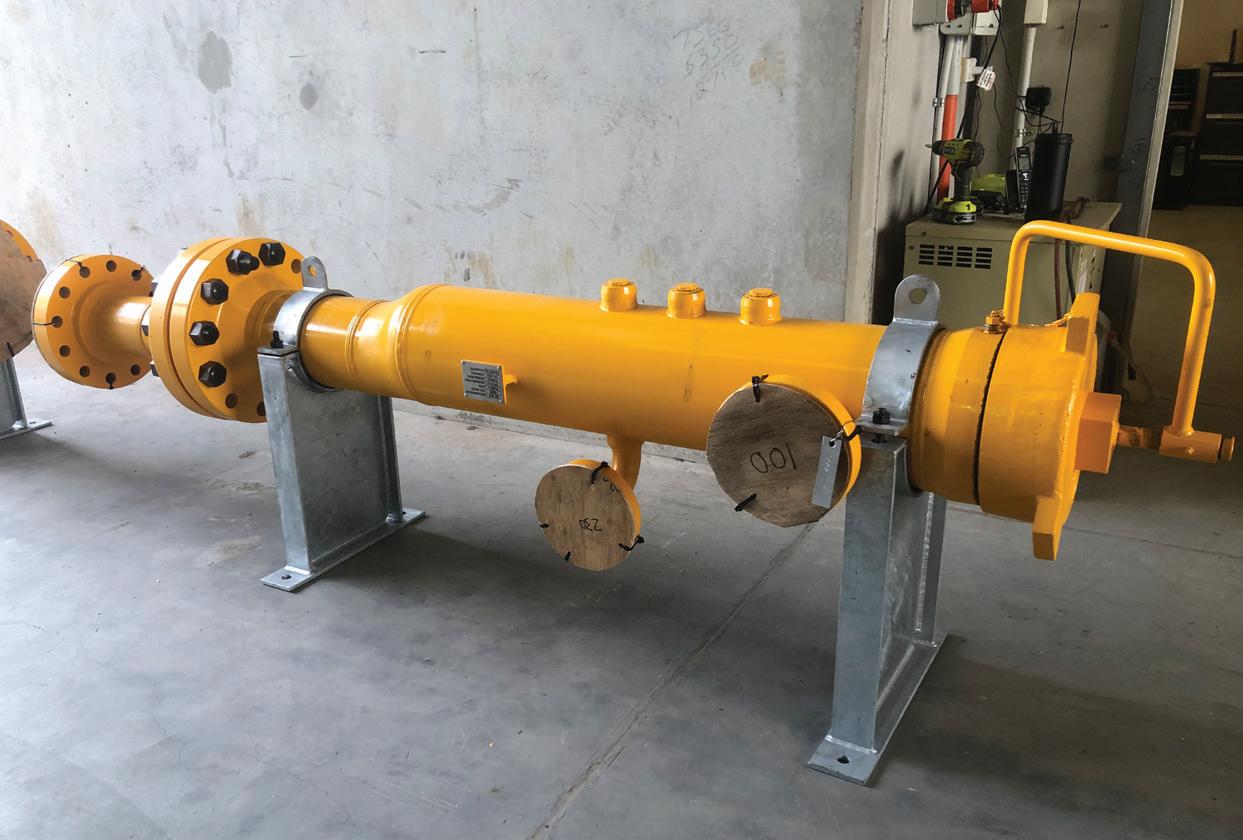
PIPELINE INTEGRITY & LEAK DETECTION | Utility Partner Solutions
UTILITY • NOVEMBER 2020 WWW.UTILITYMAGAZINE.COM.AU 76
Another example of innovation from the PSSS team! Please contact PSSS for more details on 1300 794 096 or sales@psssa.com.au

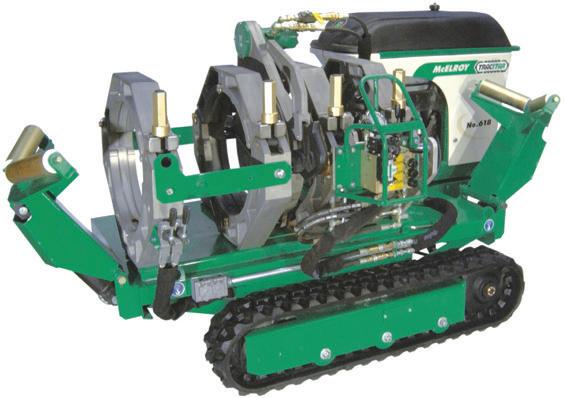








1300 794 096 sales@psssa.com.au www.psssa.com.au Your go-to supplier for all things piping
Pipe Handling
Butt Fusion Poly Welders
Pipe tools, equipment and welding for the water, gas and construction industries. Give the PSSS team a call – you won’t be disappointed.
Pipe Protection
HDPE Tooling
FOR BOTH SALE AND RENTAL
Hot Tapping and Line Stopping
HDD ASSISTS HEATHCOTE SEWER UPGRADE
In January 2020, Coliban Water completed its $5 million Heathcote Sewer Scheme Project, enabling property owners to connect to the expanded sewer network. This project will help eliminate the use of on-site septic tanks, improving public health and protecting the environment.
Manager Infrastructure, Corey Bourne, said the project ensures more of the Heathcote community has access to a safer and environmentally-friendly way to manage their domestic wastewater.
“By expanding our sewer network, we ensure wastewater is safely contained and transported to our Heathcote Water Reclamation Plant, where it is treated and reused for irrigation,” Mr Bourne said.
“As well as creating a healthier and safer environment, the project also allows for future development and population growth for Heathcote.
“Healthy people and environment, and prosperous economies are two of the four strategic directions in Strategy 2030, our ten-year plan to achieve our vision of Water to Live, Grow and Enjoy.
“Around 150 properties are expected to connect, with further connections planned as vacant lots are developed.”
The Heathcote Sewer Scheme Project is part of a Backlog Sewer Program to provide reticulated sewerage services in urban areas where septic tanks were still in use.
“Local councils identified residential areas where properties had been built before sewerage services were available. The program included extensions of our network around Markovitch Lane, Junortoun, completed in 2014, and Reckleben Street, Castlemaine, completed in 2016,” Mr Bourne said.
“There has been a lot of development around Reckleben Street in the four years since we completed the expansion, which wouldn’t have been possible before the works.”
Works began on the Heathcote Sewer Scheme Project in September 2018, with the construction of 10km of sewer main and a sewer pump station.
“A lot of planning, investigations, design, assessments, approvals and community consultation goes into a project like this,” Mr Bourne said.
Around 30 per cent of the mains were installed using boring or horizontal directional drilling (HDD), a trenchless method that reduces the need for excavation and prevents damage to trees and root systems.
Boring/HDD is generally accomplished in three principal phases:
• First, a small diameter pilot hole is drilled along a directional path from one surface point to another
• Next, the bore created during pilot hole drilling is enlarged to a diameter that will facilitate installation of the desired pipeline
• Lastly, the pipeline is pulled into the enlarged hole, thus creating a continuous segment of pipe underground exposed only at the two initial endpoints
Boring/HDD offers significant environmental advantages over traditional cut and cover pipeline installations. The technique is routinely used when conventional trenching or excavating is not practical, or when minimal surface disturbance is required.

“Cultural Heritage Management Plans were conducted to assess the potential impact on Aboriginal cultural heritage and work out how to protect artefacts,” Mr Bourne said. “We worked with the Taungurung Land & Waters Council, the traditional owners in the area, to carry out field investigations and dig test pits along the proposed pipeline alignments.
“Ecological assessments were also conducted to identify and protect flora, particularly native vegetation, and fauna.” The contractor for the Heathcote Sewer Scheme Project was Steve Standen Drainage.


78 UTILITY • NOVEMBER 2020 WWW.UTILITYMAGAZINE.COM.AU
HORIZONTAL DIRECTIONAL DRILLING (HDD)



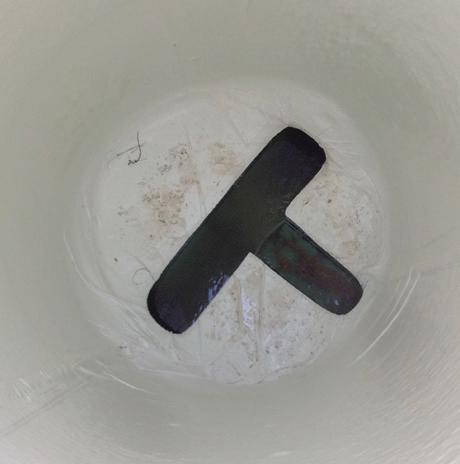
HOW DO YOU STRUCTURALLY RELINE A MANHOLE IN THE CORNER OF A BACKYARD? With Alternative Lining Technologies Cured in Place Manhole...CIPMTM BEFORE AFTER Stop infiltration Stop H�S corrosion Structurally rehabilitate Manholes Pump wells Pits Suitable for: DELIVERING TOGETHER ABERGELDIE COMPLEX INFRASTRUCTURE CONTACT Cameron Neales, Delivery Manager, 0417 824 581, cneales@abergeldie.com ALTERNATIVE LINING TECHNOLOGIES CONTACT Bruce Keys, General Manager, 0418 542 120, bkeys@altliner.com www.altliner.com.au
DELIVERING FOR THE FUTURE: SUSTAINABLE URBAN INFRASTRUCTURE MANAGEMENT
According to a prediction by UN-Habitat – the United Nations program for human settlements and sustainable urban development – approximately two thirds of the world’s population will be living in urban areas by 2050, bringing a distinct set of challenges and opportunities to the area of urban development.
Rapid population growth and urbanisation mean greater demand for essential services such as energy, water, waste and telecommunications, with much of this infrastructure installed underground. Expanding and maintaining this complex network of utilities requires careful planning, along with innovative systems that minimise community disruption and protect the environment.
A number of utilities are using sensors and digital technologies to better monitor the health and performance of their networks, but there will still be a need to repair and replace a significant number of pipes and cables. That presents a sizable problem, since digging up roads and surfaces invariably upsets customers and results in substantial costs, particularly if works drag on.
In many cases, trenchless or no-dig technologies could offer a solution. Without the need to employ large open cut trenches, jobs can generally be completed far more quickly, far more cheaply, and with far less disruption and environmental waste.
Open cut trenching is a traditional method of underground utility installation and replacement that involves excavating down to and exposing the existing pipe. While open cut trenching has its advantages in particular circumstances, this construction method can cause huge disruption in congested urban settings, creating road closures, traffic delays, unnecessary detours, loss of access to homes and businesses, unsightliness, and noise pollution.
No-dig techniques vary widely, covering repair and replacement, and many are extremely well established. They include ‘keyholing’ – the process of making small, preciselycontrolled excavations for location, inspection, repair, maintenance and installation of utilities – as well as more specific concepts such as slip lining, cured-in-place-pipe and horizontal directional drilling (HDD) that have been around for several decades and are continuing to increase in popularity.
When considering how trenchless technologies might play a role in any utility infrastructure installation or replacement program, engaging with experts at the earliest possible stage is key. Asset owners and contractors are not always aware that many of the solutions to the challenges they face are already in existence, with many coming to rely on the expertise of trenchless ambassador TRACTO-TECHNIK.
A specialist in trenchless technology solutions for pipe installation and renewal, TRACTO-TECHNIK Australia has been a trusted partner for utilities in Australia, New Zealand and Asia since 1988.
The company’s unique and versatile product portfolio covers the complete range of trenchless pipeline construction for
supply and disposal, including soil displacement hammers and mini drilling systems for installing service connections, ramming machines for pipeline construction, HDD systems for crossing traffic routes and waterways, and pipe bursting systems for pipe renewal.
From its humble beginnings in Germany in 1962, the equipment manufacturer has developed a global network of trenchless experts, today having around 500 employees worldwide and sales representatives in over 70 countries.
Not just a manufacturer and supplier of high-quality machinery, TRACTO-TECHNIK is also equipped to work closely with network operators, urban planners and engineers, offering comprehensive project consulting and excellent customer service as a priority.
SMART CITIES NEED SMART SOLUTIONS
By 2050, the United Nations predicts there will be 9.6 billion people on the planet, putting huge pressure on metropolitan areas to manage resources efficiently and supply their citizens with what they need to thrive and survive – which is why our cities must get smarter.
Cities are major contributors to greenhouse gas emissions. Energy consumption is the biggest source of human-caused greenhouse gas emissions, and the transformation of the global energy sector from fossil-based to zero-carbon is one of the strategies underway to reduce emissions and mitigate the effects of climate change.
Electric transportation offers ideal opportunities for the broader introduction of renewables to the transport sector. In addition to the environmental benefits of this shift, such as reducing CO2 emissions and air pollution, electric mobility also creates significant efficiency gains and could emerge as an important source of storage for variable sources of renewable electricity.
However, the acceptance of electric vehicles (EV) by the general public depends on alleviating concerns around vehicle range and the low availability of recharging stations. Even here, trenchless technology offers intelligent and economical solutions for the efficient and low-emission installation of EV charging infrastructure.
TRACTO-TECHNIK’s trenchless systems can be used wherever charging stations have to be installed or connected to the power grid. Pipes and cables can be installed in any direction without damaging valuable or paved surfaces, making the technology suitable for the serial installation of charging stations on public and private ground, as well as for connection to the distribution network.
DIRECTIONAL DRILLING (HDD) | Utility Partner Solutions 80 UTILITY • NOVEMBER 2020 WWW.UTILITYMAGAZINE.COM.AU
HORIZONTAL

The proven technology has numerous possibilities:
• Fast and gentle underground installation of the protection pipes for power and control cables from the connection point (sub-distribution) to the charging station and between the charging stations
• The technology is equally economical for the installation of individual or multiple charging stations
• House connections for the power supply of the charging stations can also be installed without trenches
• With the minimally-invasive keyhole technique, the construction pit can be used as the foundation of the charging station
The backbone of a successful smart city is reliable, secure wireless connectivity, enabling an intelligent network of connected objects and machines that transmit data using wireless technology and the cloud.
The advent of 5G technology is expected to propel smart city technology into the mainstream, but it will require new and additional network infrastructure in order to ensure widespread coverage and provide the higher bandwidth and speeds.
TRACTO-TECHNIK’s trenchless products can be used for fibre optic network construction and cable connection to 5G transmission masts and consumer homes or commercial buildings – fast installation is possible along roads, under water and traffic routes, or even through existing sewers.
Using the GRUNDOMAT soil displacement hammer, the complete range of essential services – from sewerage to fibre optic connections – can be installed and renewed without trenches. Gas, water, wastewater, district heating, electricity and telecoms/data can be easily connected into single buildings, housing blocks or commercial and industrial plants.
The cost pressures in civil engineering led to the development of another TRACTO-TECHNIK innovation: the award-winning GRUNDOPIT K, which can be used for installing, repairing and renewing property service connections via a keyhole access pit with a maximum diameter of only 650mm. On completion of the work, the drilled-out circular bore is inserted back into place without any subsequent stress cracks or damage to the road surface.
The fast-paced development of the steerable drilling technique allows trenchless installation projects which would
have been unthinkable only a few years ago, showcased by the versatility and profitability of the GRUNDODRILL HDD rigs. Parallel installations up to 500m long are possible, with crossings beneath rivers and other bodies of water being completed frequently.
One of the highlights in the TRACTO-TECHNIK HDD machine family is the GRUNDODRILL 18ACS, which works highly efficiently in alternating soils as well as in the hardest rock, offering distinctively reduced operating costs and construction times compared to similar drilling rigs. The new GRUNDOPIT PS40 is designed for the challenge of developing the urban underground network, its slim construction ideal for applications in inner city areas.
The amount of supply and disposal pipelines in need of repair and/or replacement is constantly increasing worldwide, especially in aging urban water and sewer networks which suffer from leakage problems and/or inadequate pipe capacity.
Pipe bursting with GRUNDOBURST enables the trenchless replacement of pipes demonstrating common issues such as cracks, encrustation, root infestation, misalignment, positional displacement and split sleeves. Reinstatement costs due to ground settlement, groundwater interferences and road damage are almost omitted. Moreover, the network capacity can be adapted as new pipes of smaller, equal or even larger diameter of up to 1-2 nominal sizes can be installed.
With trenchless technologies providing sustainable and economical solutions for maintaining and developing vital and complex urban underground infrastructure, it’s clear that the smart city is trenchless. For more information, visit www.tracto-technik.com.au
The benefits of going trenchless:
• Significantly reduced construction times
• Minimisation of costly excavation and reinstatement
• No destruction of valuable surfaces
• Avoidance of traffic jams and diversions
• Low CO2, noise and fine dust emissions
• Up to 40 per cent cost savings
UTILITY • NOVEMBER 2020 WWW.UTILITYMAGAZINE.COM.AU 81
Why is it important to foster working relationships as a trenchless subcontractor?
Fostering a good working relationship with clients and suppliers is important for any business, with a number of benefits for everyone involved. But for us in the trenchless industry, fostering good working relationships can also help reduce the risk of time delays, cost overruns and quality defects. As a trenchless subcontractor, one of the key benefits we have found with having and maintaining good onsite work relationships is that together with the contractor, we can achieve better project outcomes.
In one example, Edge Underground was able to set a new benchmark for the industry when we completed the first stage of works for a sewer installation in only six days – we had been given six weeks. We were able to provide such a large time saving due to project efficiencies that came about from the working relationship we had built with the contractor over time.
Like other microtunnelling subcontractors, when we get to a site we rely on the contractor to be organised and have all the invert grades and lines, and shafts prepared in advance for us so we can go in and install the pipe. As a company, we know our equipment and what we can achieve with it under the site conditions, so we let the contractor know what we need from them and when, otherwise we will start installing a pipe but get to the point where we have to stop working because we’re putting pipe in the ground faster than the contractor can prepare shafts.
The problem is that on projects where we’re working with a new contractor, it often surprises them how quickly we can get pipe into the ground. And that is often because
their experience is that it takes a bit of time to prepare a shaft, which they have as the borers can take their time as well. That’s all part of the process of learning, and building contacts and good working relationships on-site though.
It was the same with the contractor on the project in Townsville, but since that relationship had been built, they knew what we needed and we knew how they liked to run, so they were able to complete all site works in advance and together we were able to achieve great project efficiencies.
COMMUNICATION TO BUILD TRUST IN THE INDUSTRY
Another key aspect of fostering working relationships is having honest conversations with contractors and project engineers to discuss the specifics of the project, any potential problems and how they can be mitigated. You should be ready to suggest an alternative if what you offer is not going to get them the best results after more details about the project or site are found.
Each trenchless method has its strengths, and if you’re clear up front that better outcomes could be achieved with a different method, you not only build trust in your services and expertise, but help the industry as a whole by ensuring that clients will be confident in choosing a trenchless option, as they know they’re getting the best solution for their project. Because of that trust, clients will be assured that they can approach you for an expert opinion and to tender for future projects, and they will be more likely to consider trenchless options as they know they’ll get the desired outcome.
ABOUT STUART HARRISON
Global microtunnelling pioneer Stuart Harrison is the Managing Director of Edge Underground, where he specialises in on-grade microtunnelling installations with millimetre accuracy.
Stuart is also the inventor of the AXIS Guided Boring system, and he is constantly working to improve the effectiveness of this and other trenchless systems used in the installation of gravity sewers.
To discuss your next microtunnelling installation, contact Stuart on 1300 JACKED or at stuart@edgeunderground.co
MICROTUNNELLING
82 UTILITY • NOVEMBER 2020 WWW.UTILITYMAGAZINE.COM.AU
Brisbane Convention & Exhibition Centre
Exhibition and sponsorship opportunities available and selling fast
Go to www.en2021.com.au to find out how you can get involved
early bird closes 172021August Register now
www.EN2021.com.au
RESEARCH PARTNER PRINCIPAL SPONSOR
FEBRUARY 2021
EVENT DISTRIBUTION (TBC)
WIOA NSW SAFETY IN ACTION LOCATE21
MAJOR FEATURES
BIG DATA
CYBER SECURITY
SOLAR
SYDNEY WATER
DIGITAL UTILITIES 2021 ENLIT AUSTRALIA
SPECIAL FOCUS
MAPPING, GIS & SURVEYING
UTILITY LOCATION
SEWER REHABILITATION
EMBEDDED NETWORKS
DISTRIBUTED GENERATION
CUSTOMER EXPERIENCE
MAY 2021
AUGUST 2021
NOVEMBER 2021
ALL ENERGY 2021
MAJOR FEATURES
RETAIL, BILLING & CRM
WIOA VIC
SPECIAL FOCUS
TRANSFORMERS & SUBSTATIONS
PIPELINE INTEGRITY & LEAK DETECTION
DAMS
LAND ACCESS
SAFETY
DEADLINE 11 DECEMBER 2020
ENERGY WEEK
EQUIPMENT & MACHINERY DRONES SWITCHGEAR
UTILITY • NOVEMBER 2020 WWW.UTILITYMAGAZINE.COM.AU SECTION 84
Advertisers’ index Access Detection 71 activ8me 15 Alternative Lining Technologies 79 AMS Instrumentation & Calibration 9 Bintech Systems 54 Burkert Fluid Control Systems 69 Caldertech Australia IFC Edge Underground 59 Energy Networks 2021 83 EnviroSonic Algae Control 55 Harcor 10 Intelepower 11 kwik-ZIP 19 Lanco Group 18 Madison Group Enterprises 49, 75 McRobert Contracting Services 17 Metasphere Australia 23 Milwaukee Tools 30–31 PEAK AI 51 Pezzimenti Trenchless 16 Piping Specialty Supply Service 77 Polymaster OBC Programmed Facility Management 25 Projex Group 12 Rycom Instruments 13 SUEZ 66–67 Taggle Systems 70 TRACTO-TECHNIK Australia 80–81 True Water Australia 65 VEGA Australia 7 Veolia Water Technologies (Australia) 14 Vermeer 5 Virtual Water Conference and Exhibition IBC Xplore Technologies/Zebra 50
EDITORIAL SCHEDULE
MAJOR FEATURES WATER MANAGEMENT DEMAND MANAGEMENT ENERGY NETWORKS SUSTAINABILITY SPECIAL FOCUS INSPECTION, CCTV & CONDITION ASSESSMENT MOBILITY VEGETATION MANAGEMENT ENERGY STORAGE FUTURE FUELS EQUIPMENT & MACHINERY SMART METERS MICROTUNNELLING SALES DEADLINE 26 MARCH 2021 OZWATER AUSTRALIAN ENERGY STORAGE CONFERENCE AND EXHIBITION WIOA QLD EVENT DISTRIBUTION (TBC) EVENT DISTRIBUTION (TBC) EVENT DISTRIBUTION (TBC)
MAJOR FEATURES WATER OPERATIONS AND TREATMENT STORMWATER ASSET MANAGEMENT SMART GRIDS SPECIAL FOCUS GAS PIPELINES TRENCHLESS TECHNOLOGY IoT AND SCADA IRRIGATION WASTE MANAGEMENT EQUIPMENT & MACHINERY PUMPS, VALVES & FILTERS PIPE & CONDUIT
RENEWABLES CORROSION
DISASTER MANAGEMENT
EQUIPMENT & MACHINERY HORIZONTAL DIRECTIONAL DRILLING (HDD) SALES DEADLINE 18 JUNE 2021 SALES DEADLINE 10 SEPTEMBER 2021
SALES
AUSTRALIAN



WIOA conference and expo platform Virtual Water
Virtual Water Schedule
WIOA is hosting a minimum of 10 “live days” on the platform that include keynote and technical presentations where speakers will deliver engaging and informative content that is available to all. Presentations include:
• Dr. Steve E. Hrudey - Drinking Water Risk Management
• Brett Chapman - Havelock North (NZ) Water Crisis Ground Zero
• Dr Dan Deere - ColoSSoS - Collaboration on Sewage Surveillance of SARS-COV-2
• Award announcements - Best Tasting Tap Water & Operator of the Year Awards
Expo Hall
50 exhibitors will fill the expo booths and their content will be available on the live days, will stay on the Virtual Water platform for 365 days. Sites are accessible 24 hours a day, 7 days a week. Virtual Water is easy to navigate and provides a captivating experience. Attendees only need internet access, no downloads required.
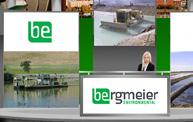














REGISTER NOW www.virtualwater.com.au PHONE 0457 846 008
Sponsors Partner REGISTER NOW FOR LIVE DAYS PLUS A FREE EXPO Virtual Water Conference and Exhibition 24/7 - 365 DAYS OPEN ACCESS TO 50 ON-DEMAND OVER SESSIONS FREE ACCESS FOR ALL 24/7 - 365 DAYS


